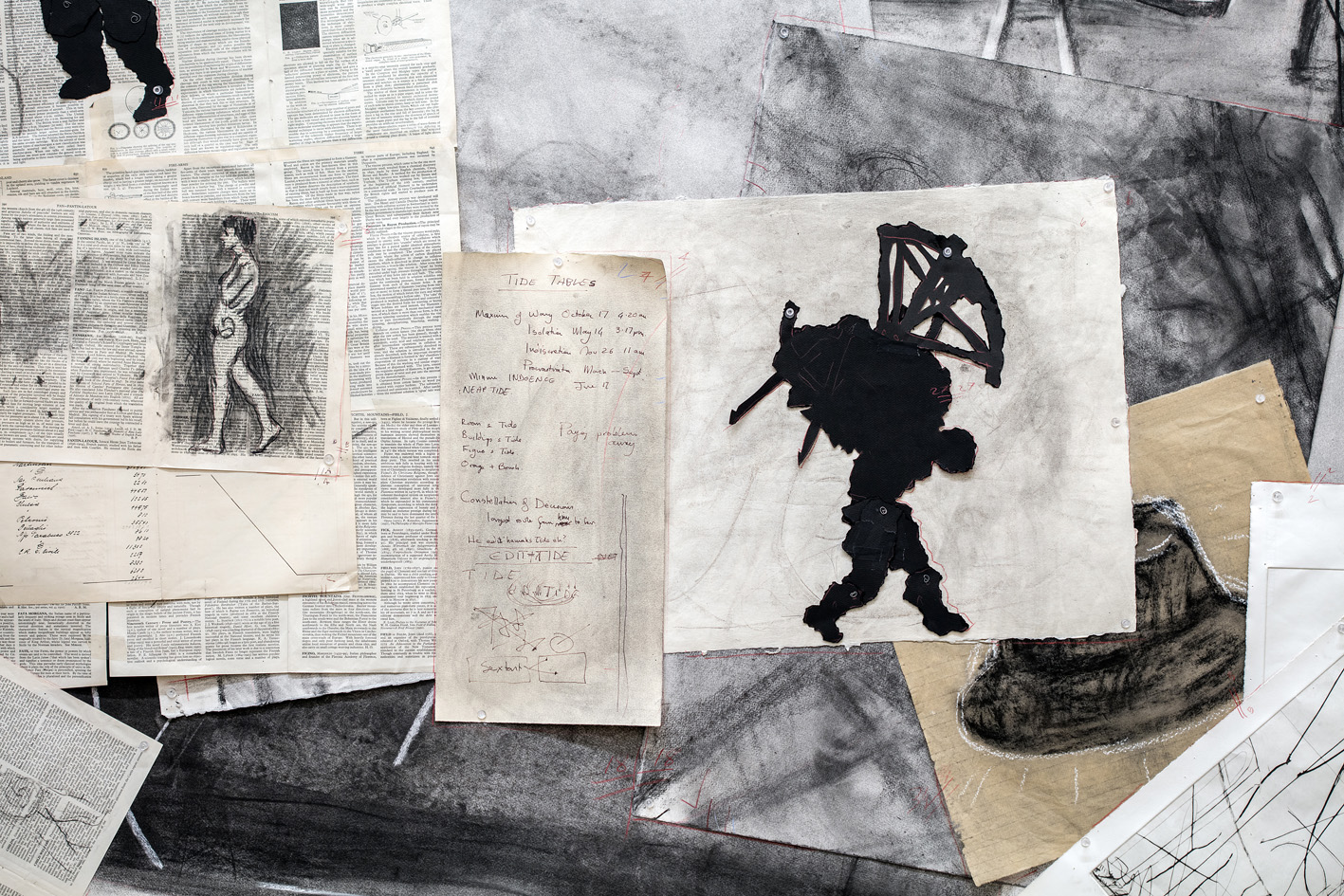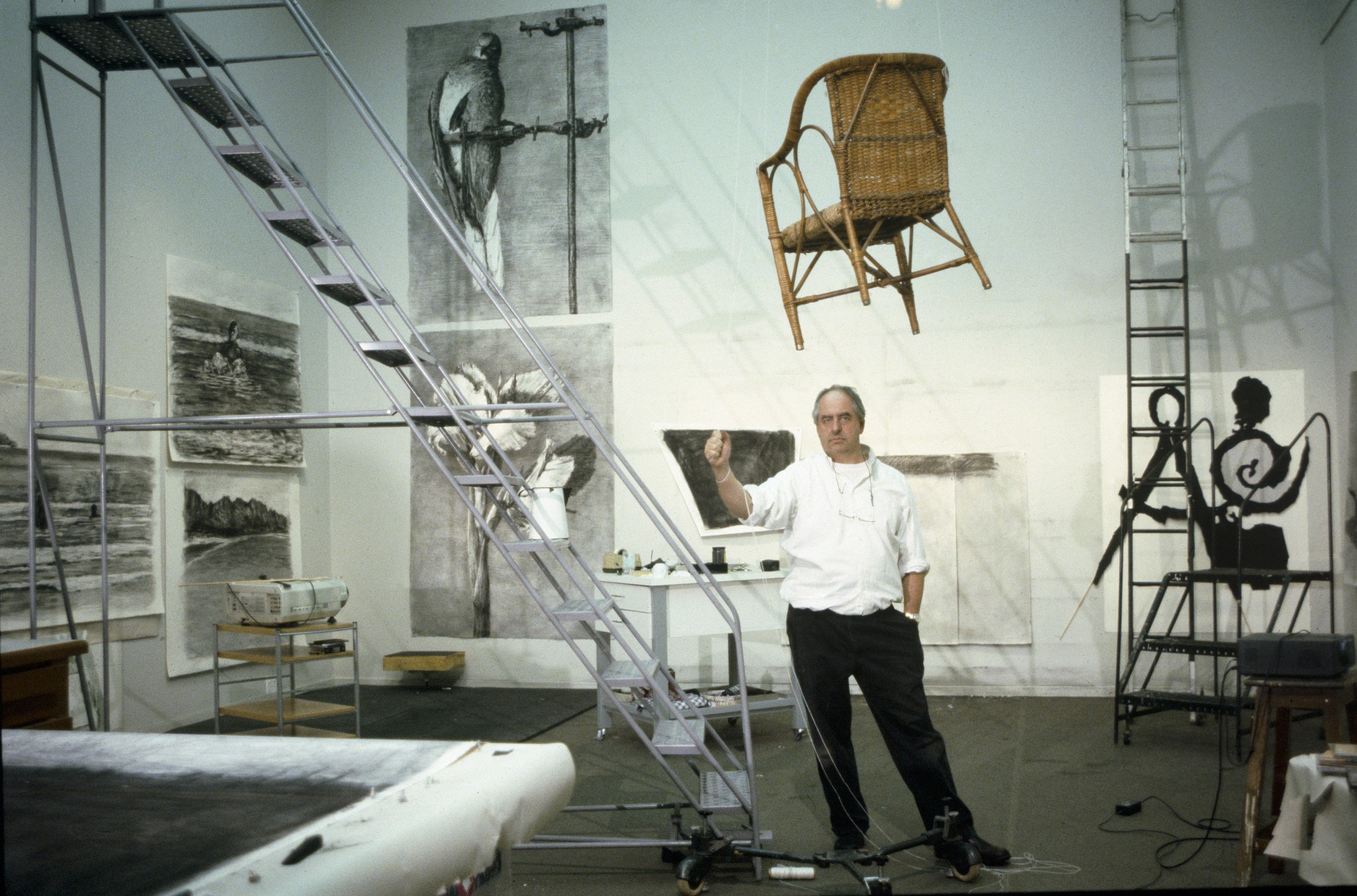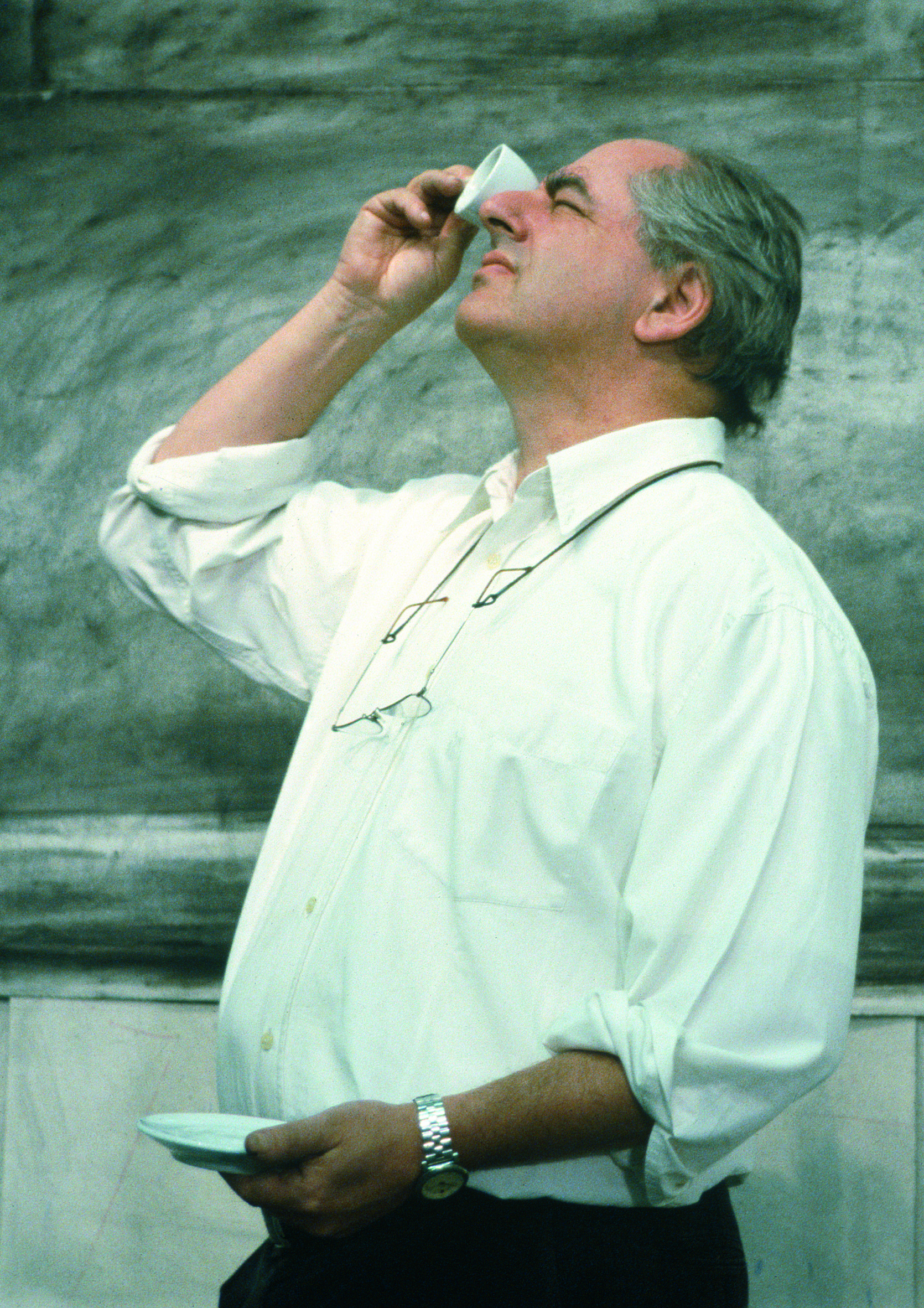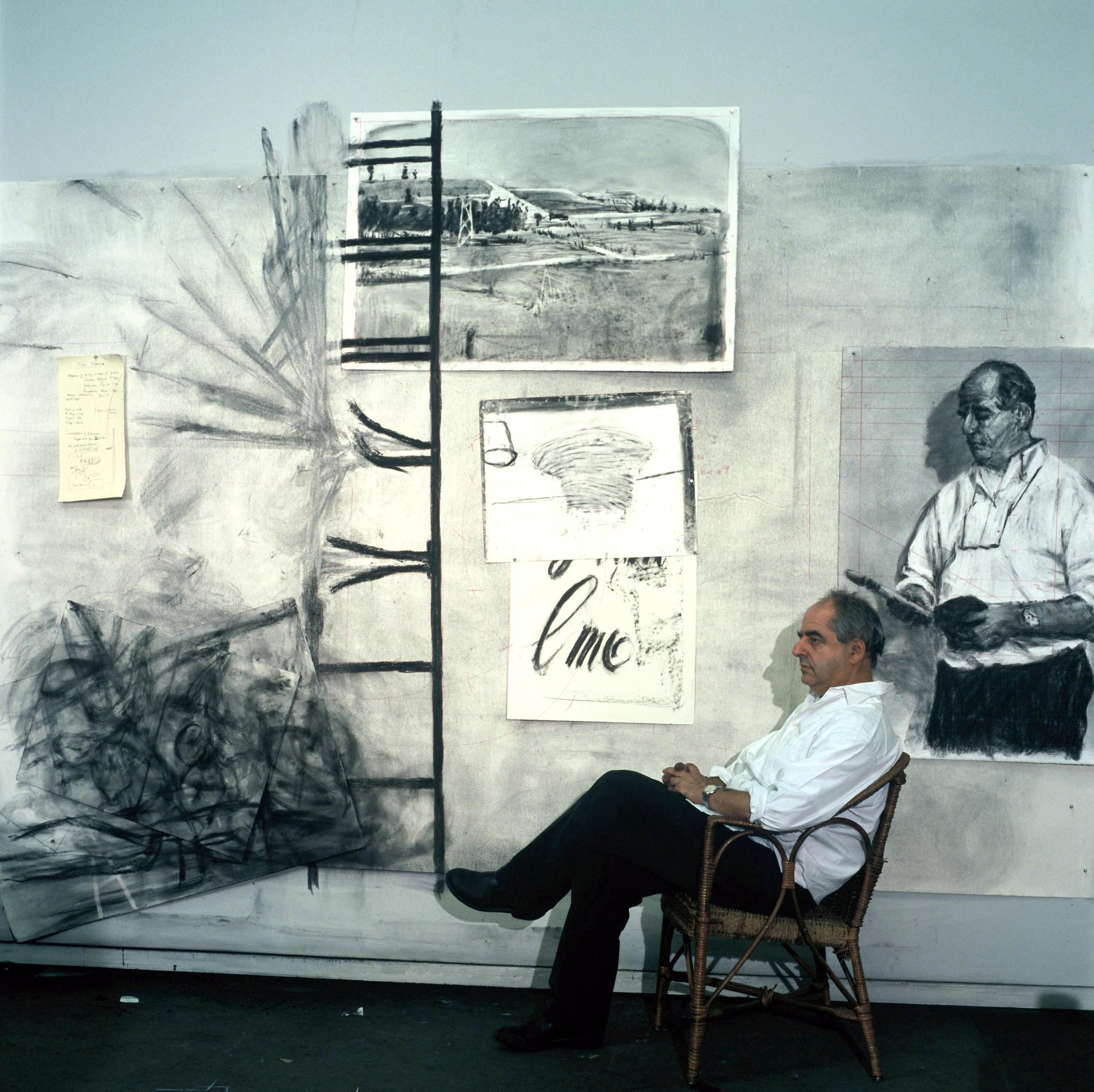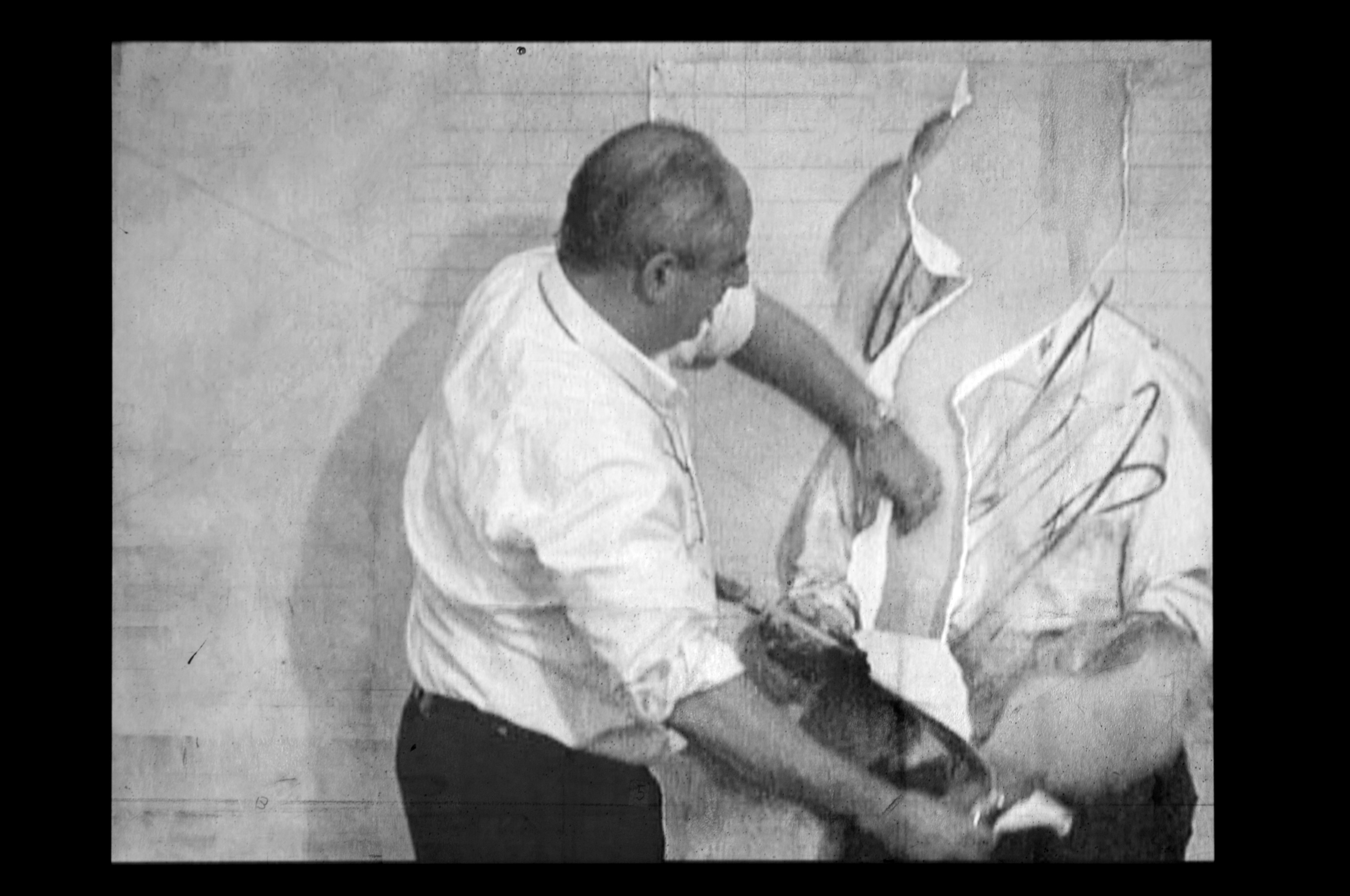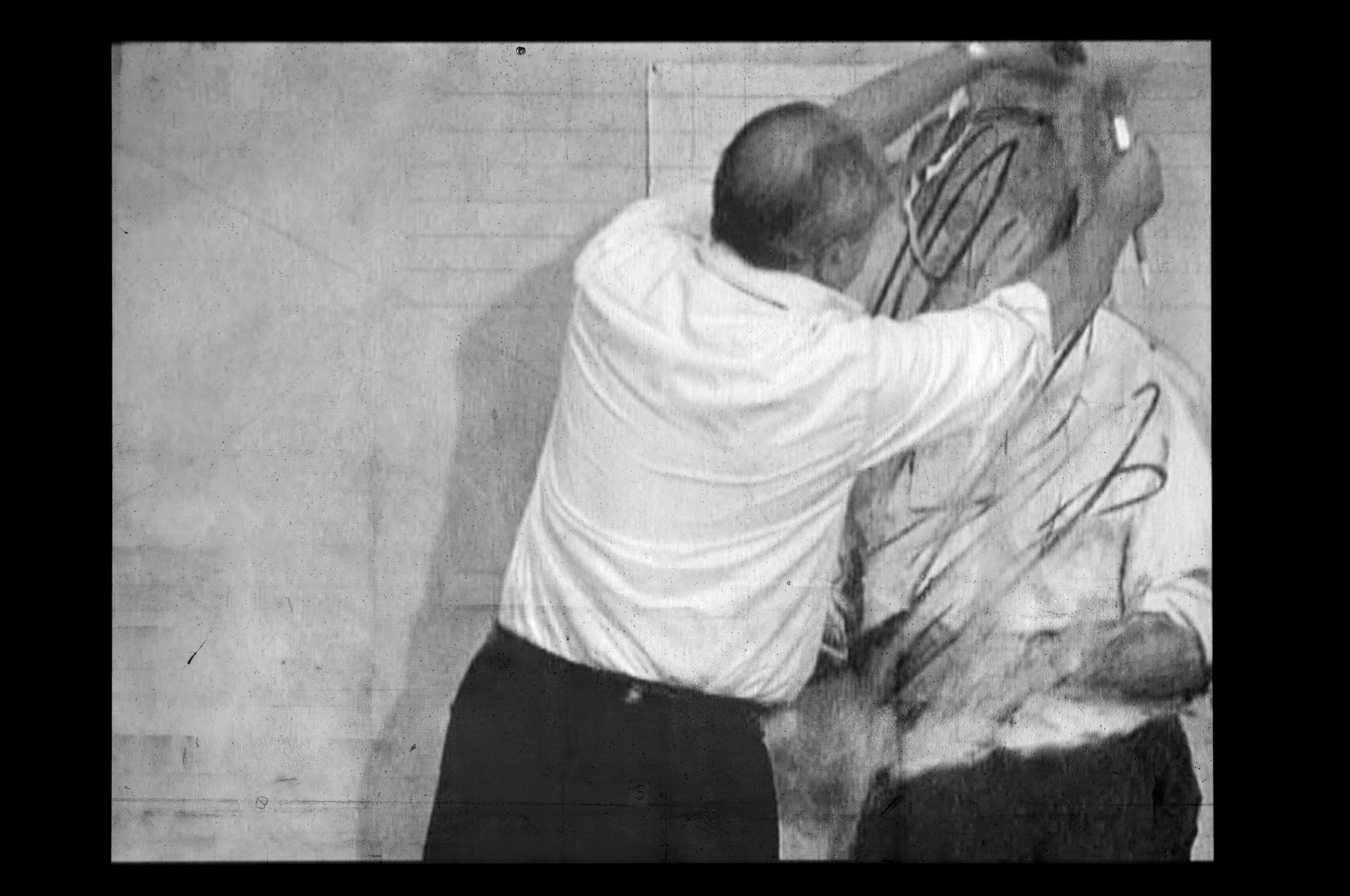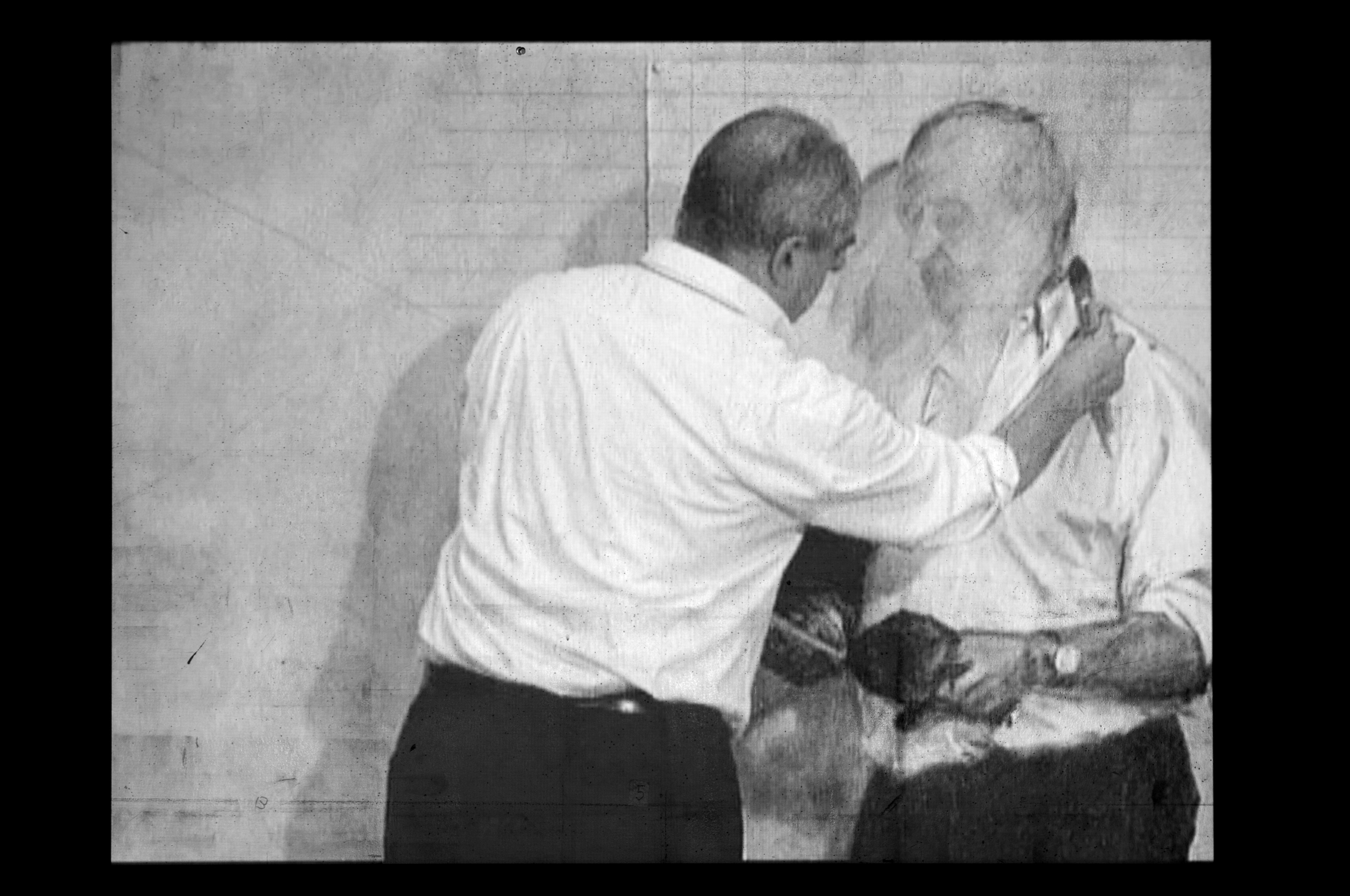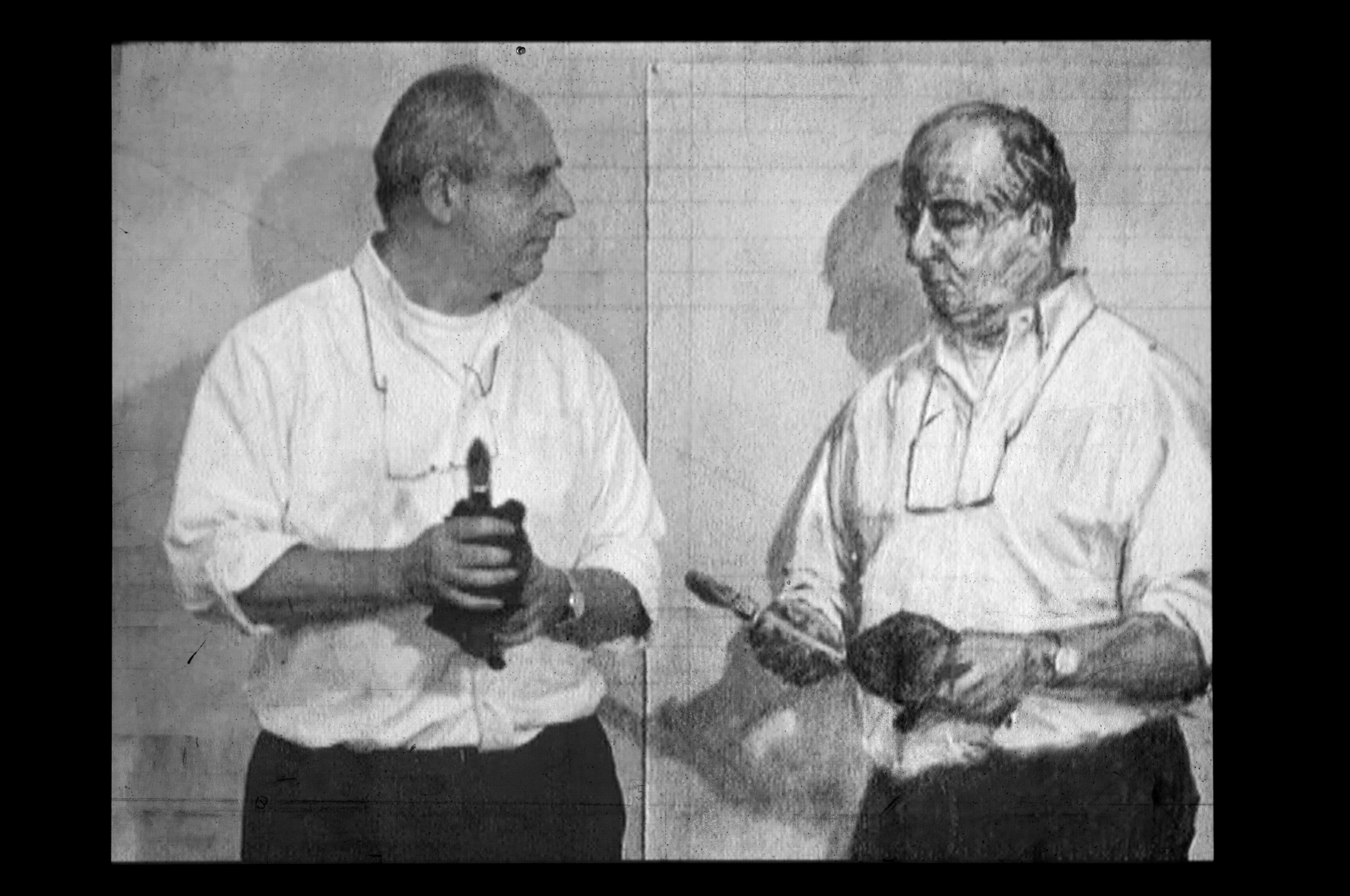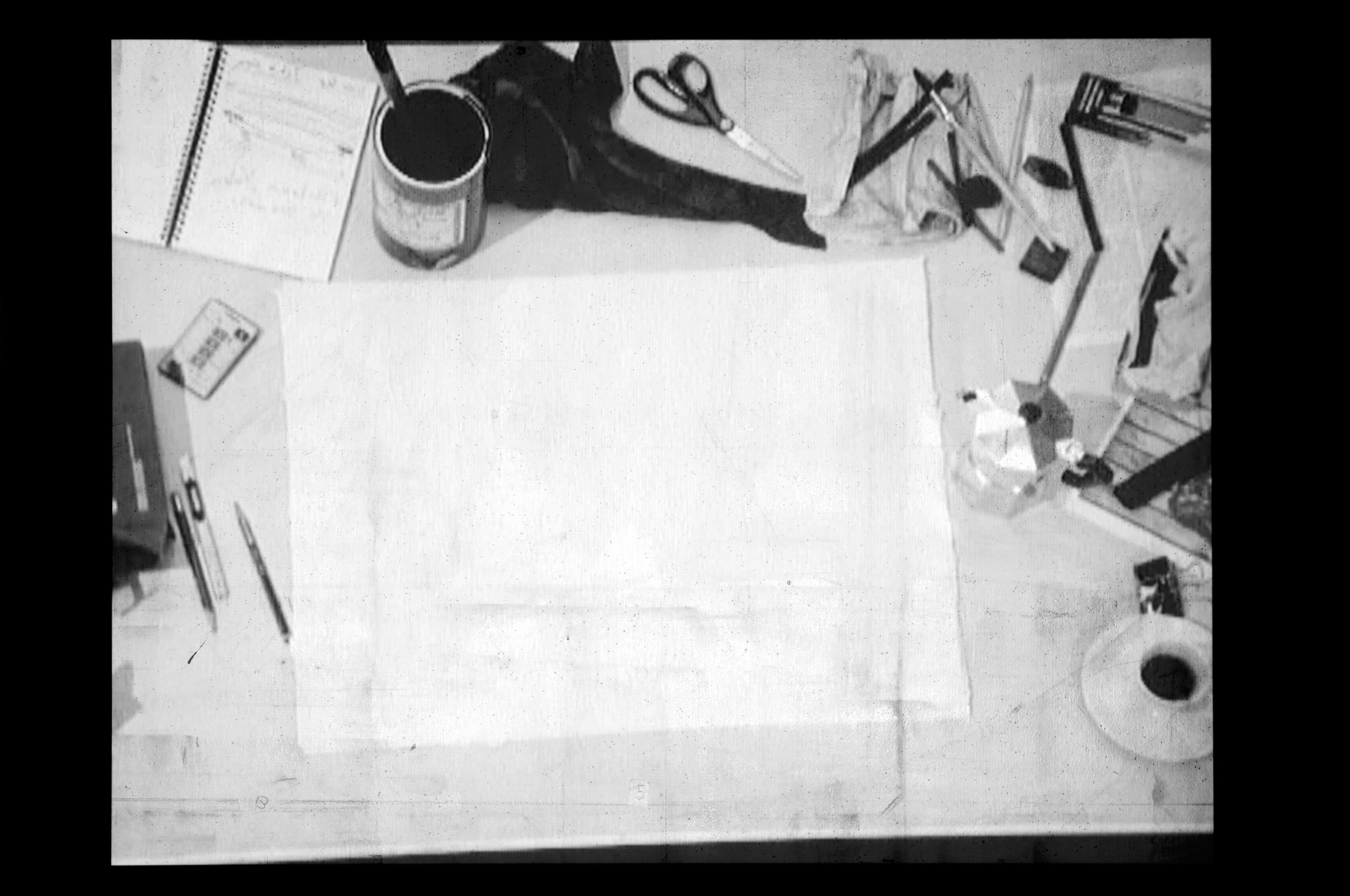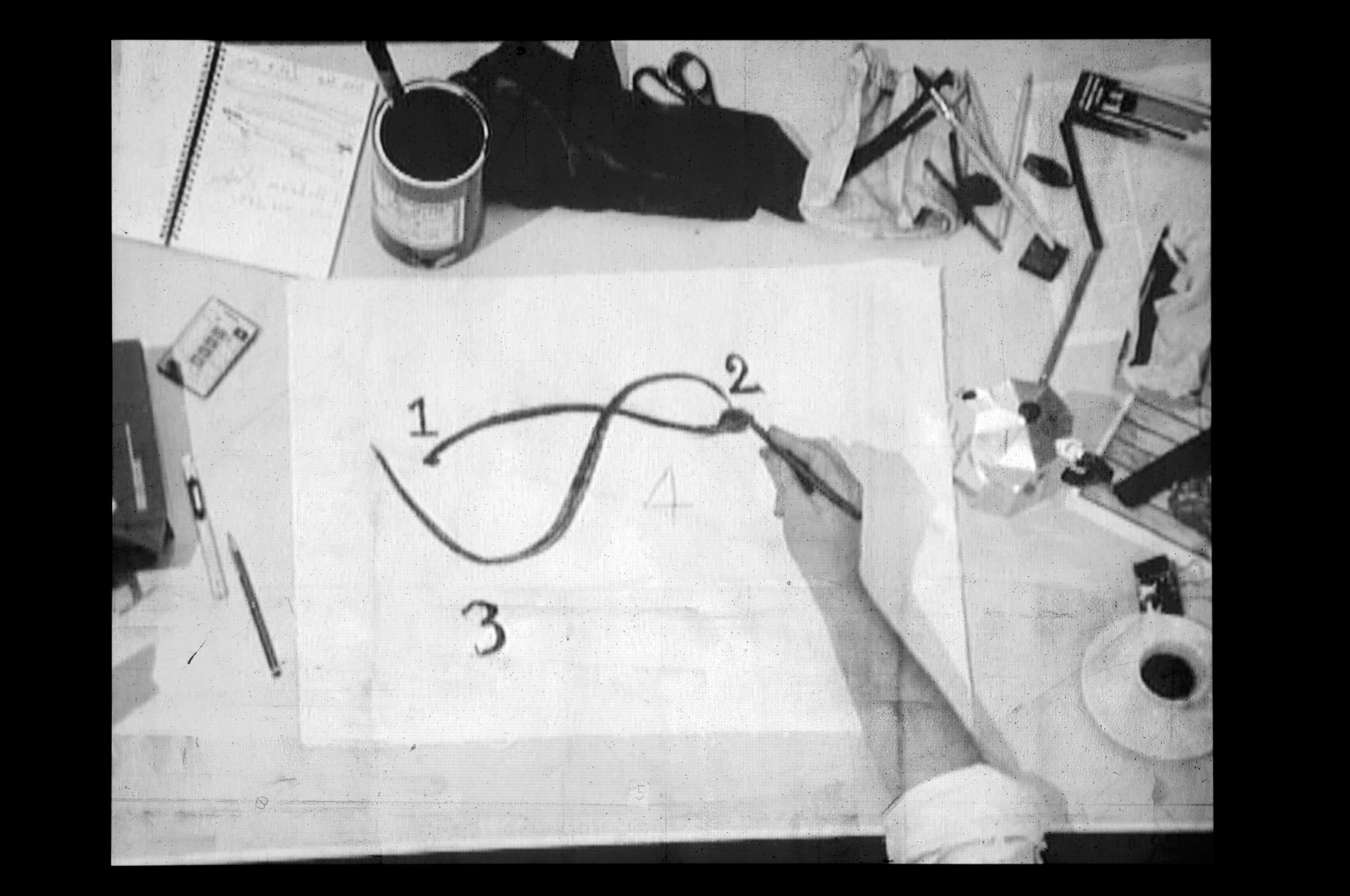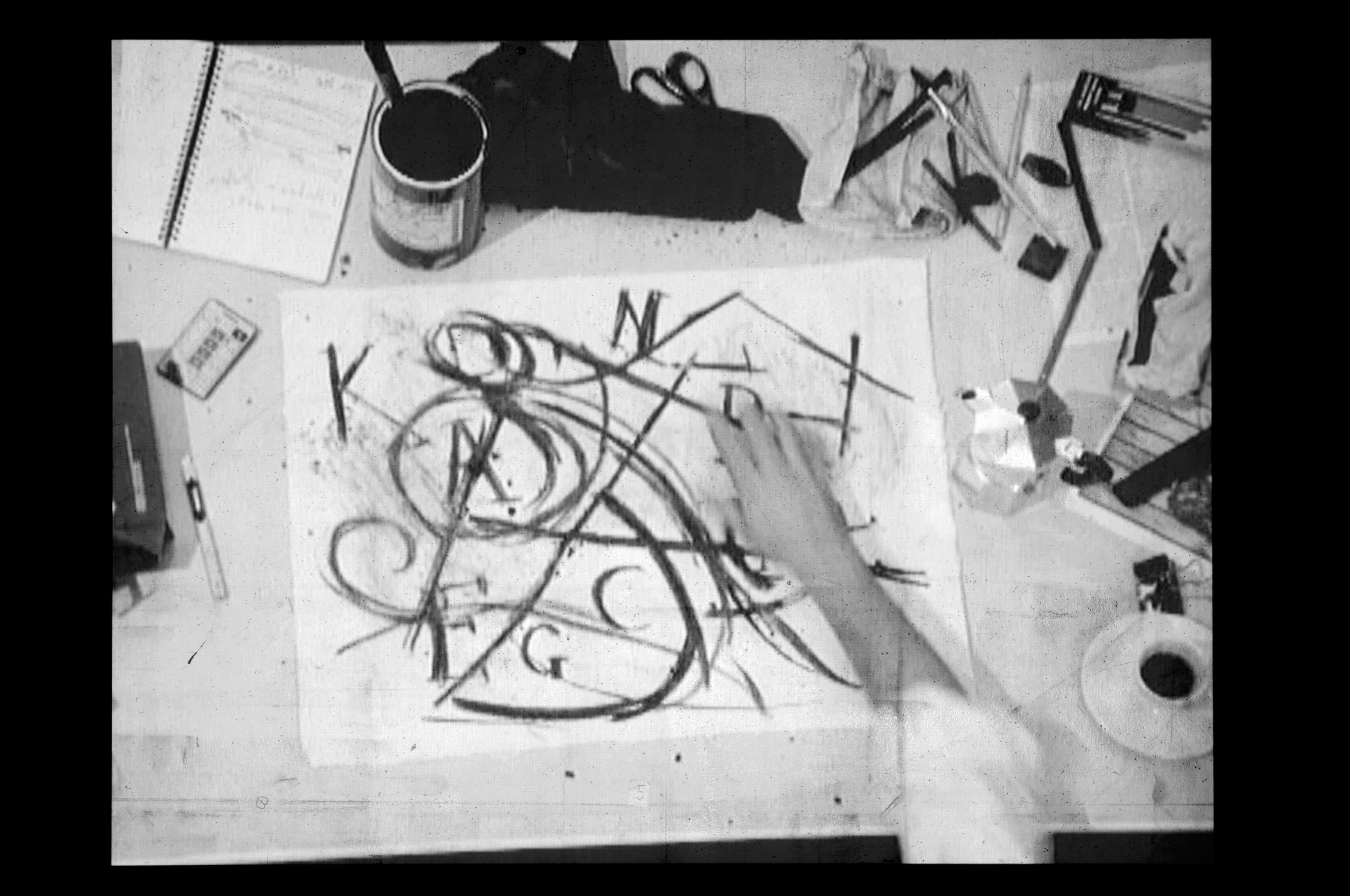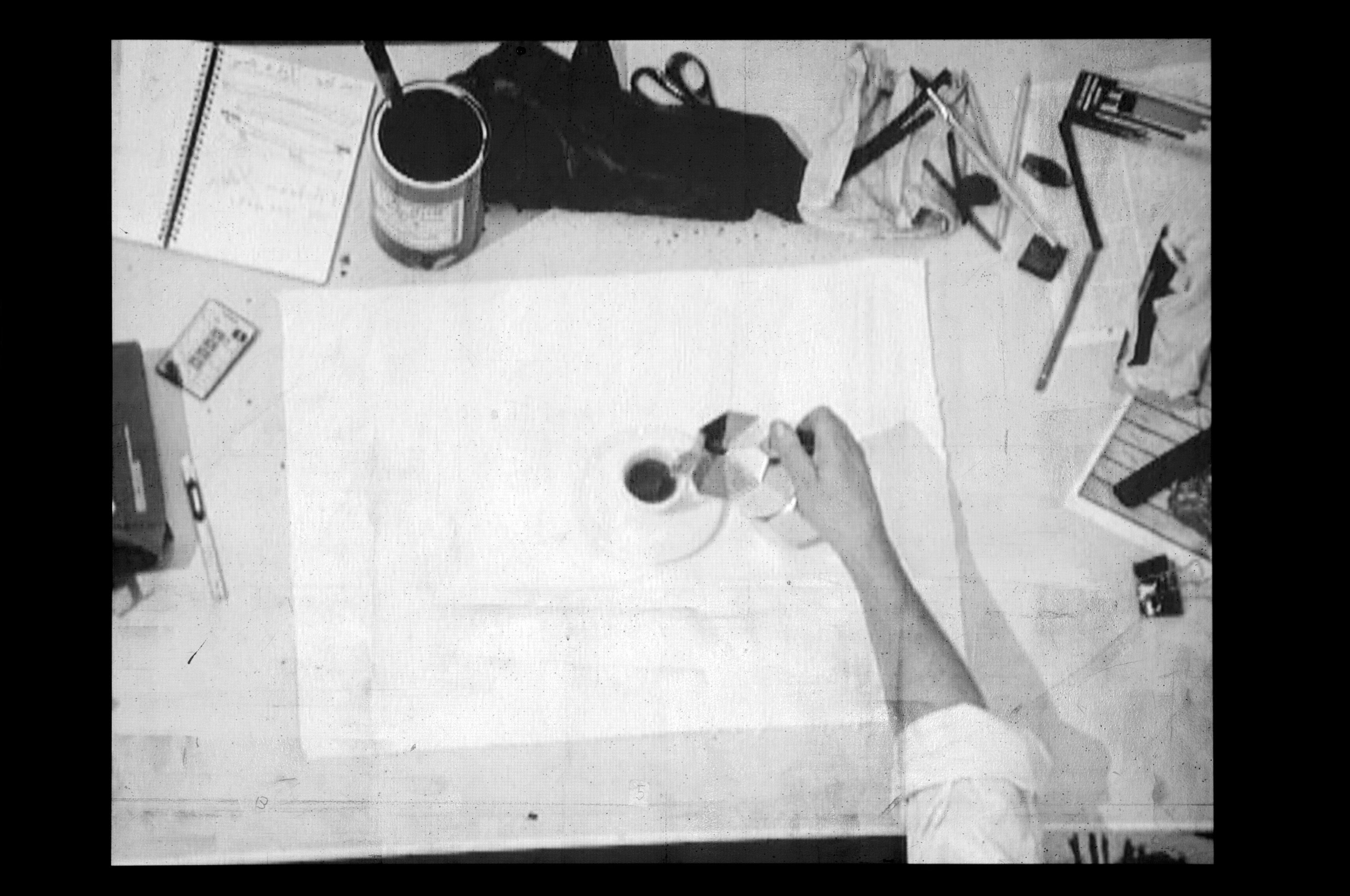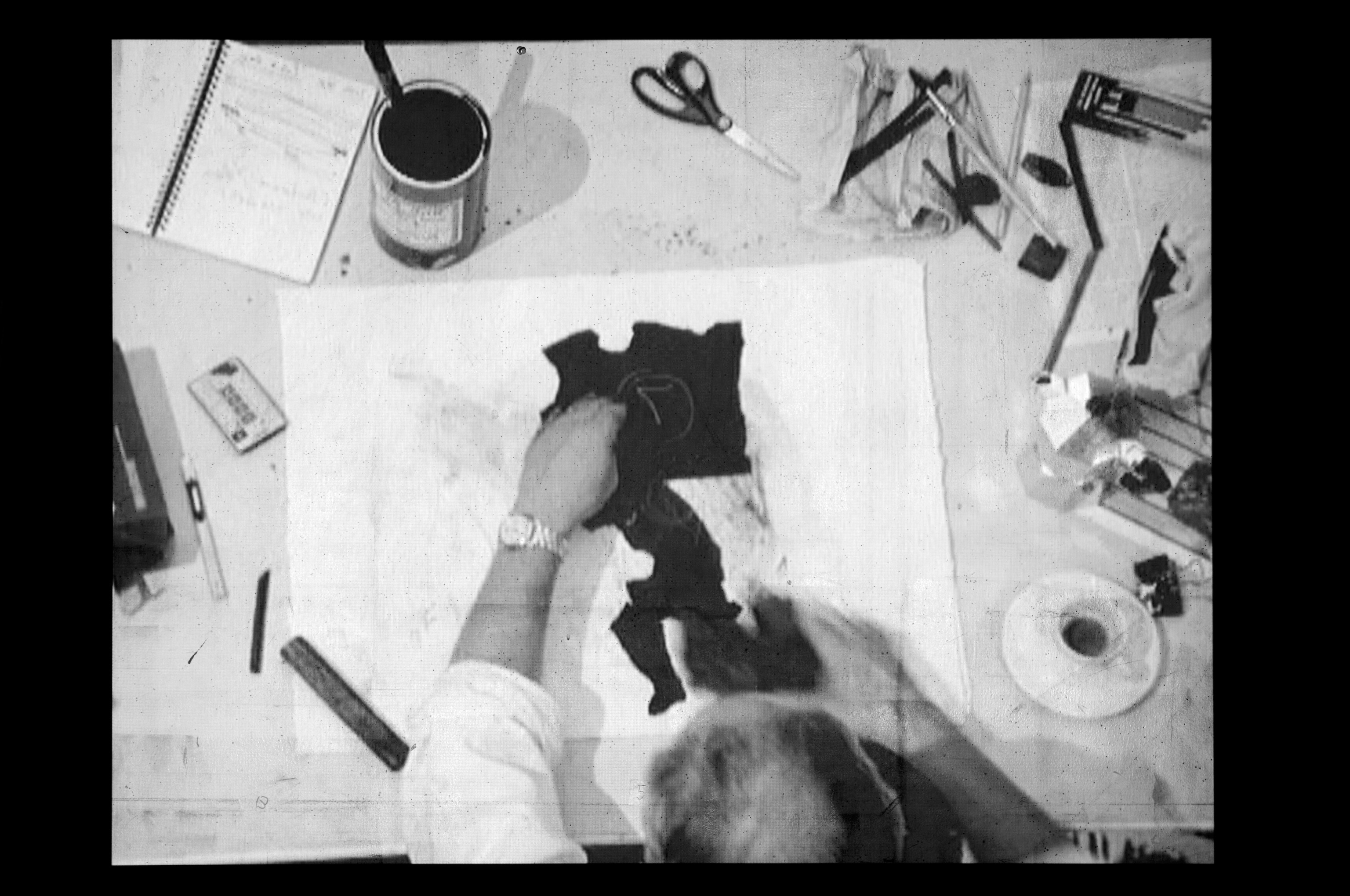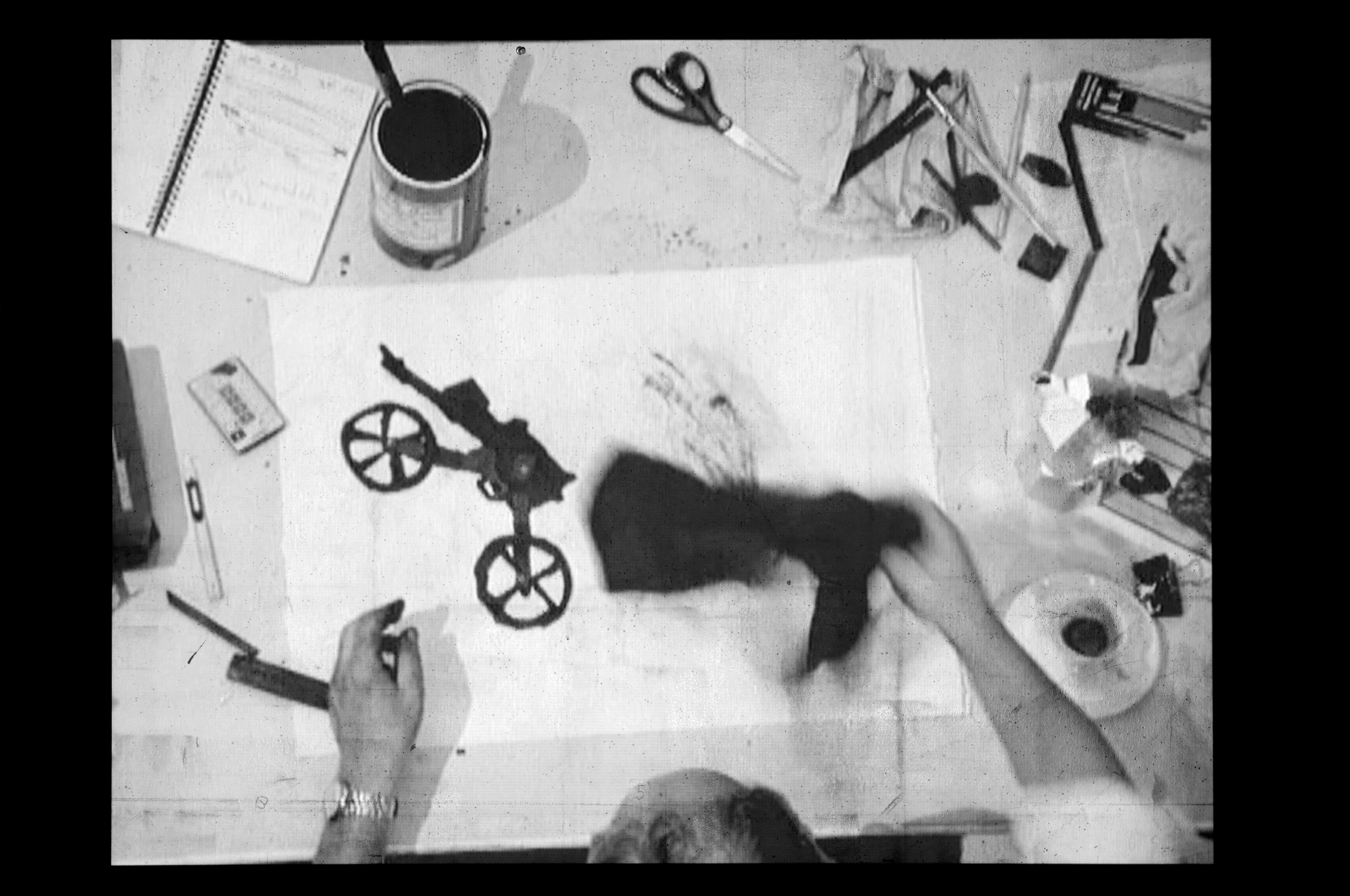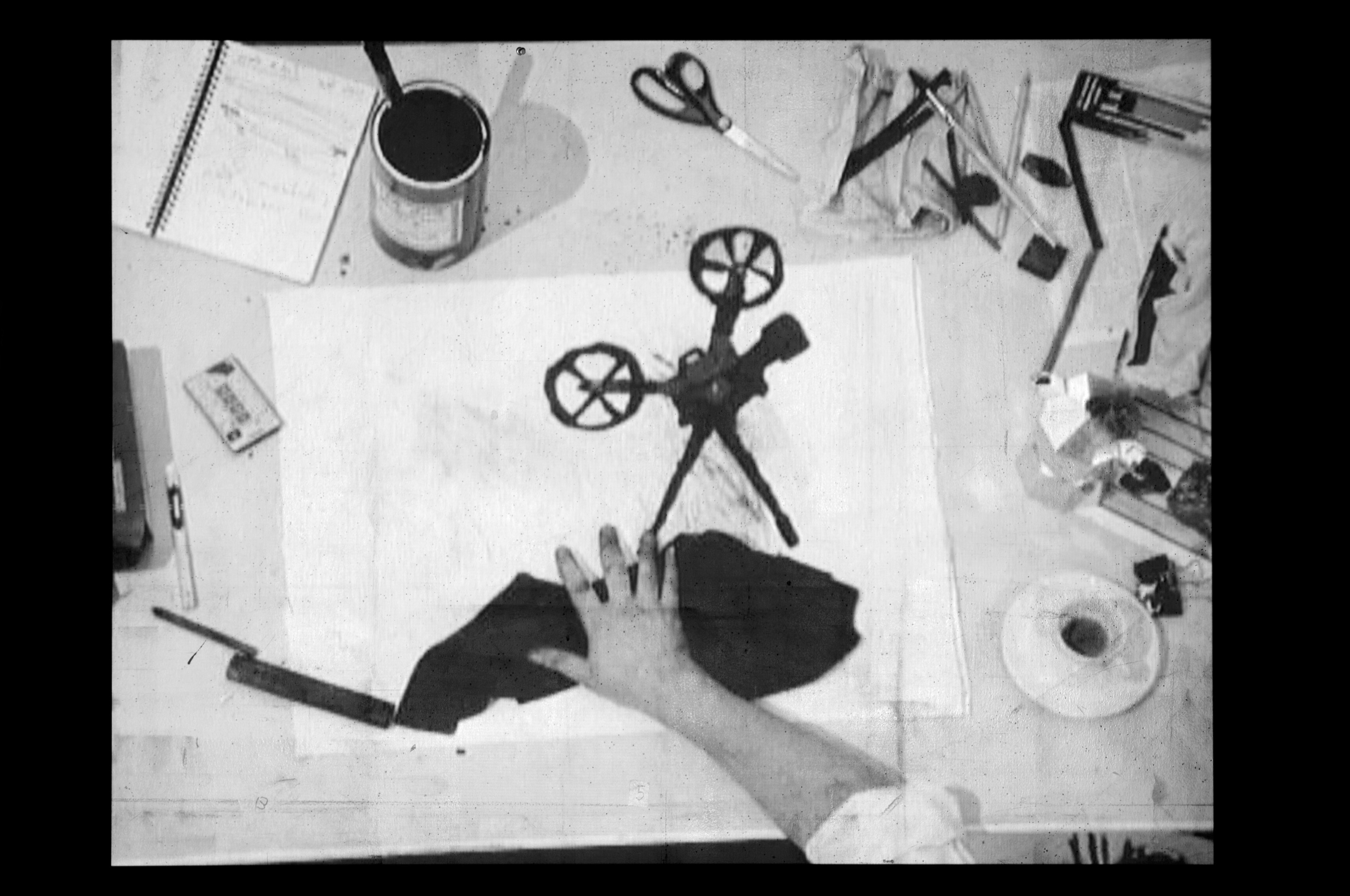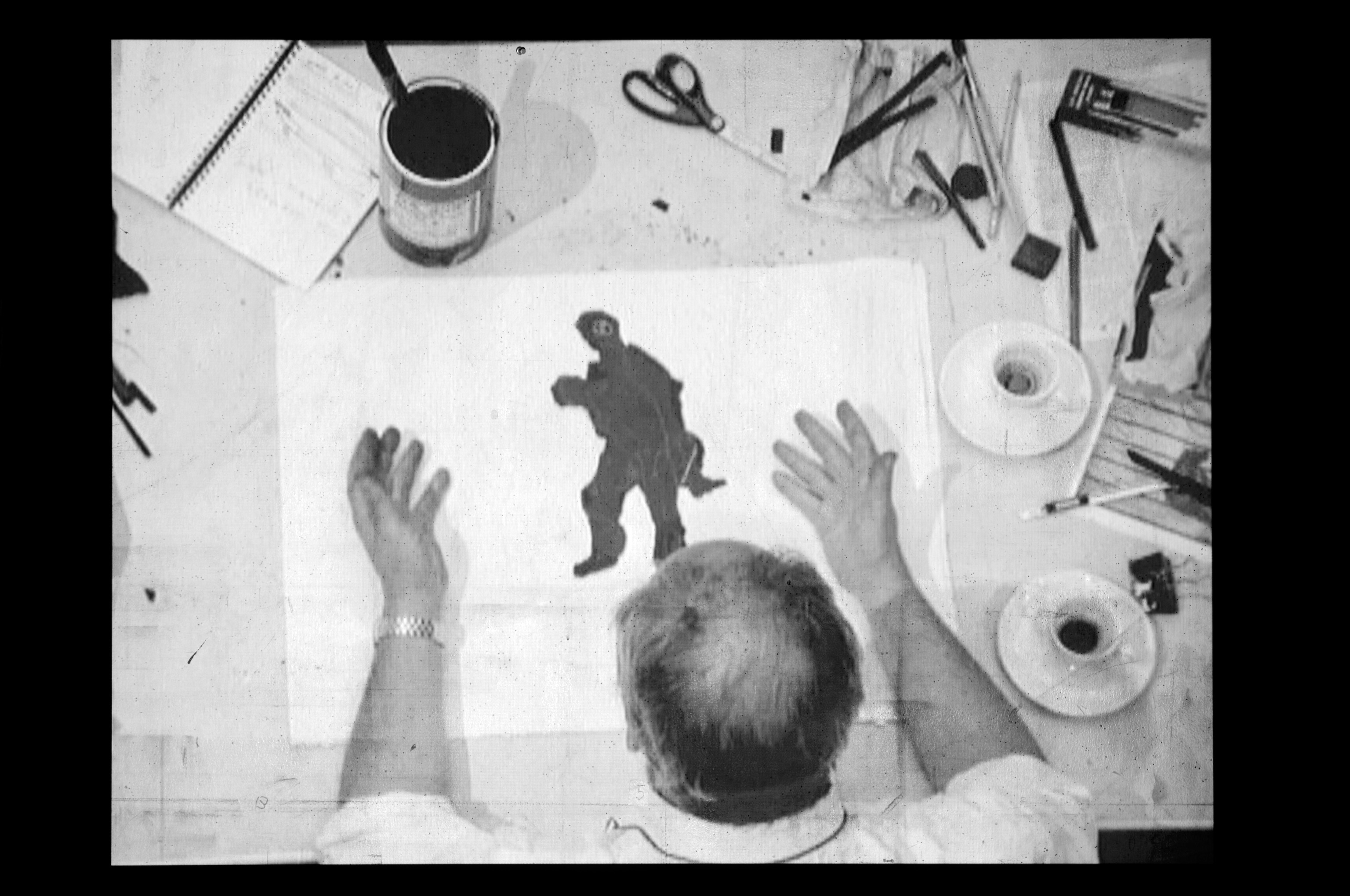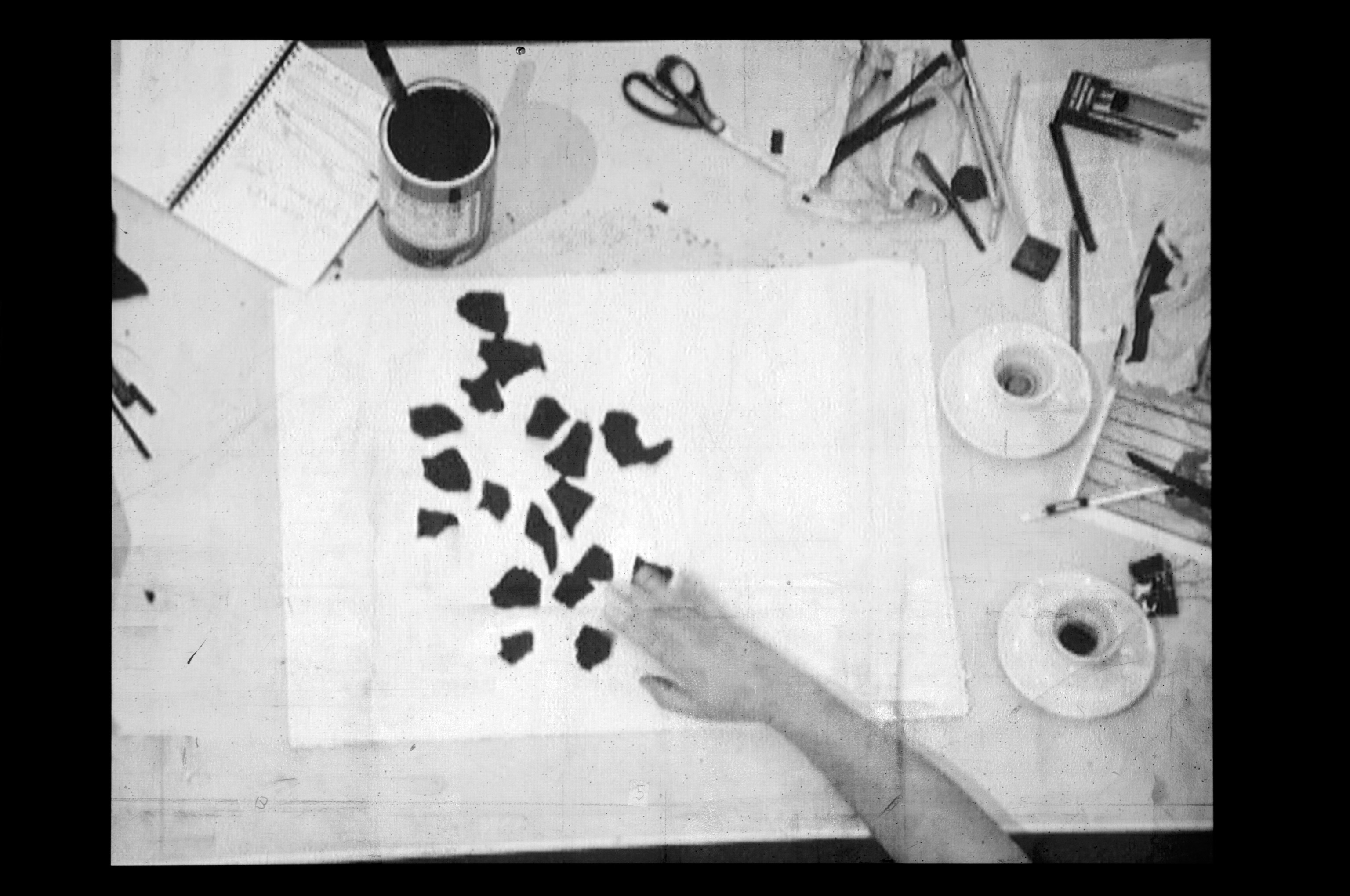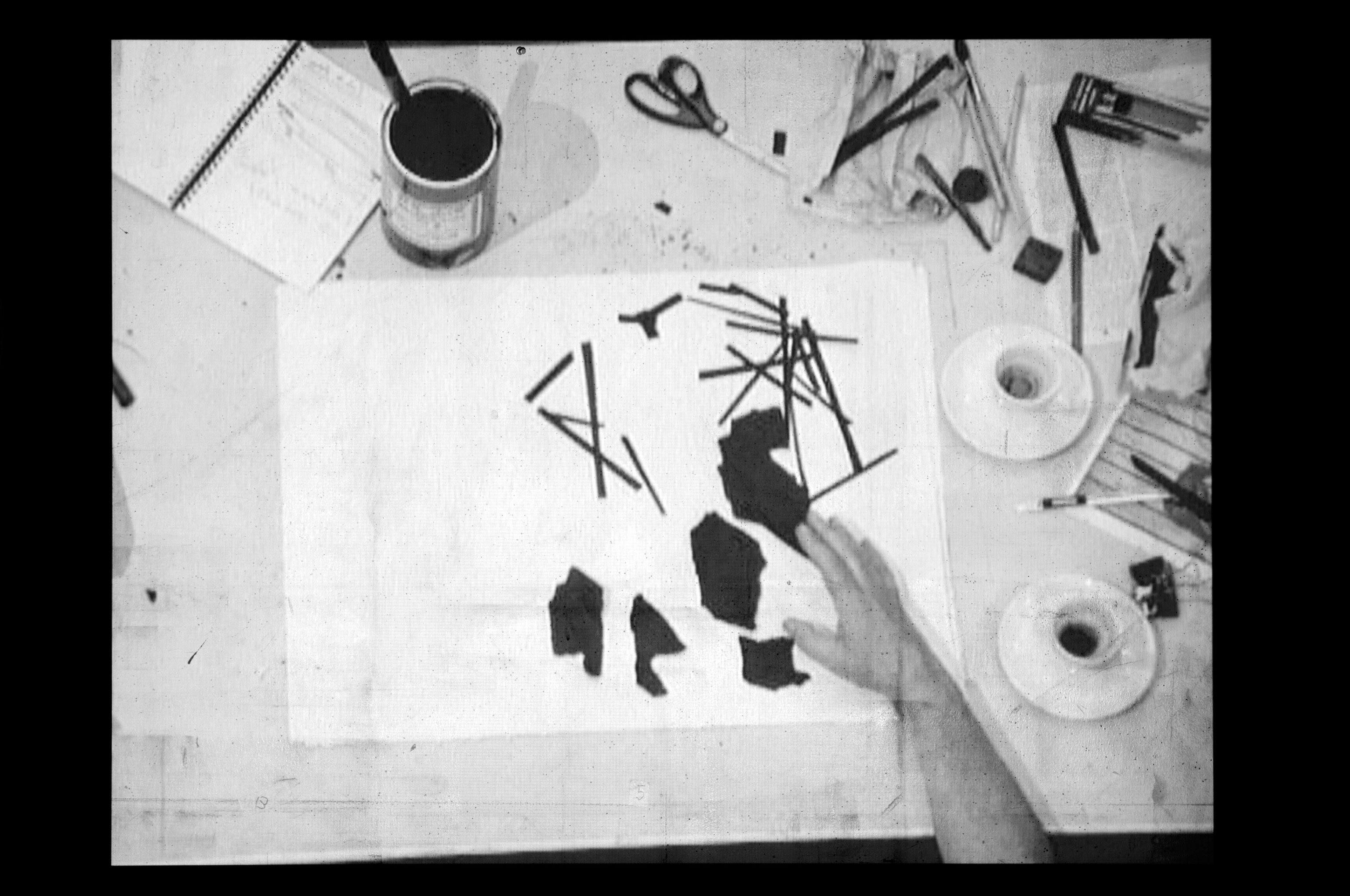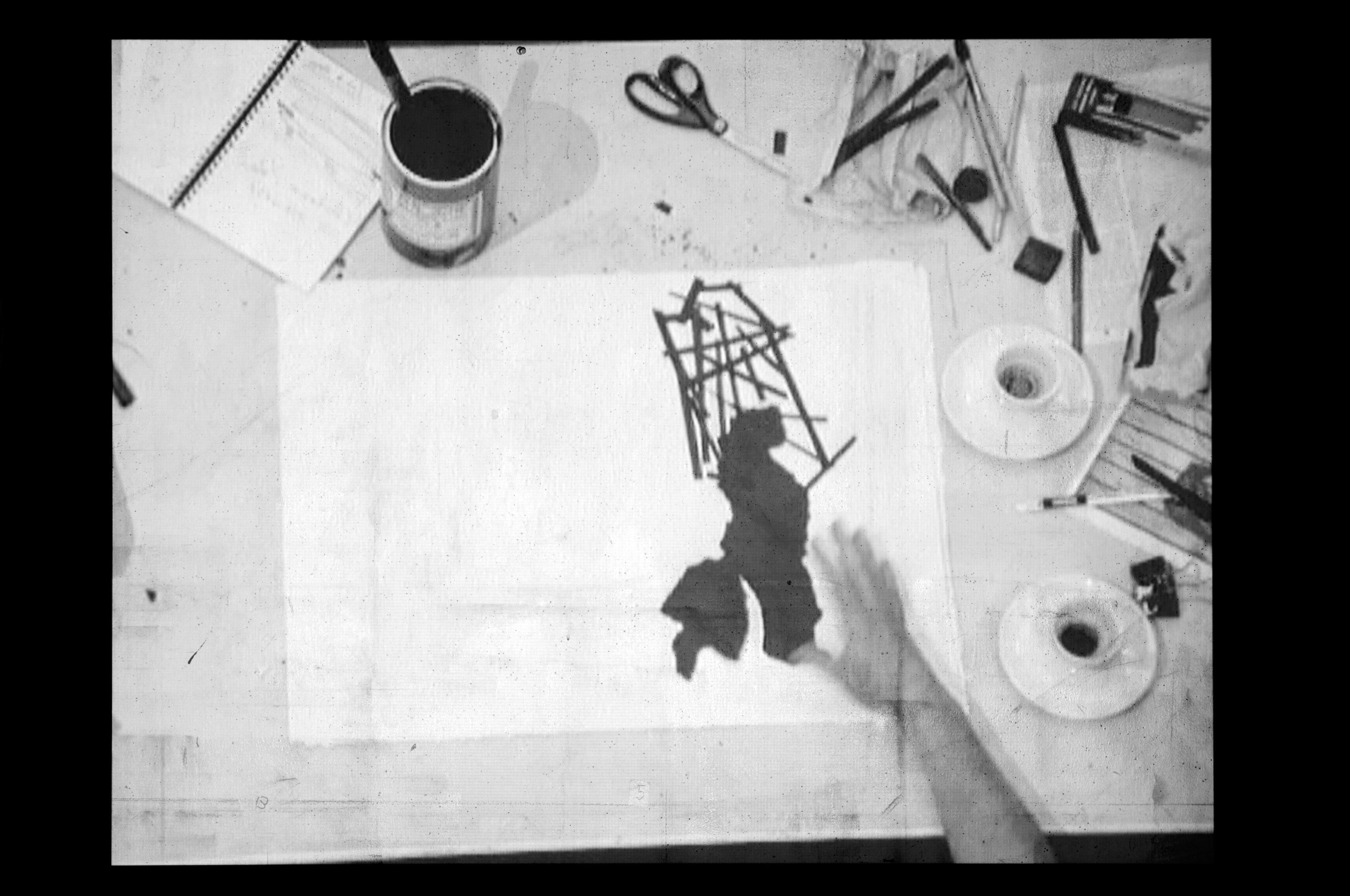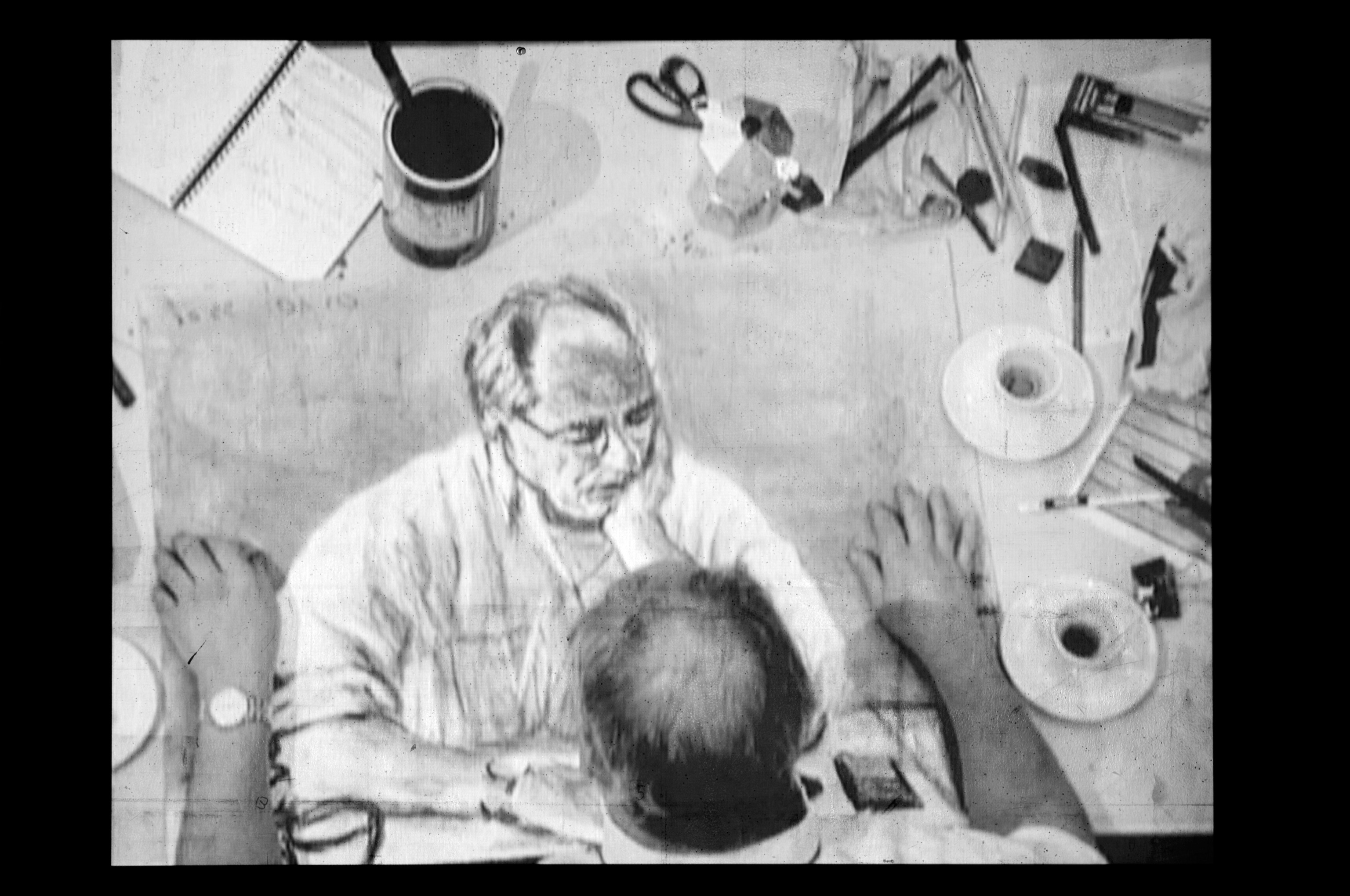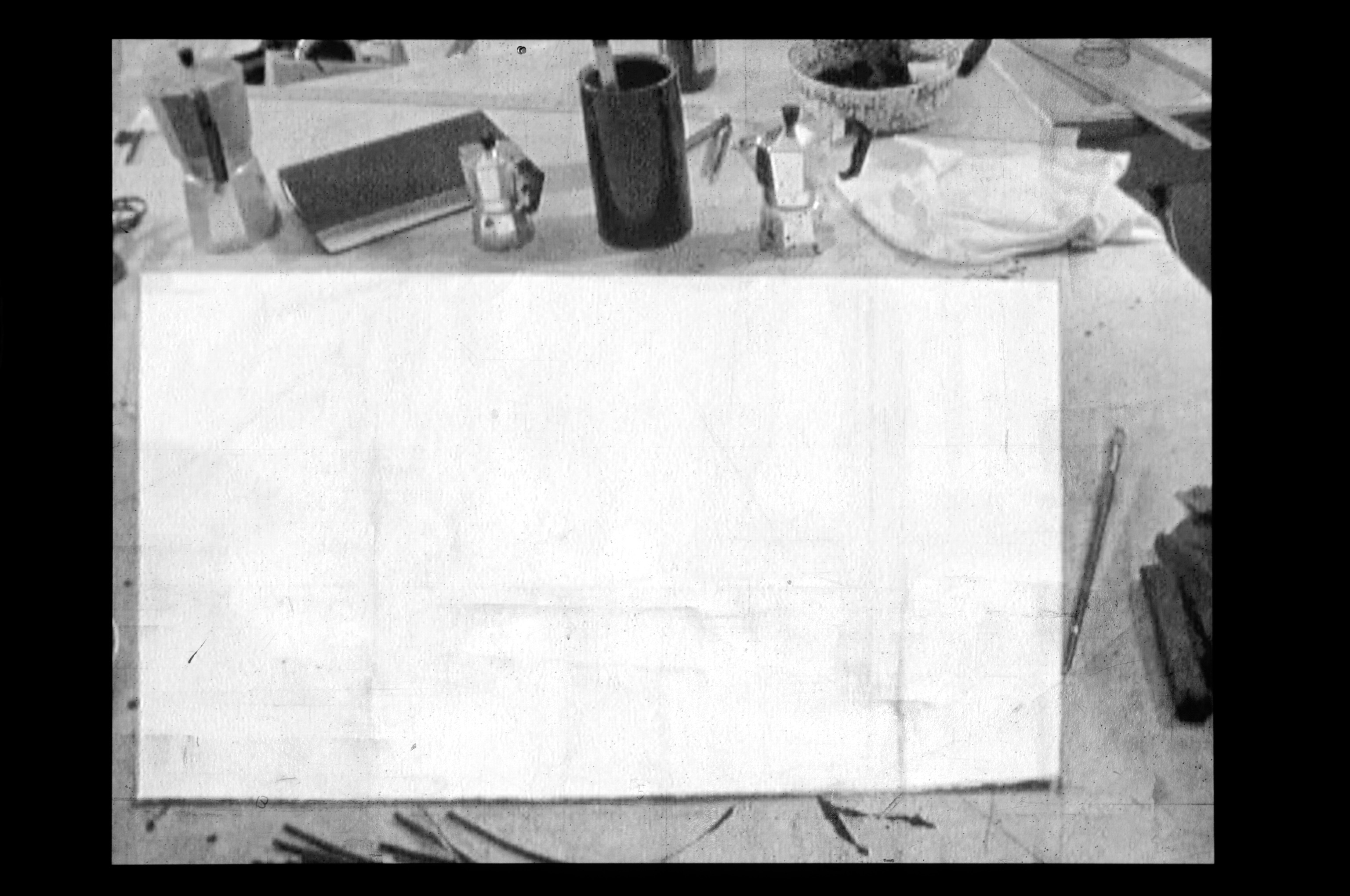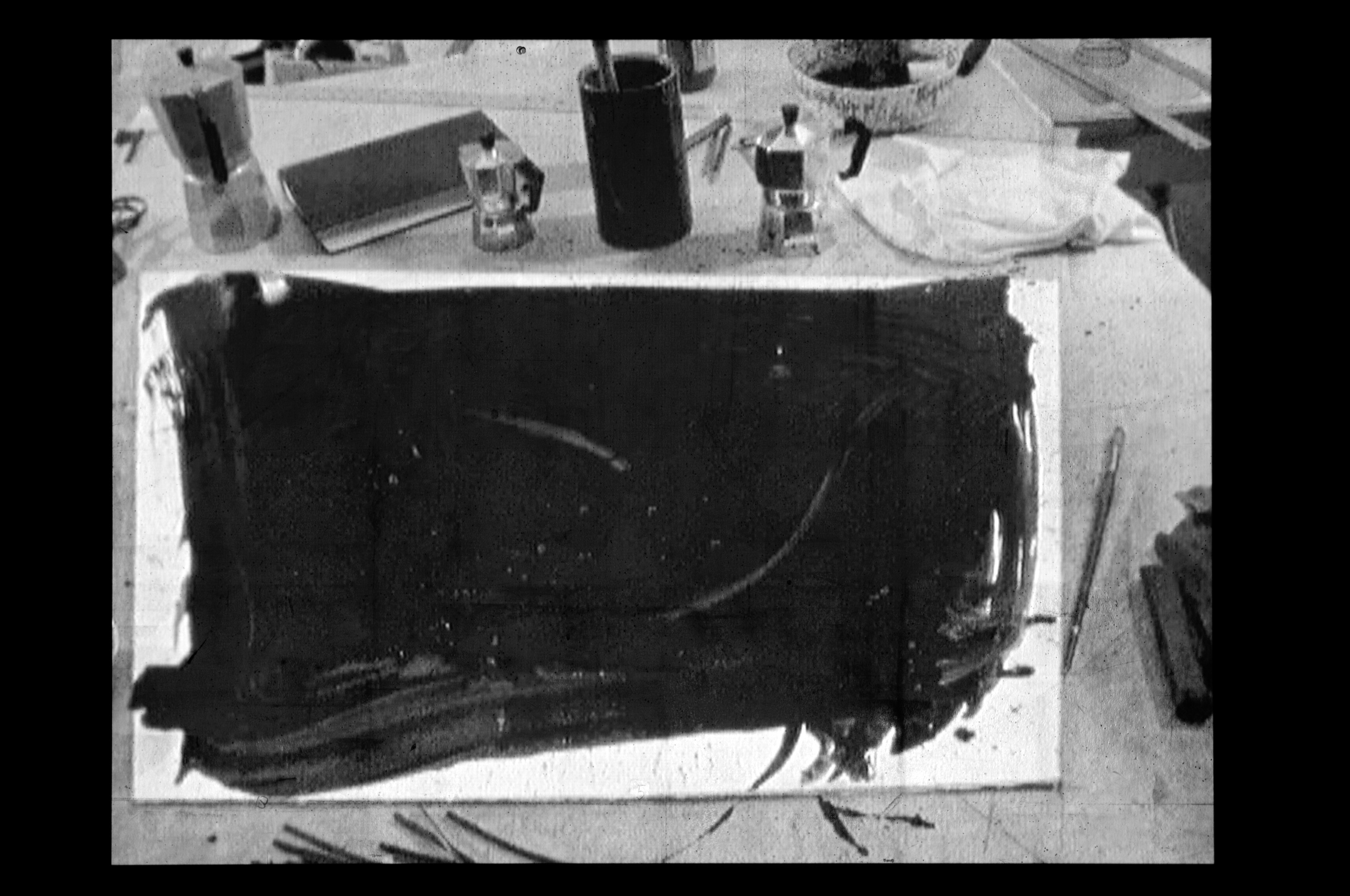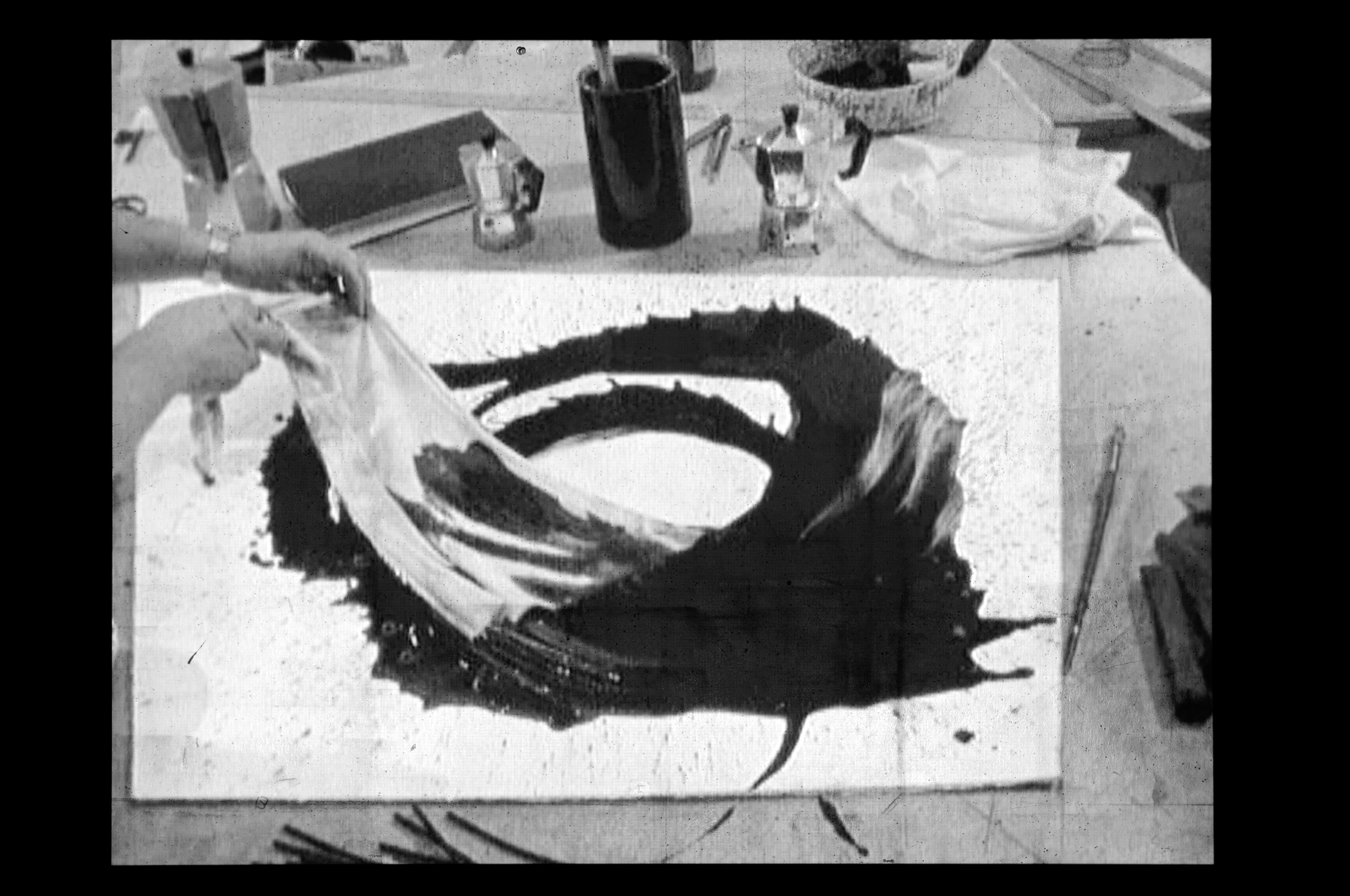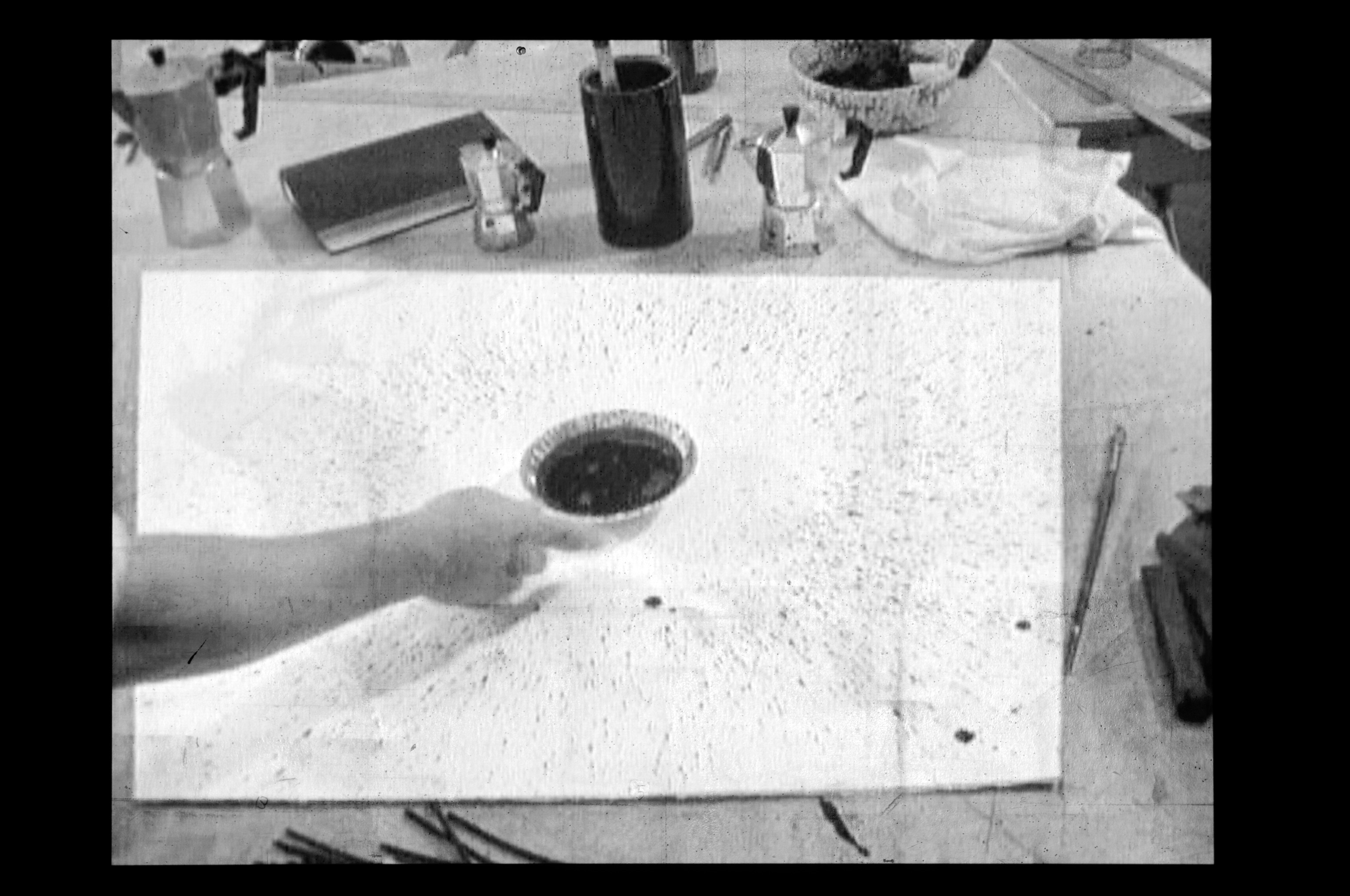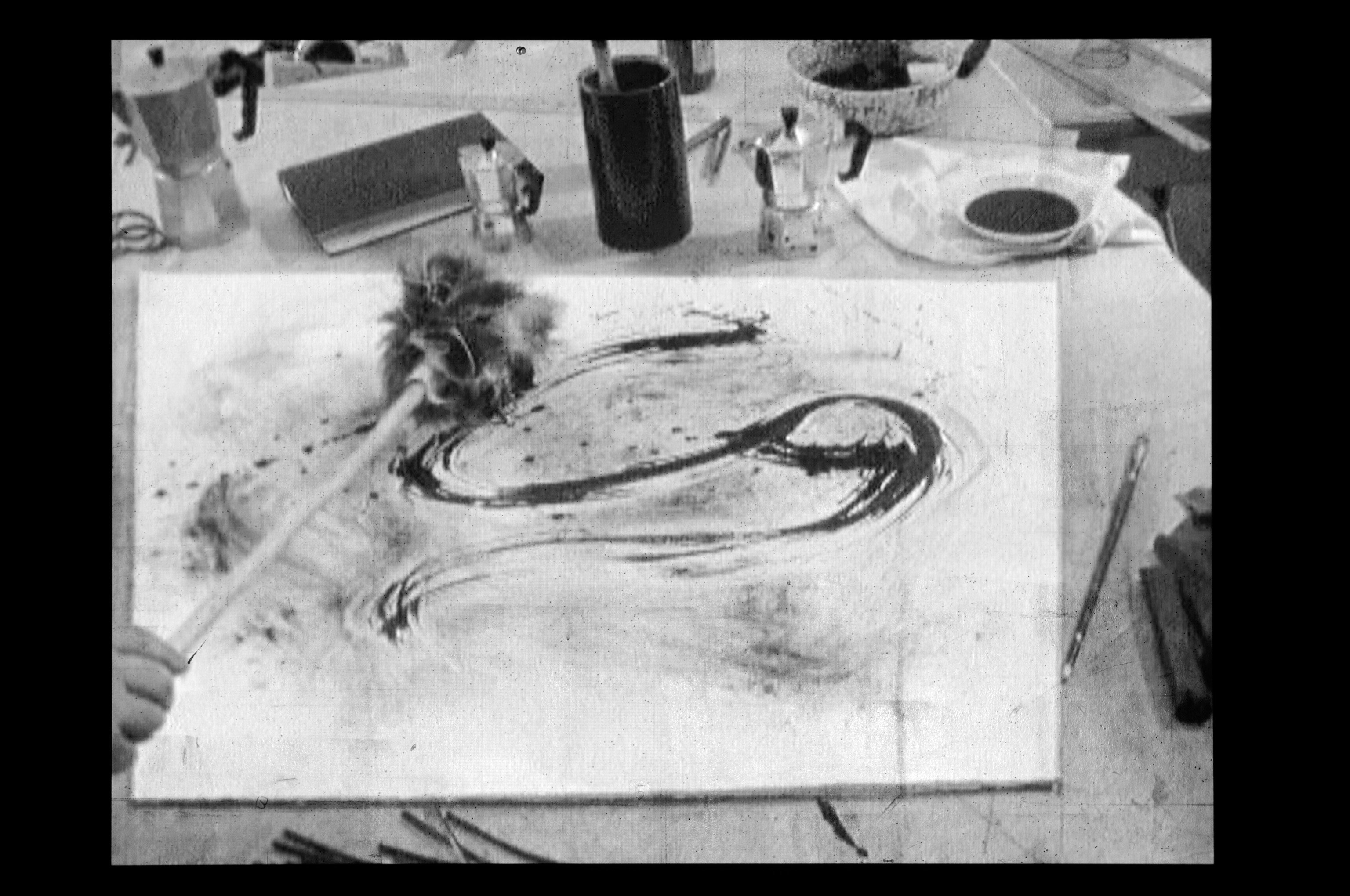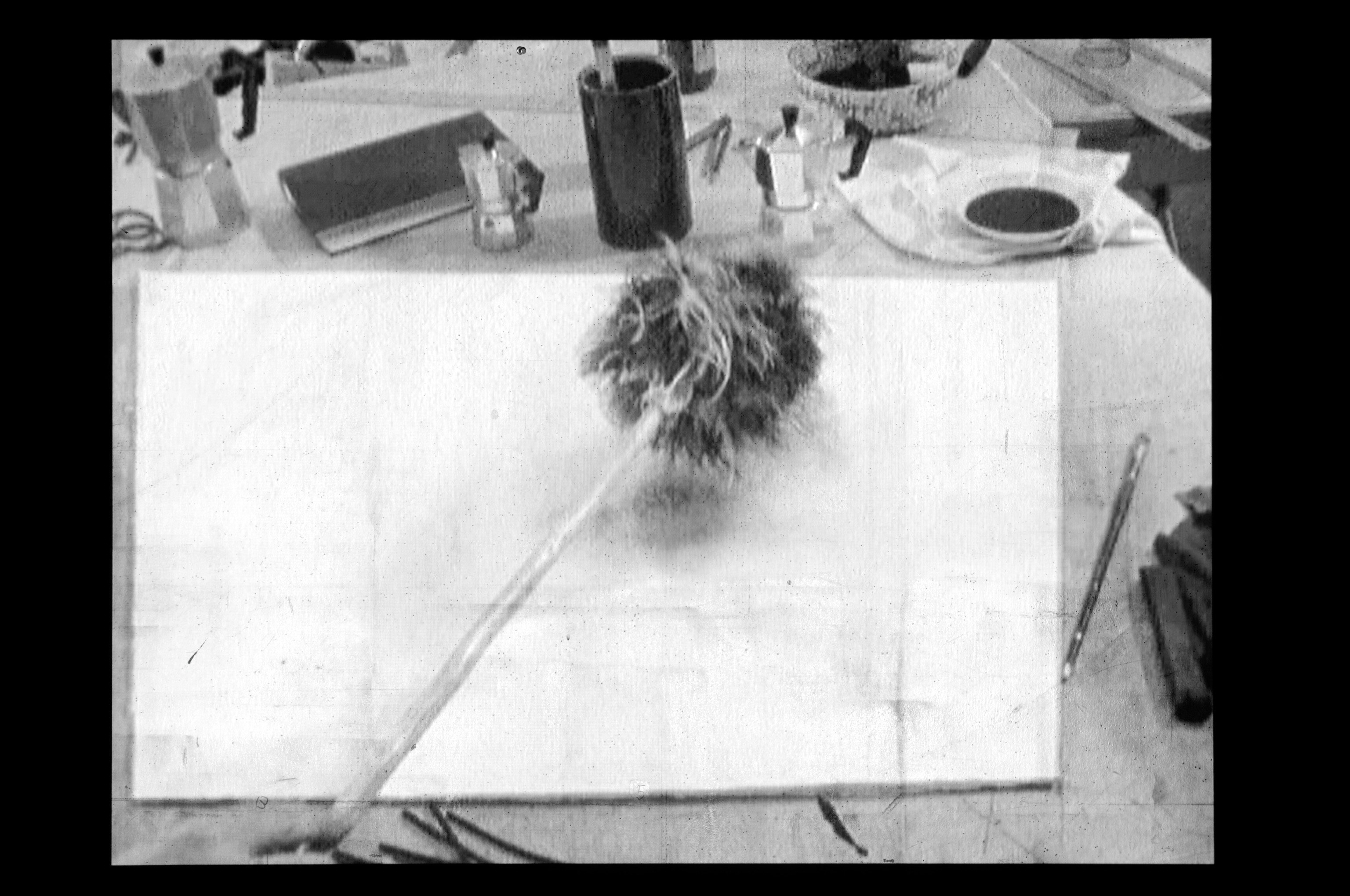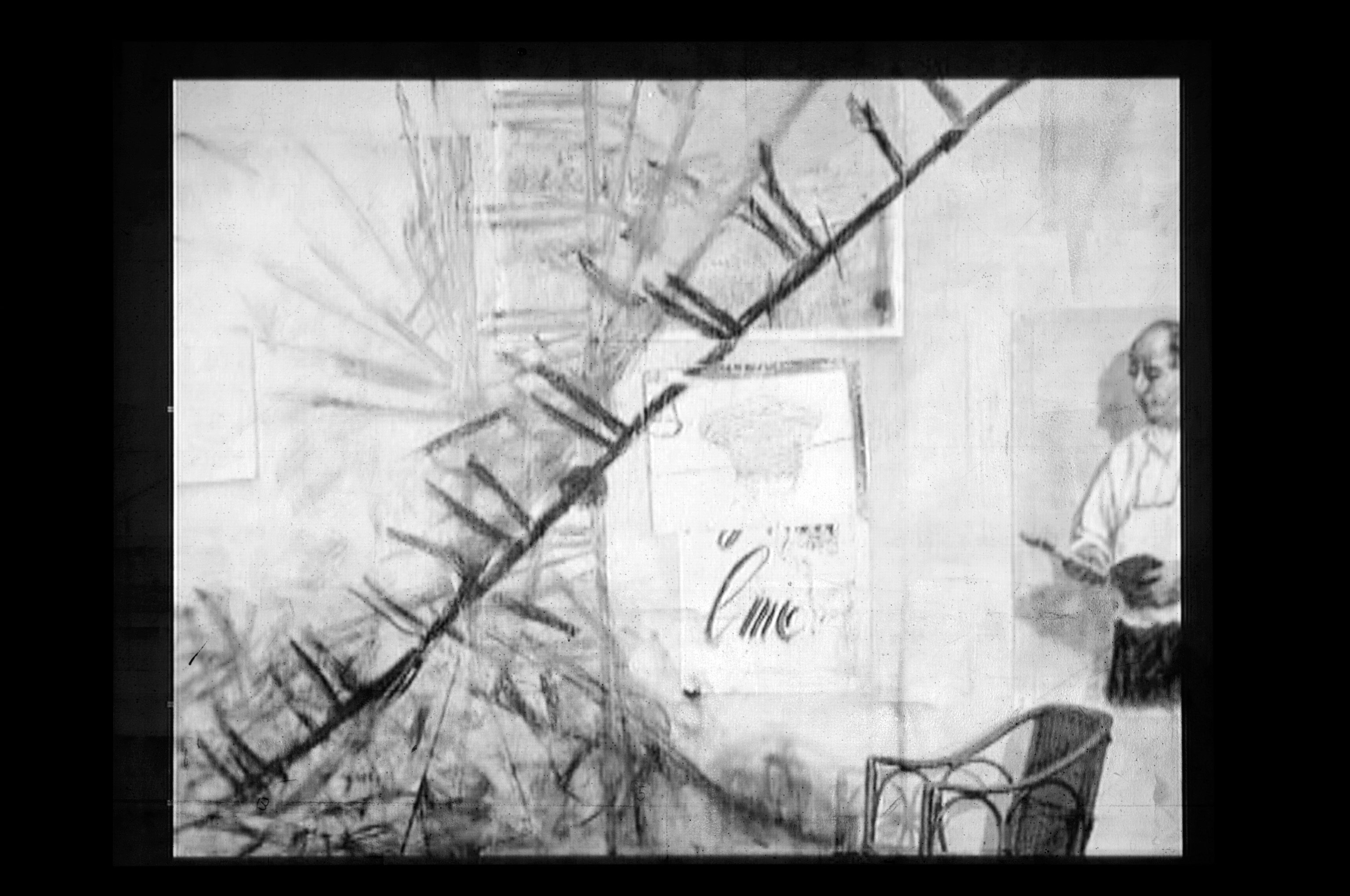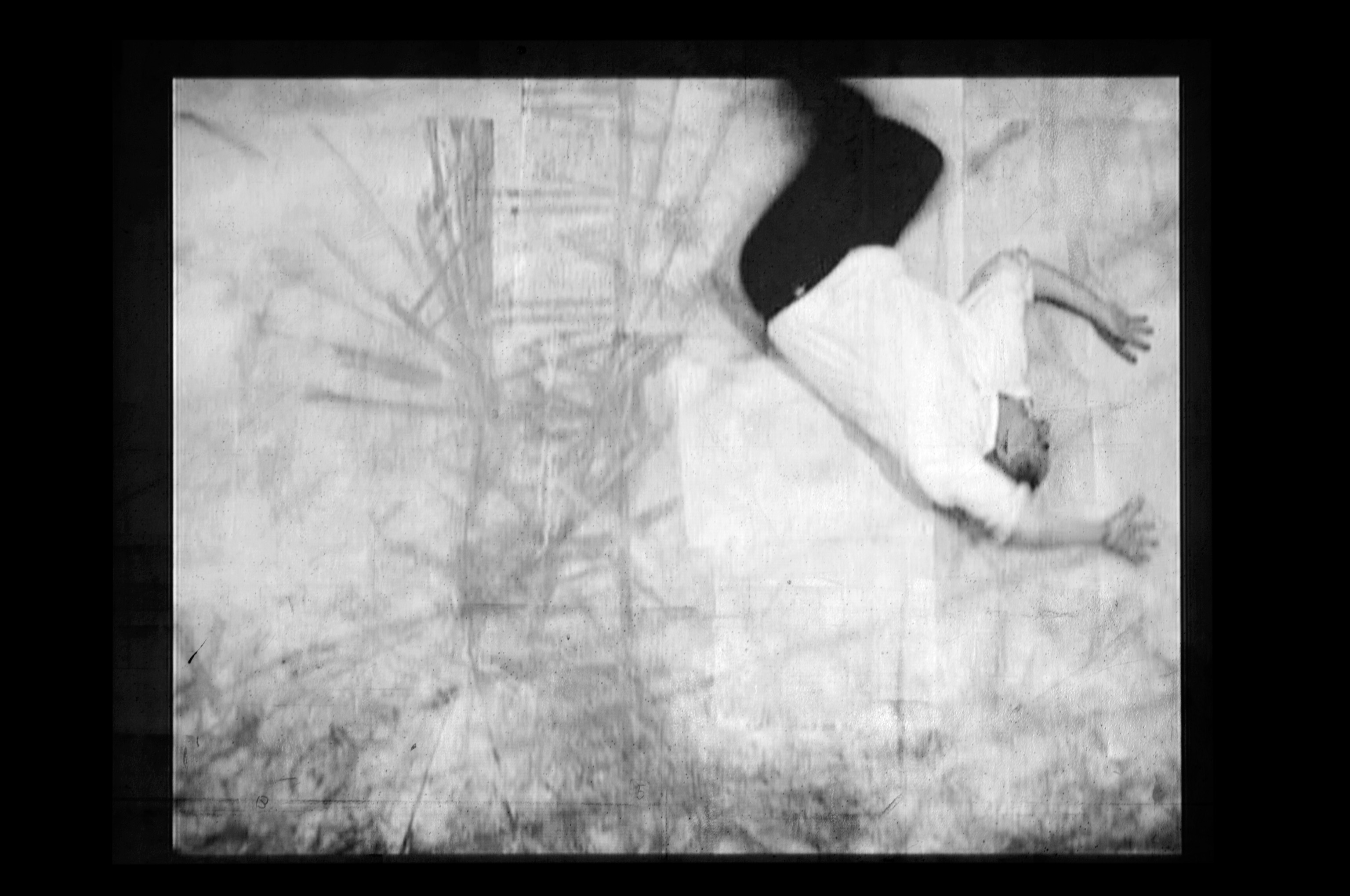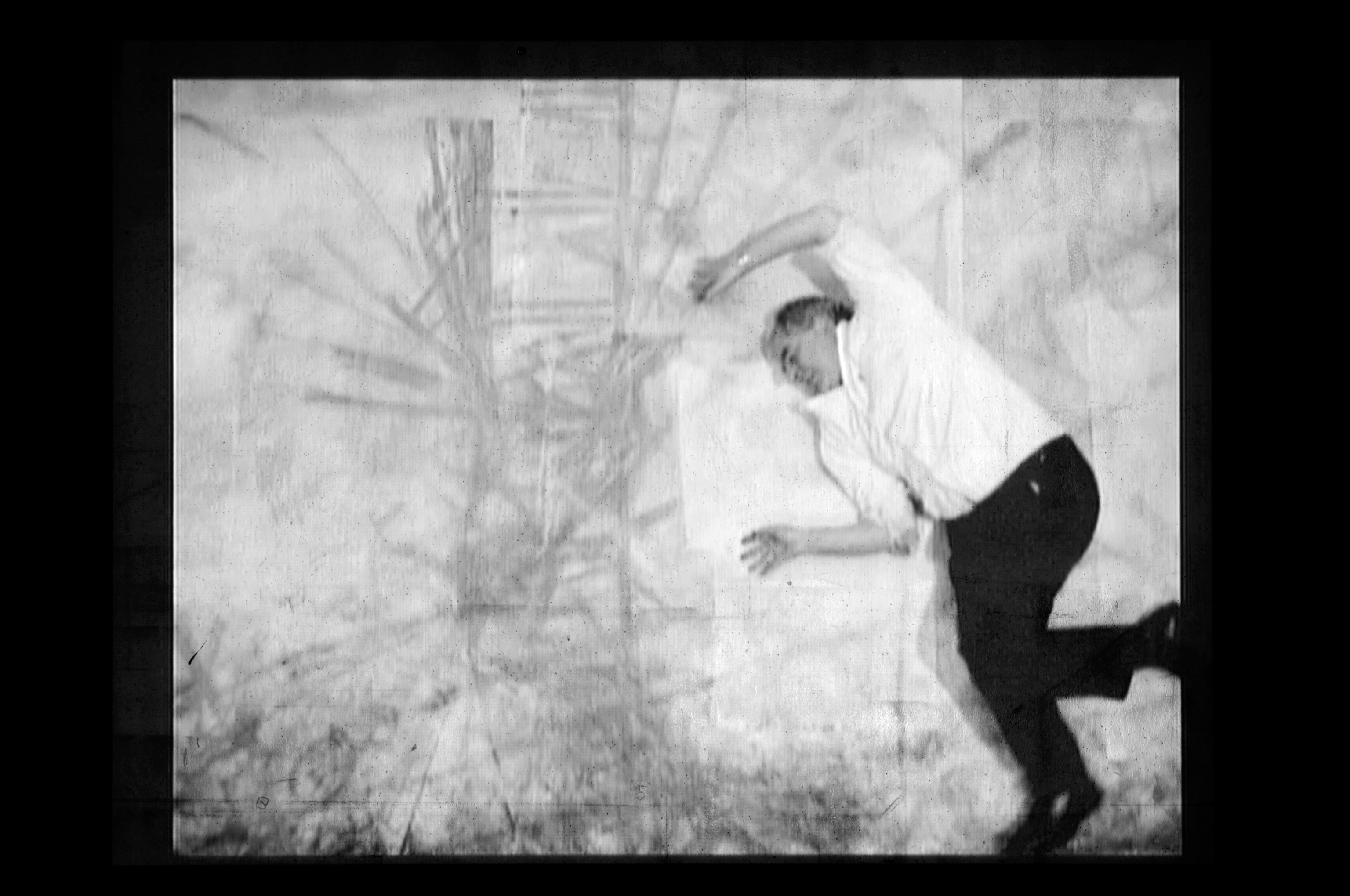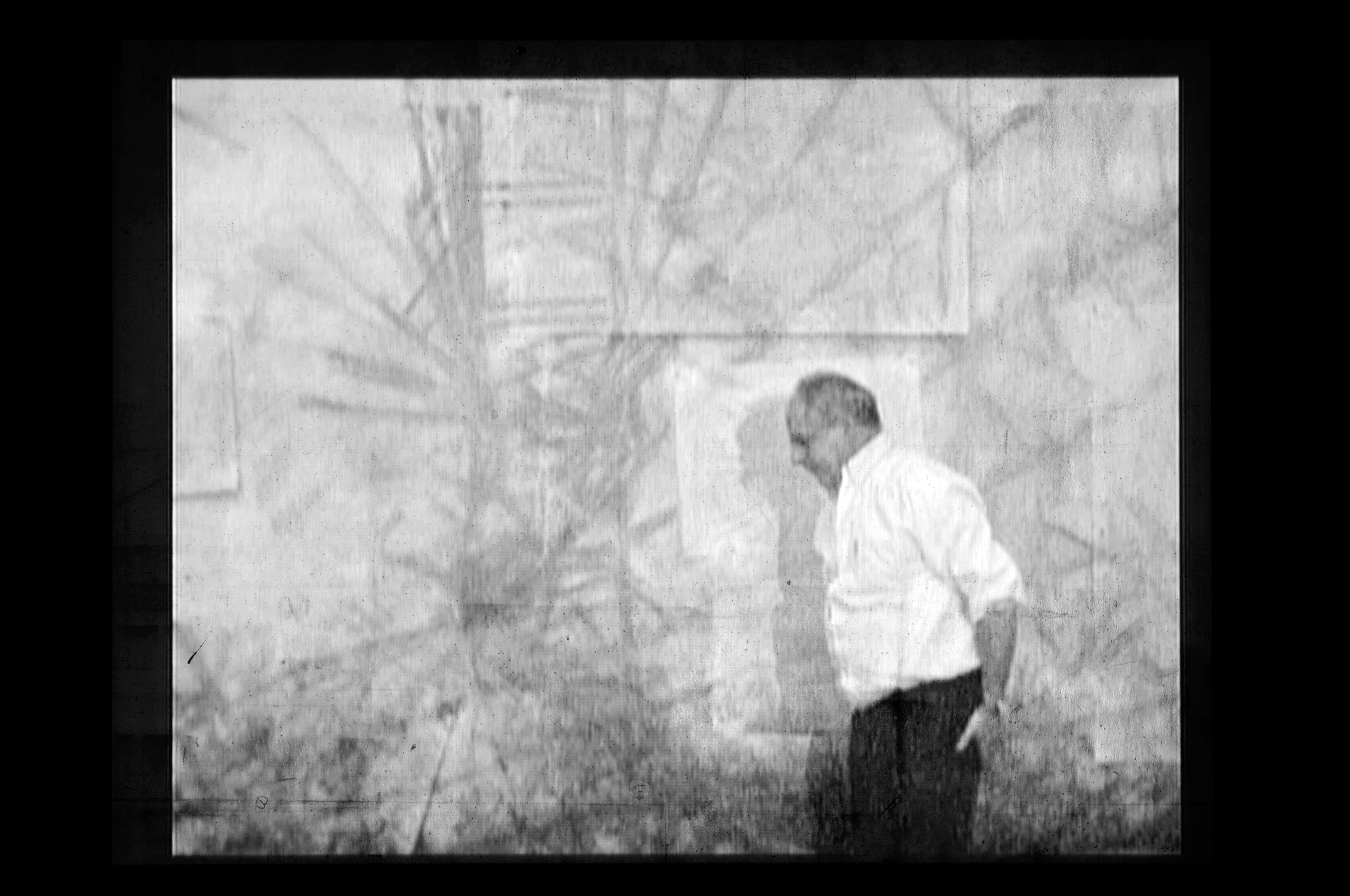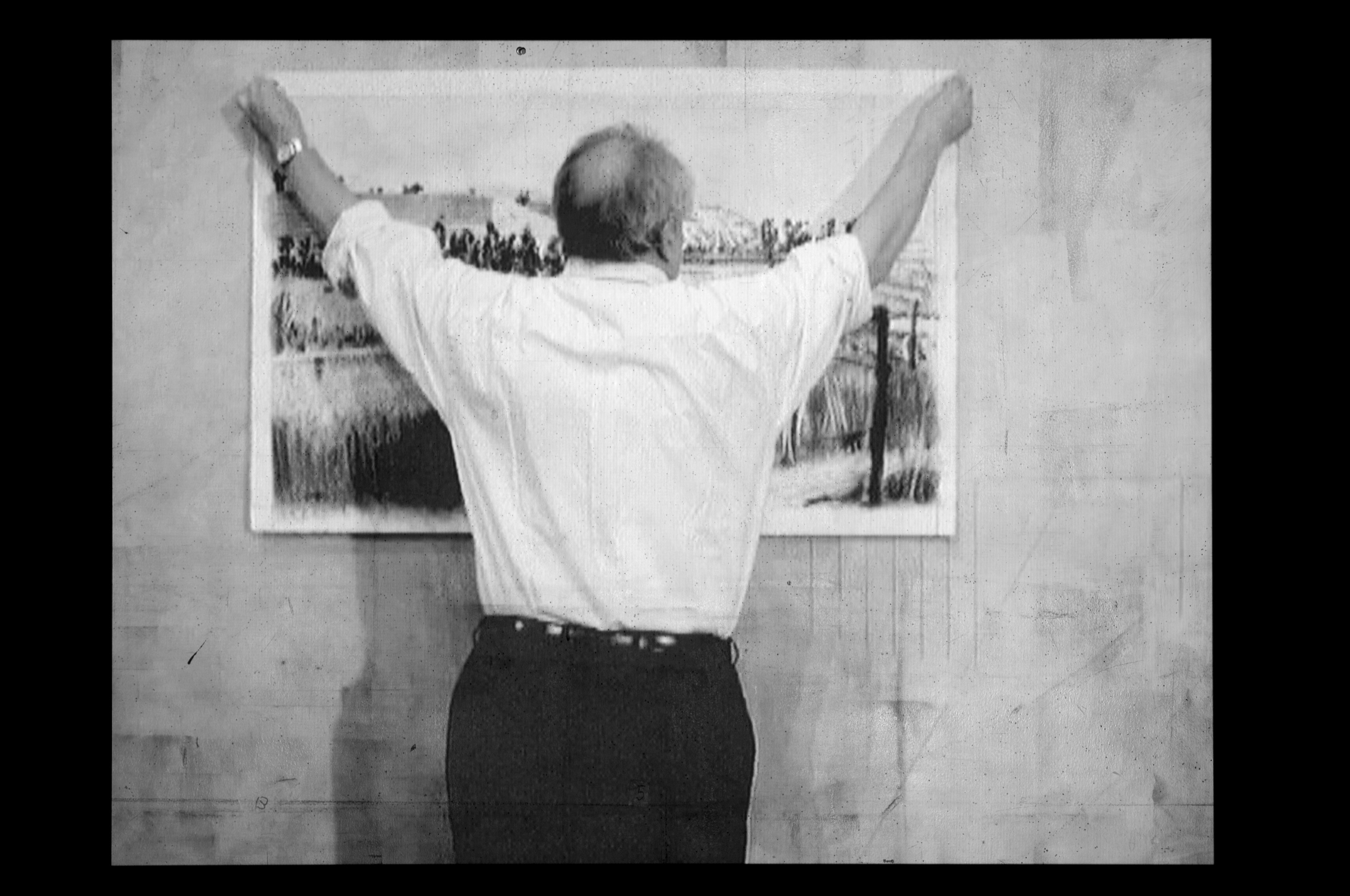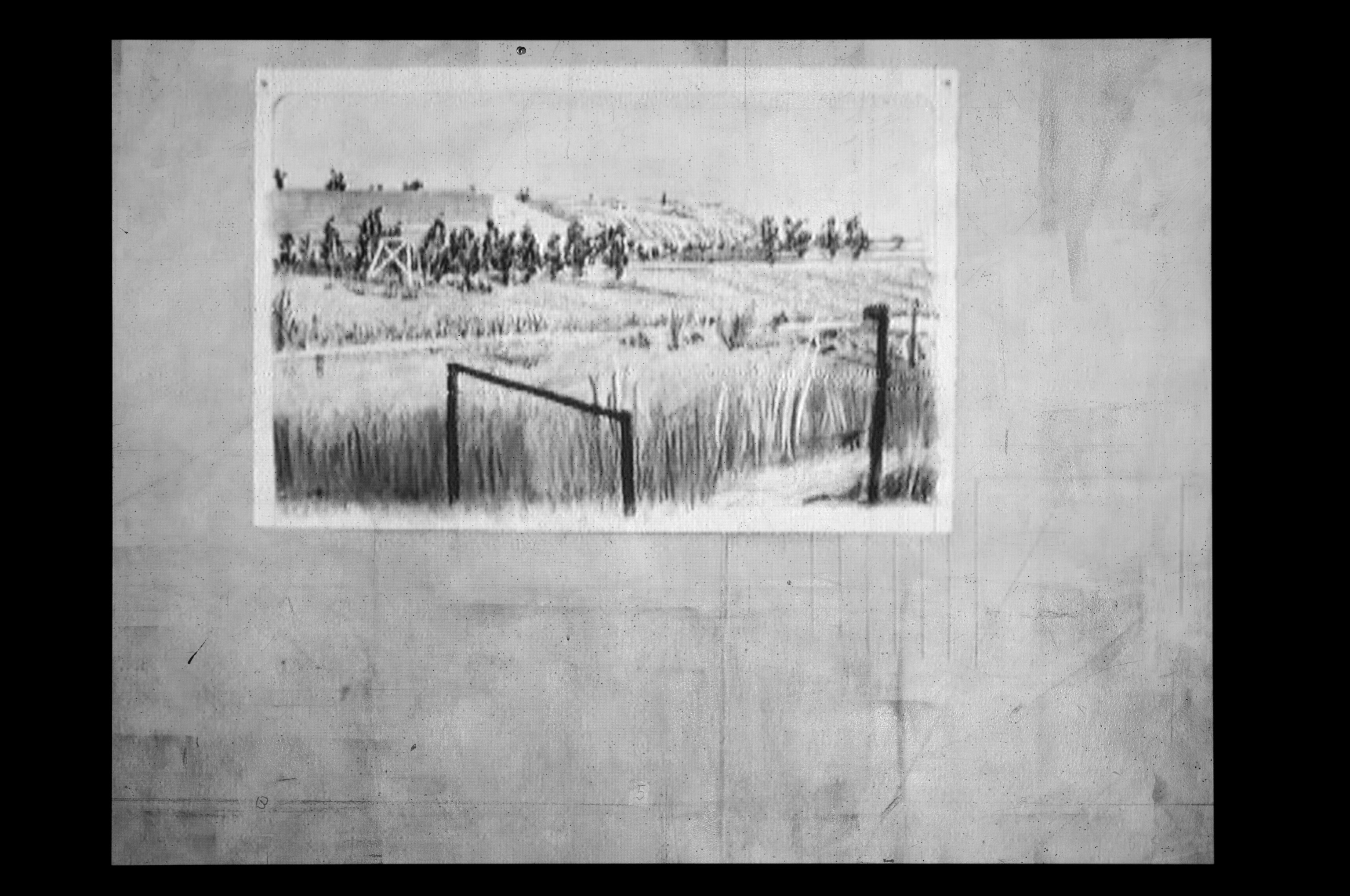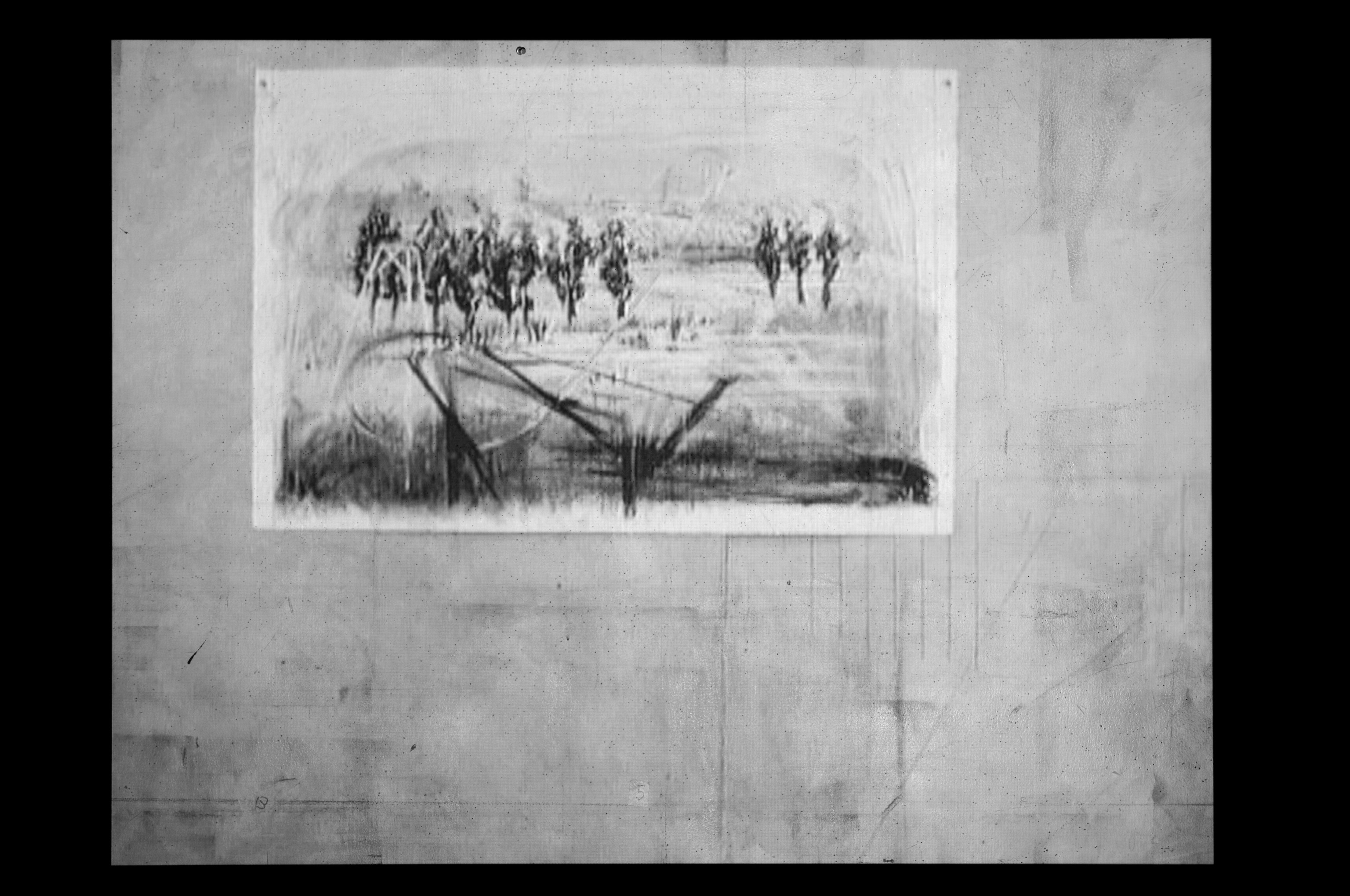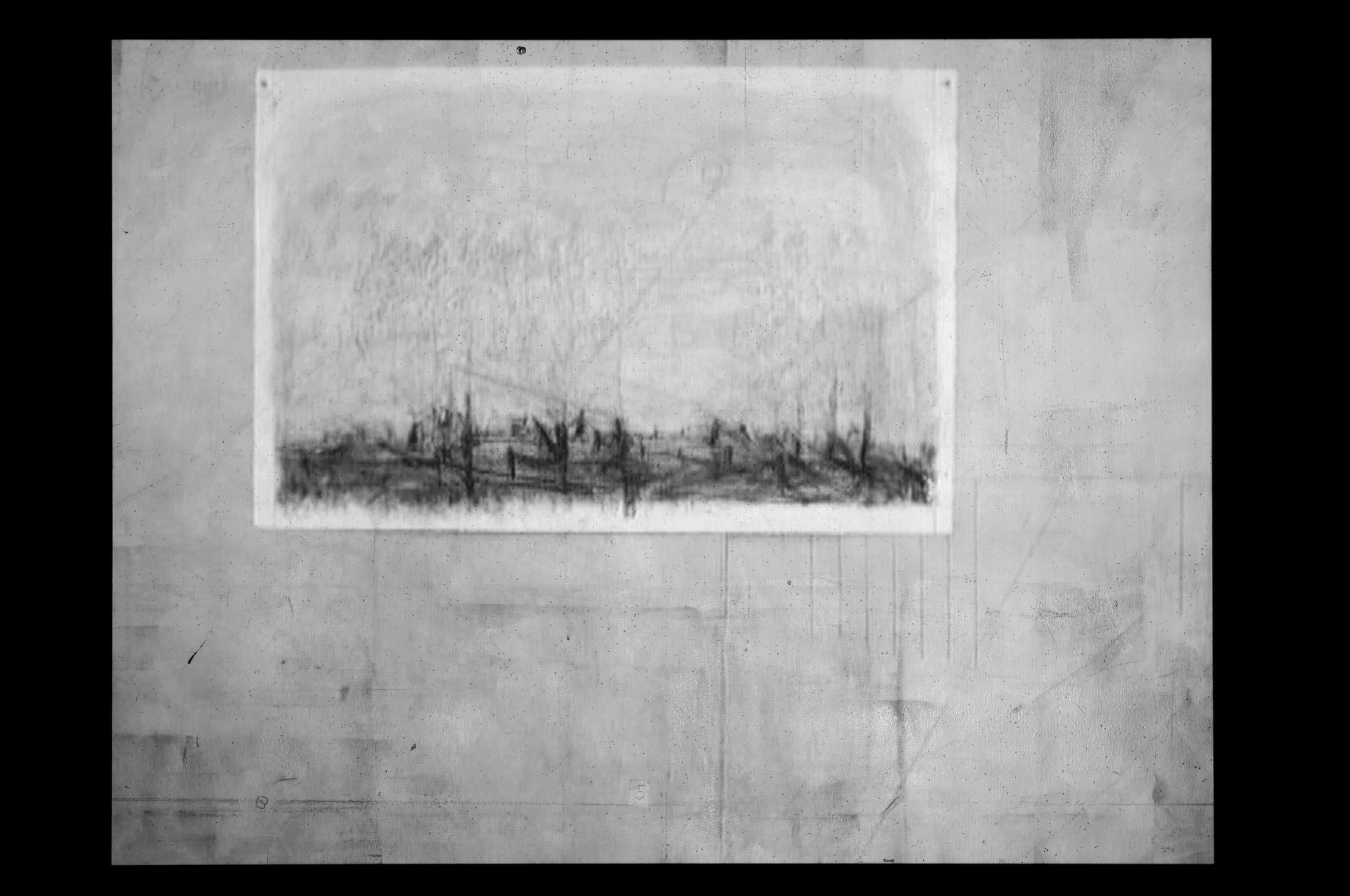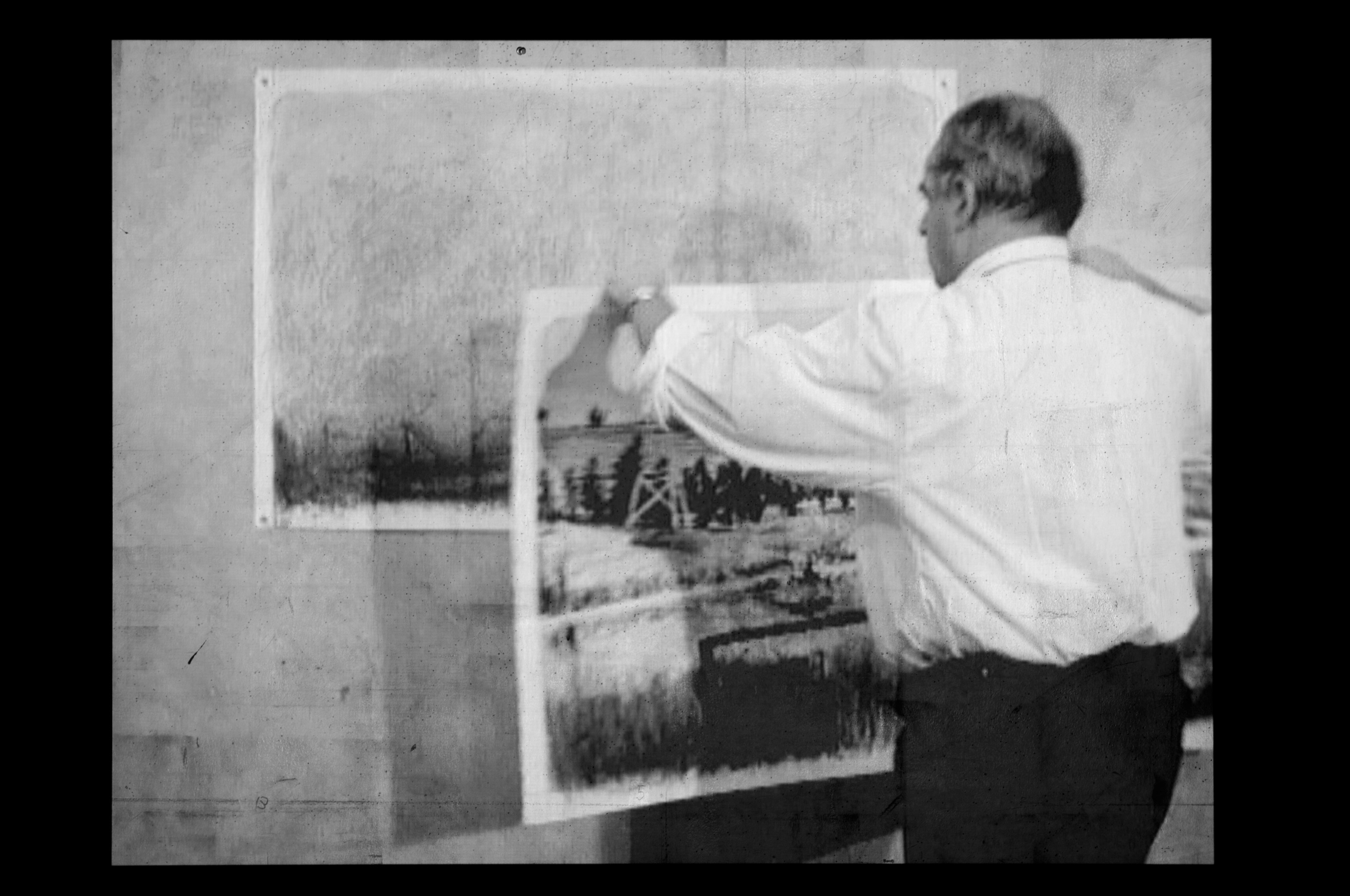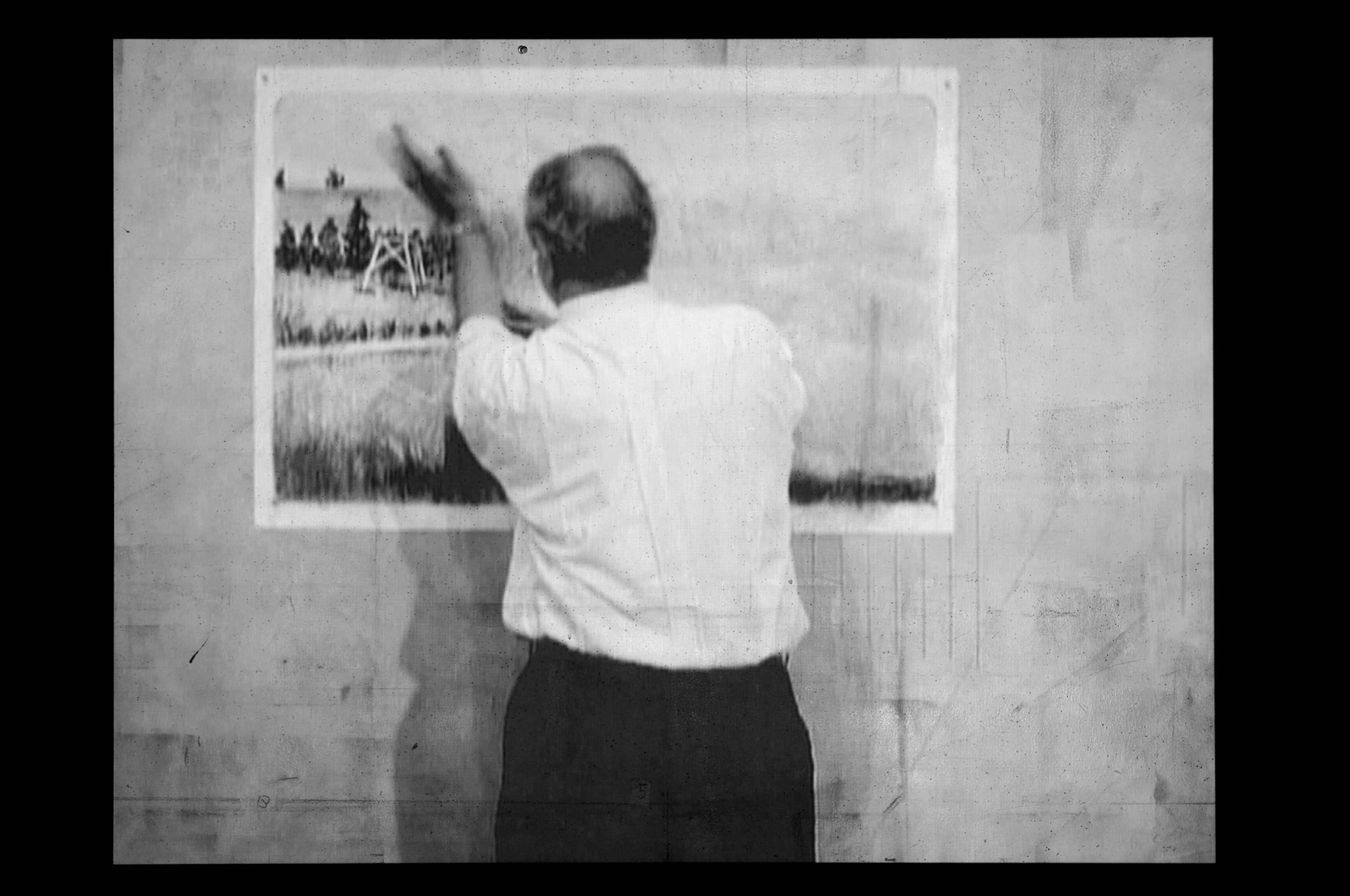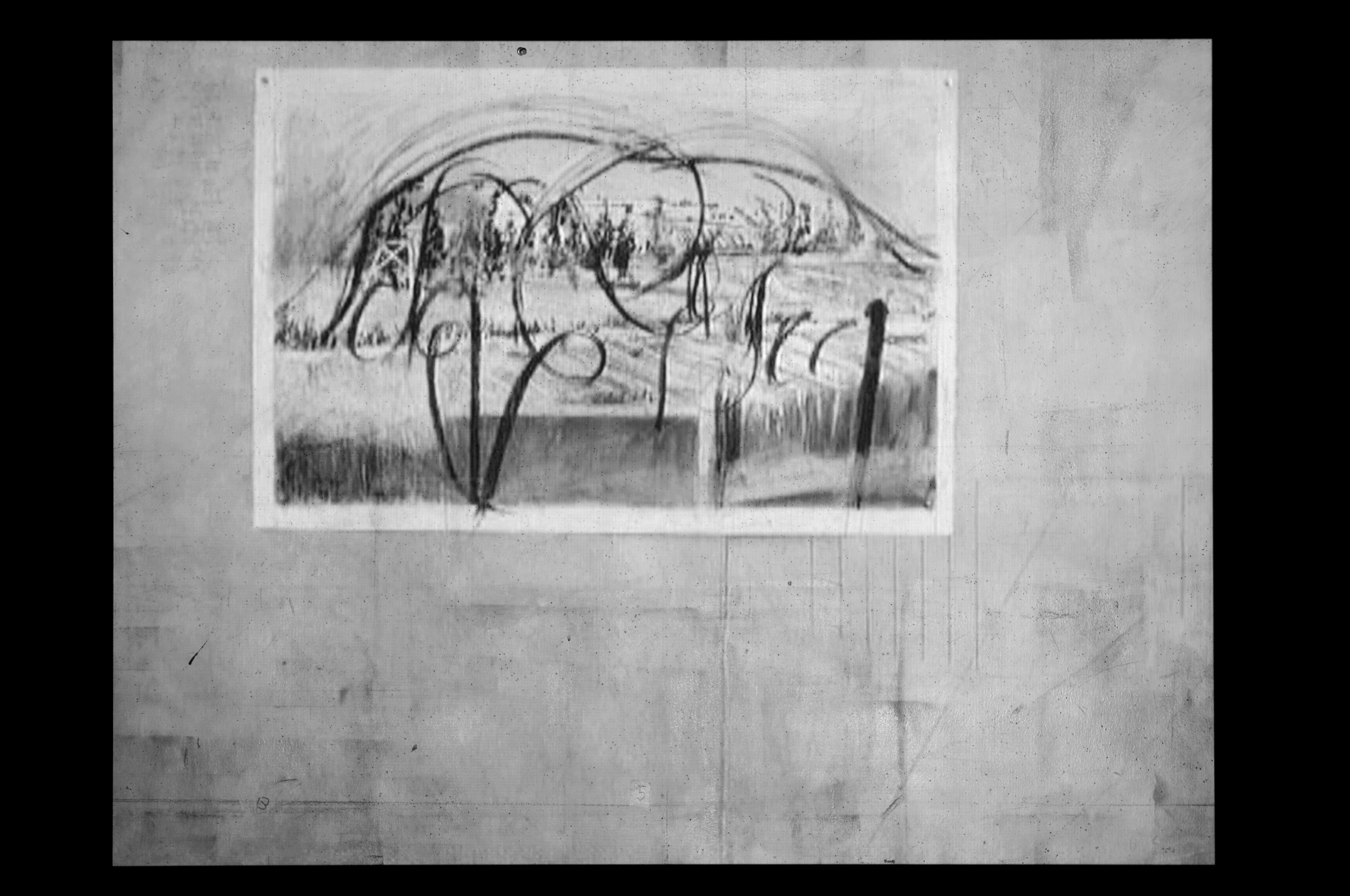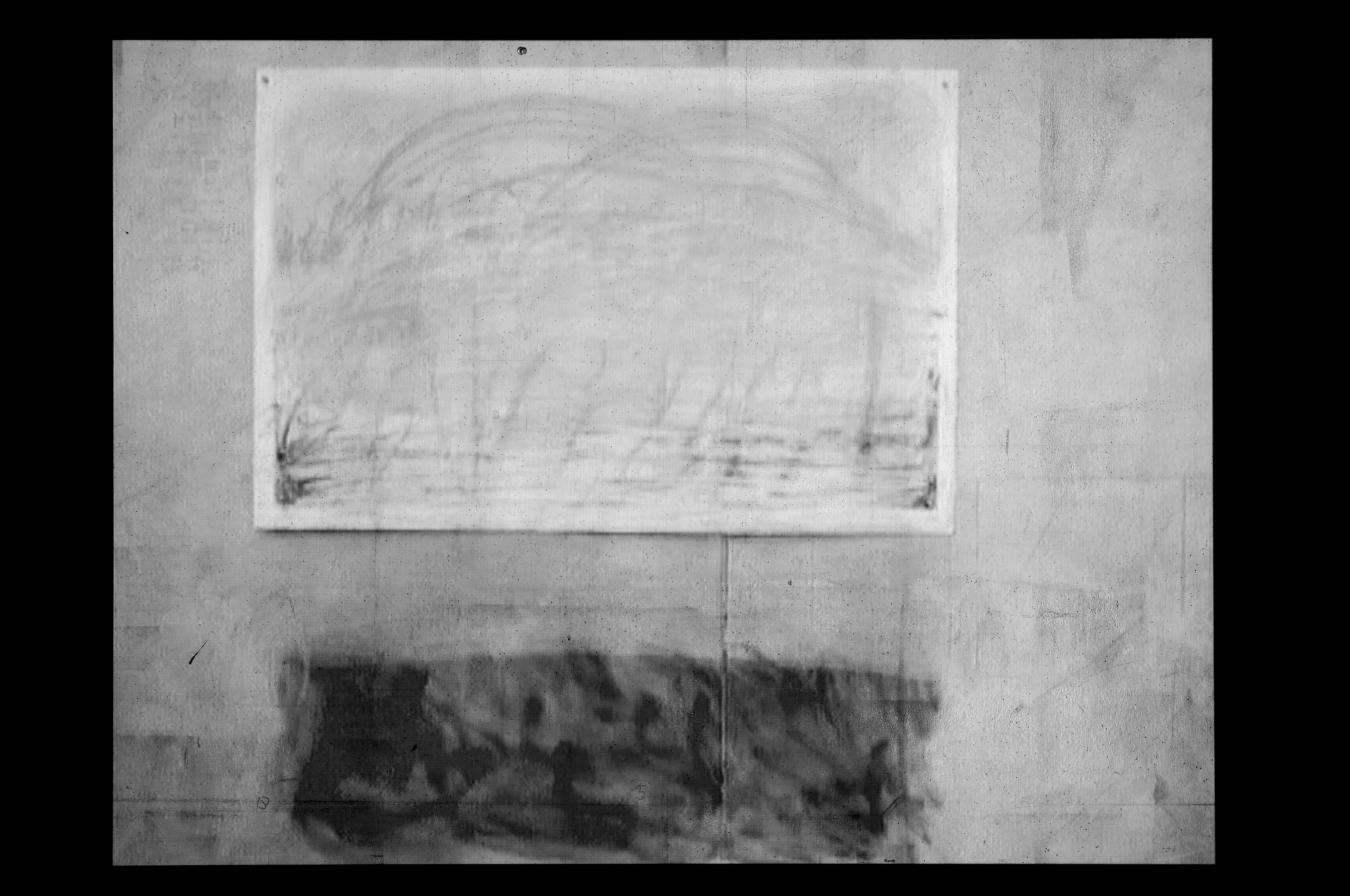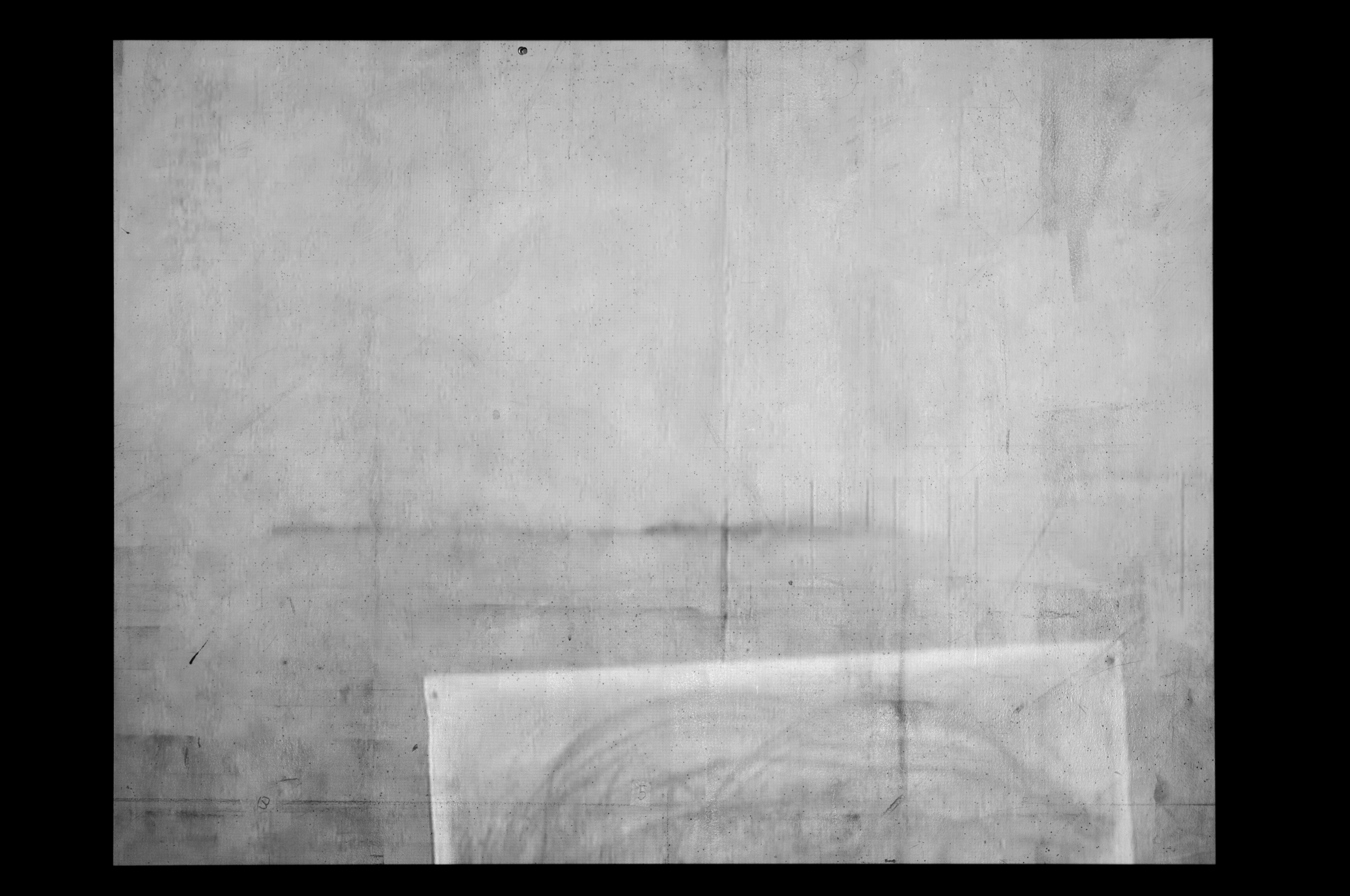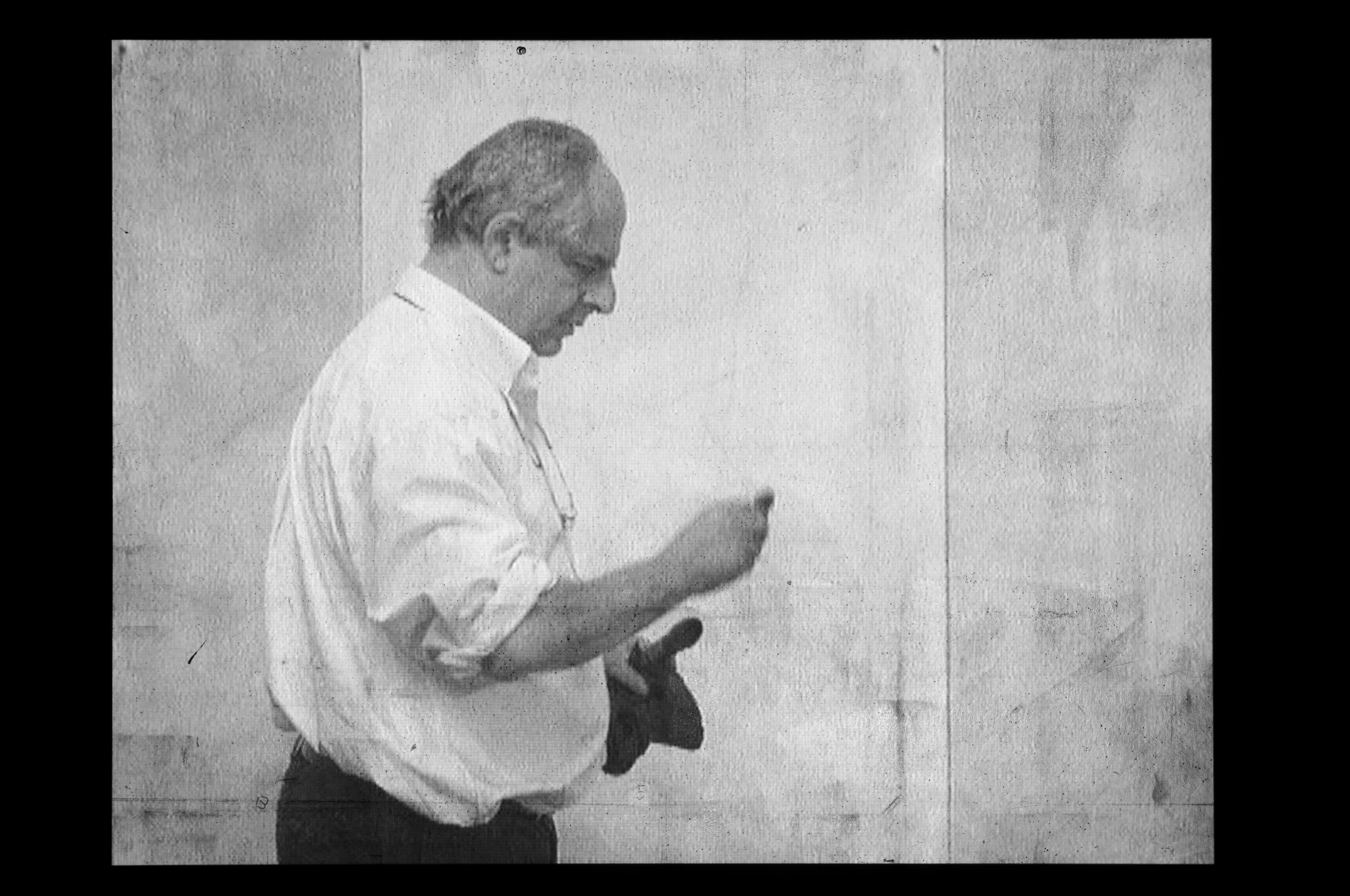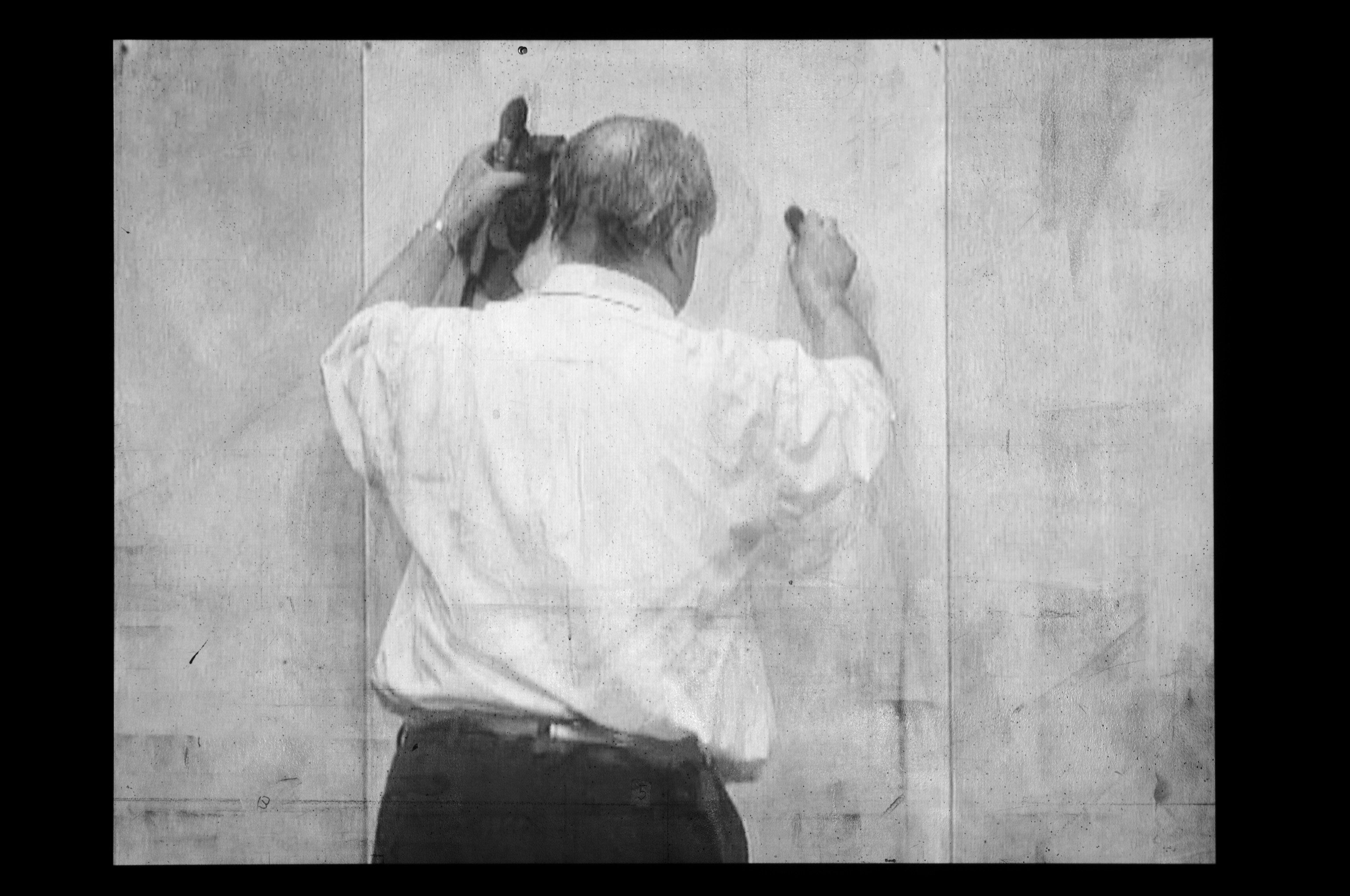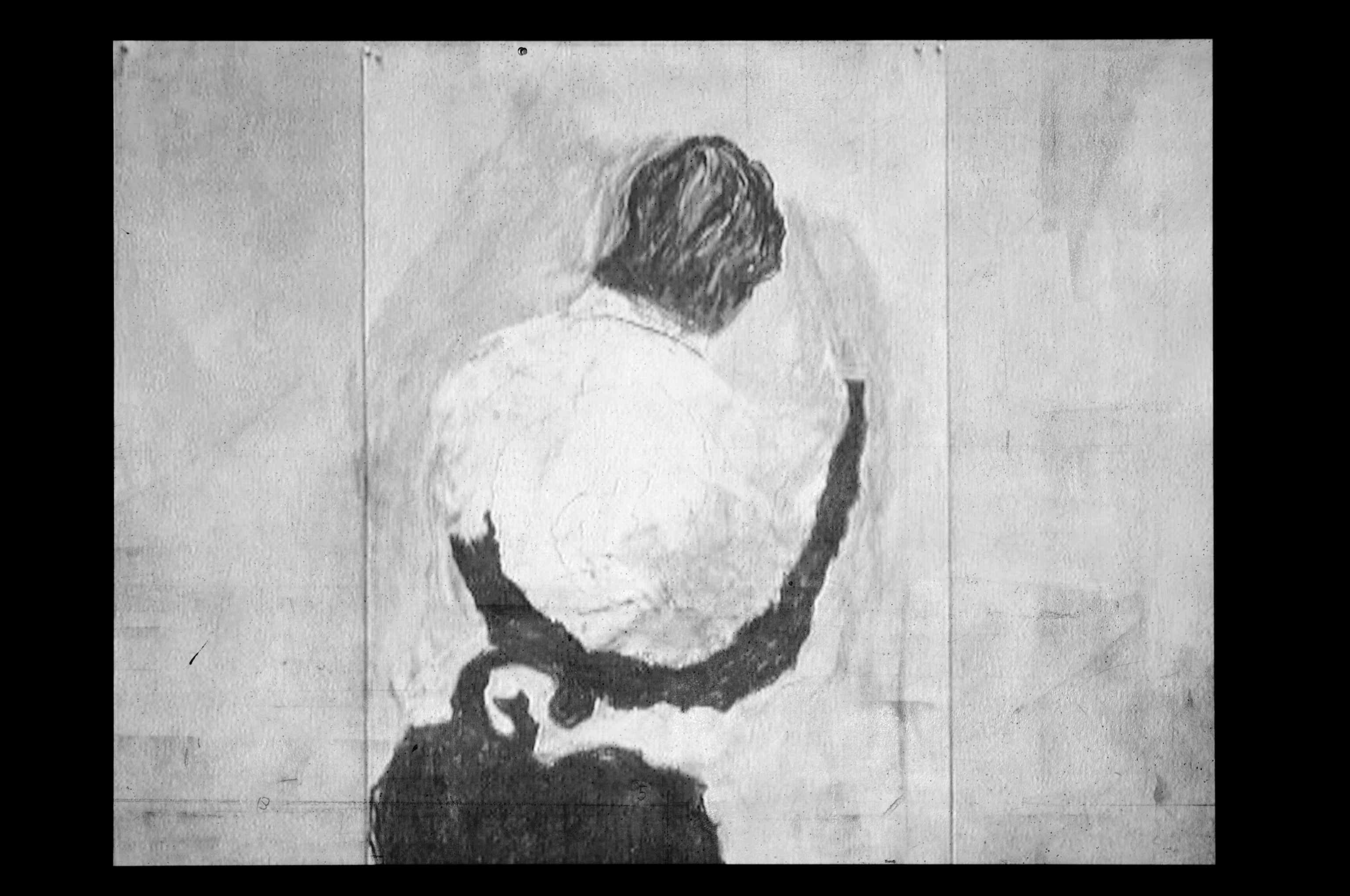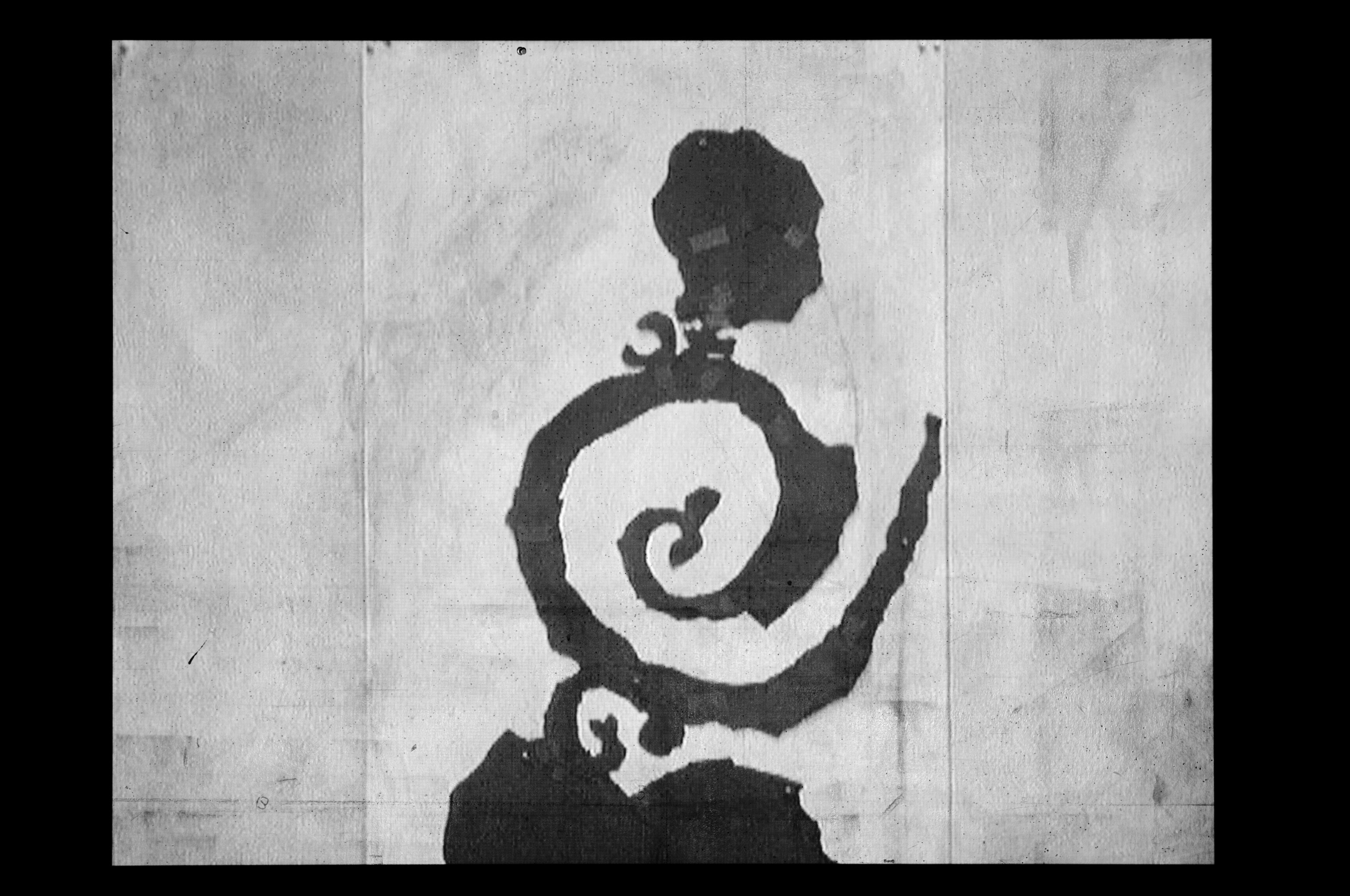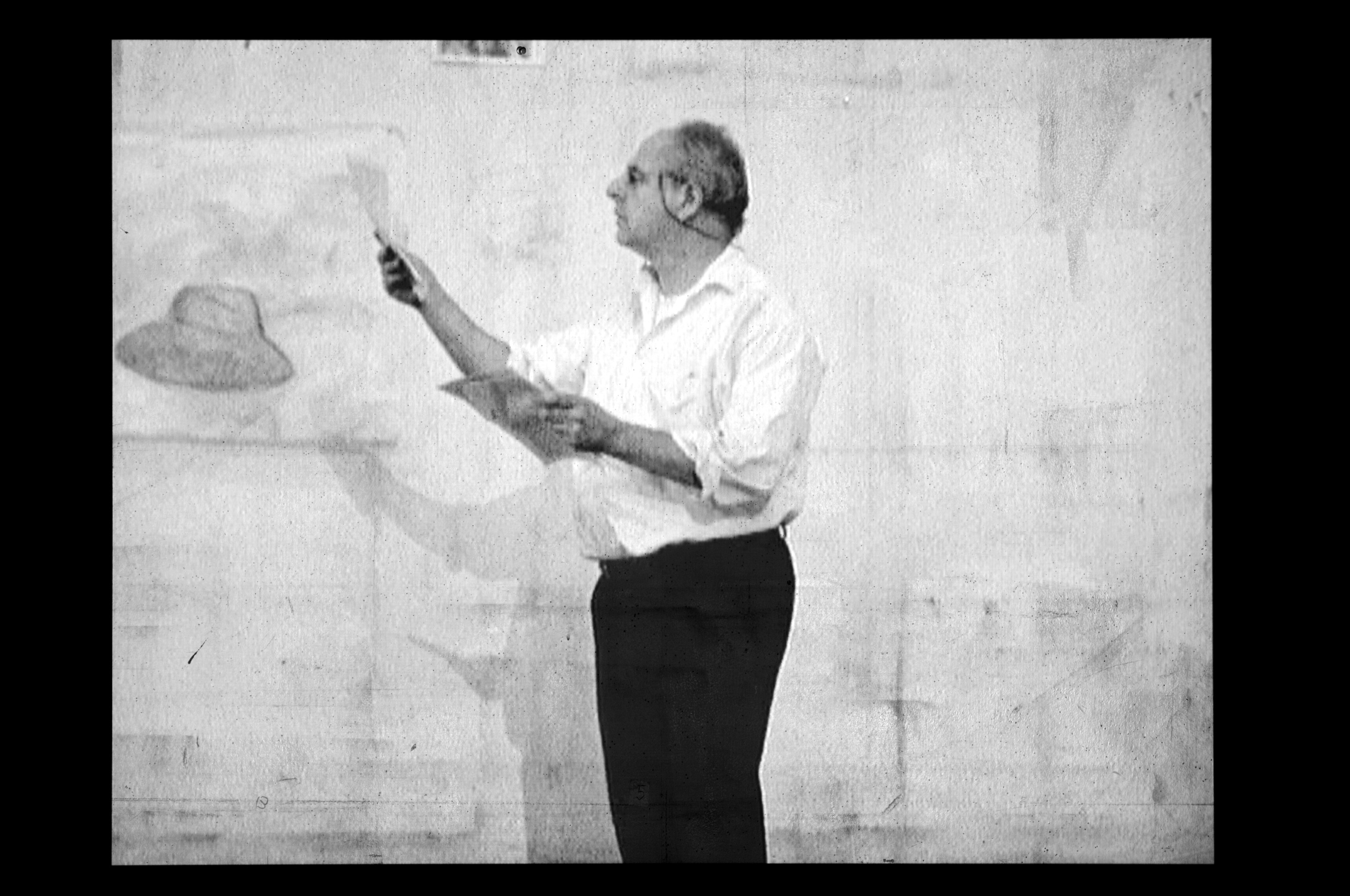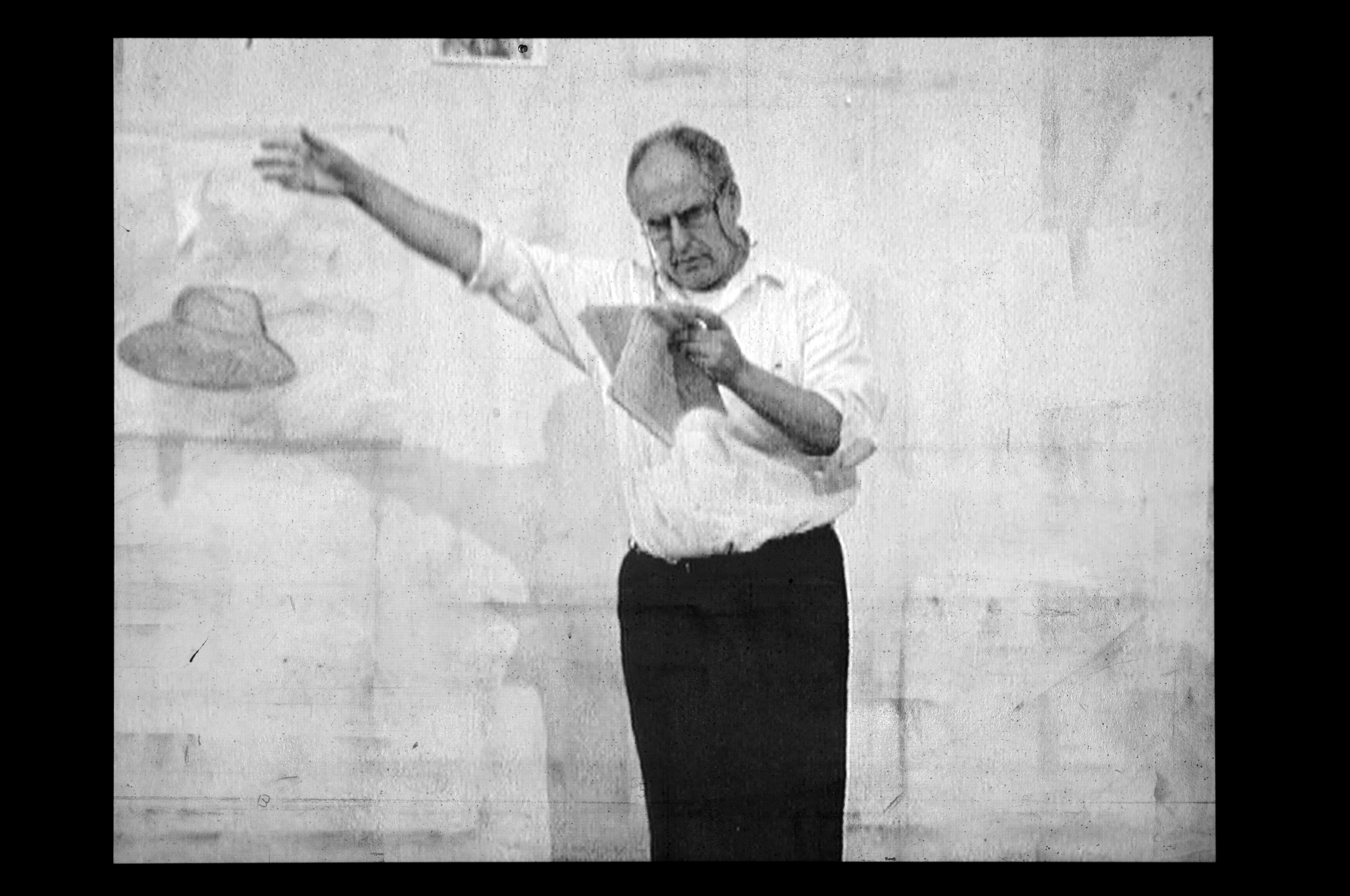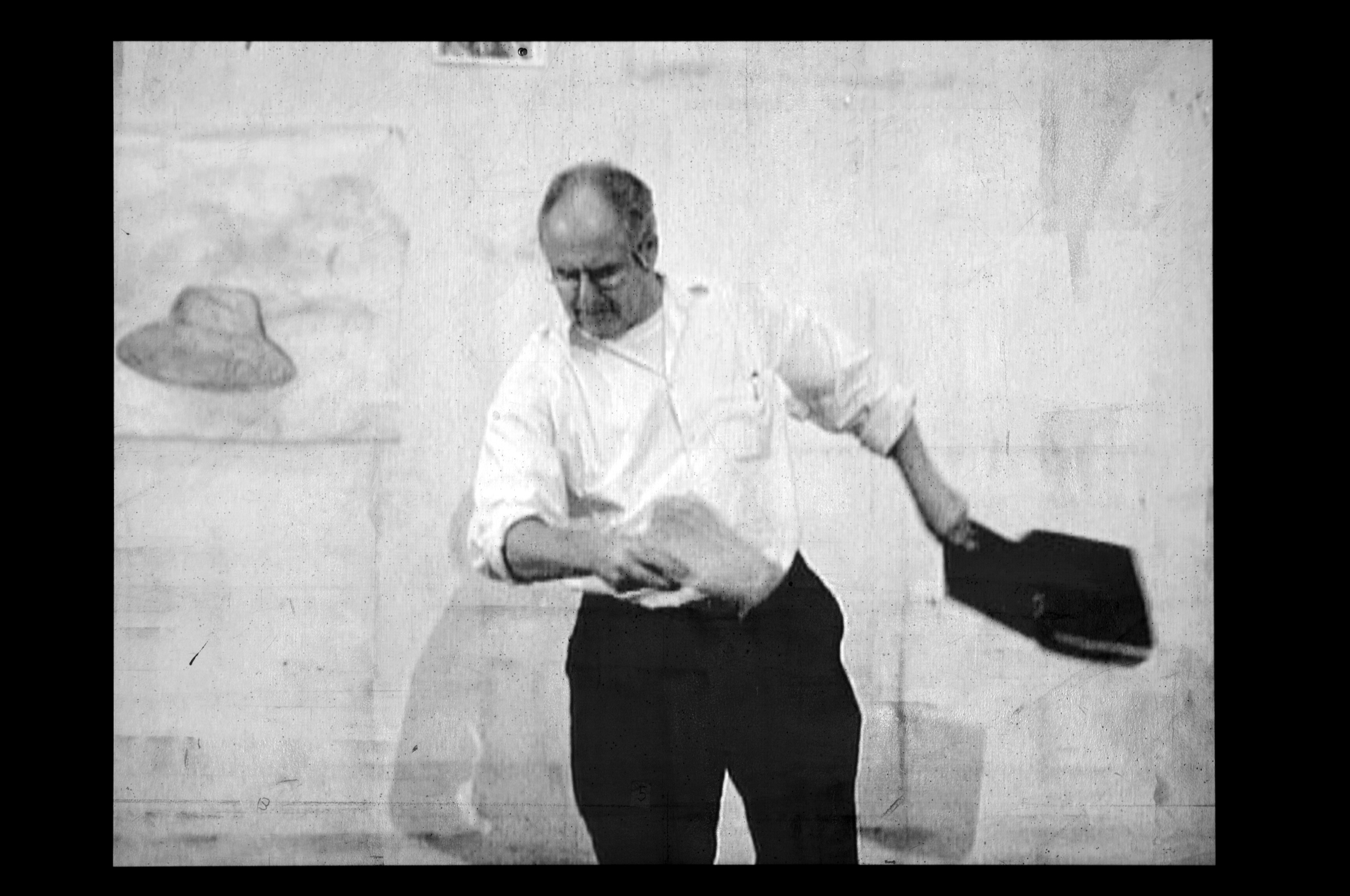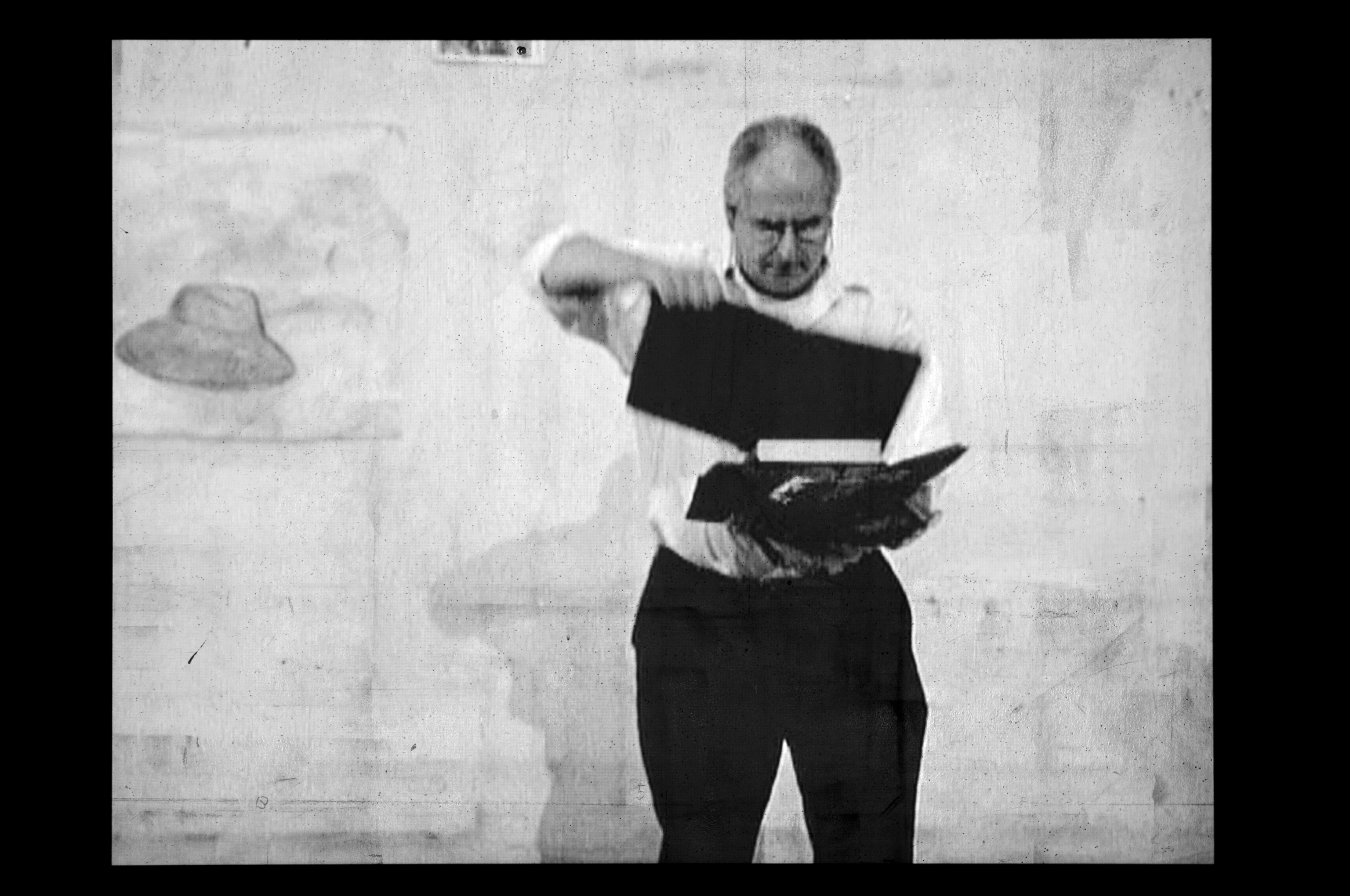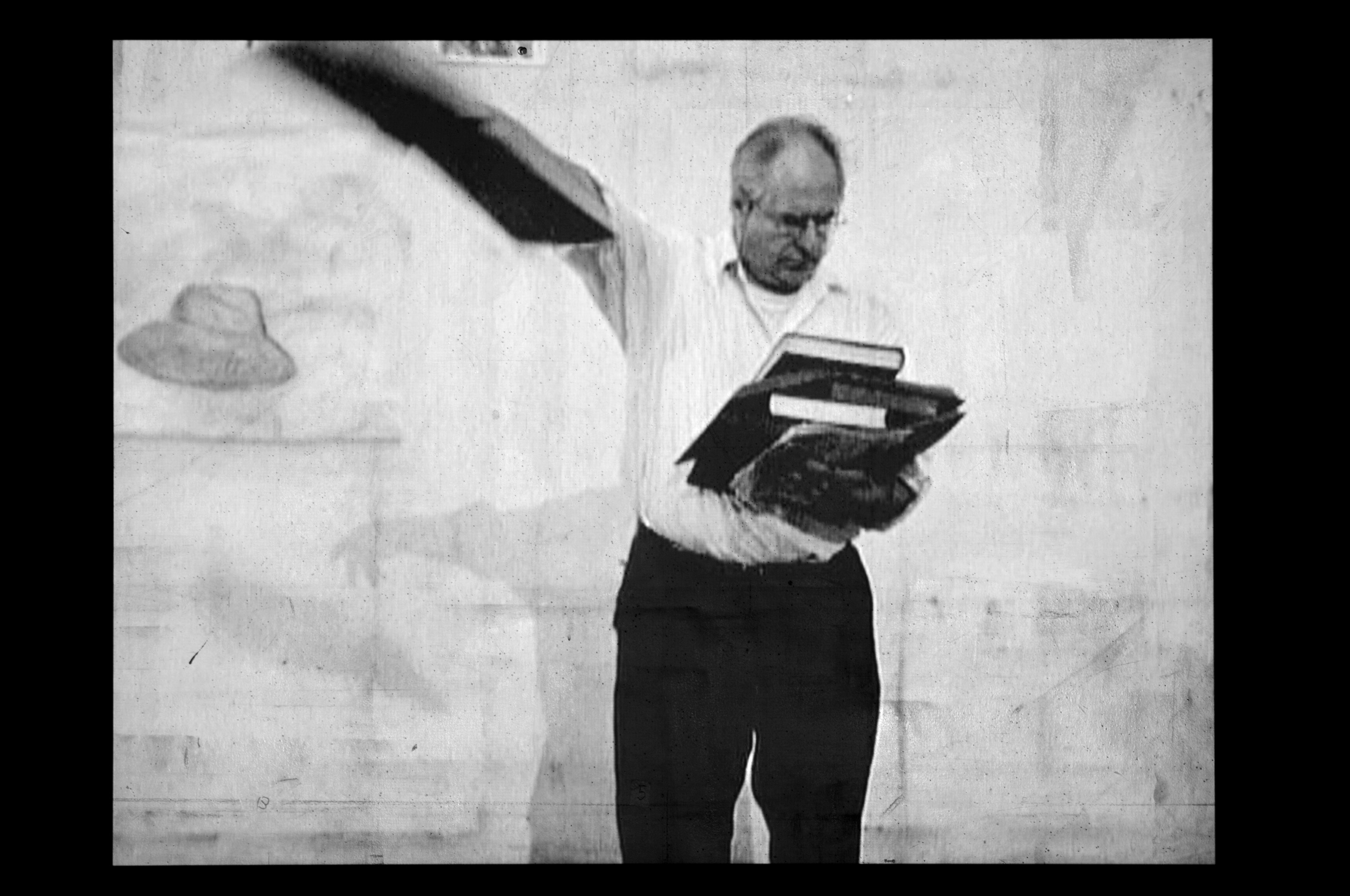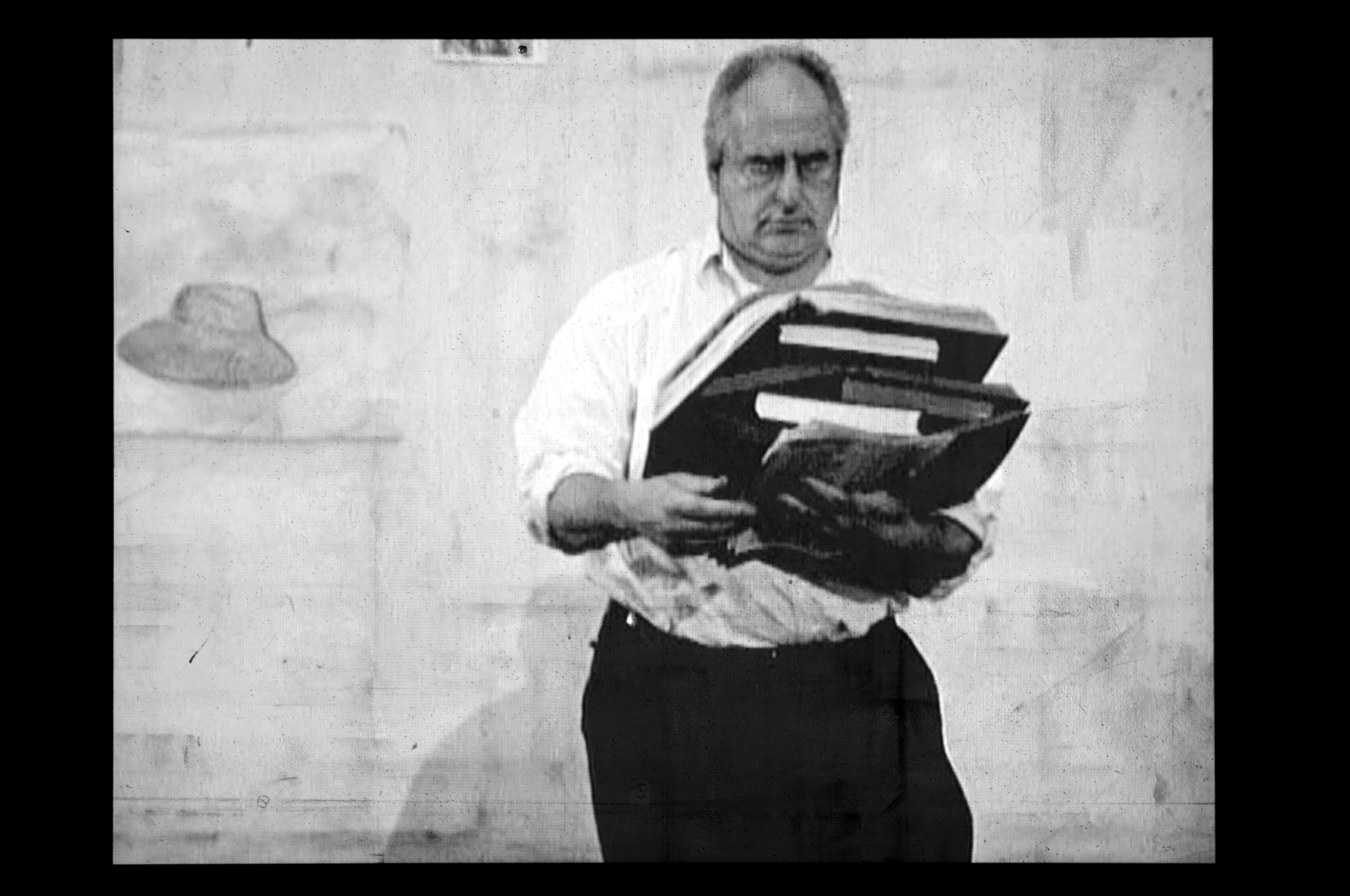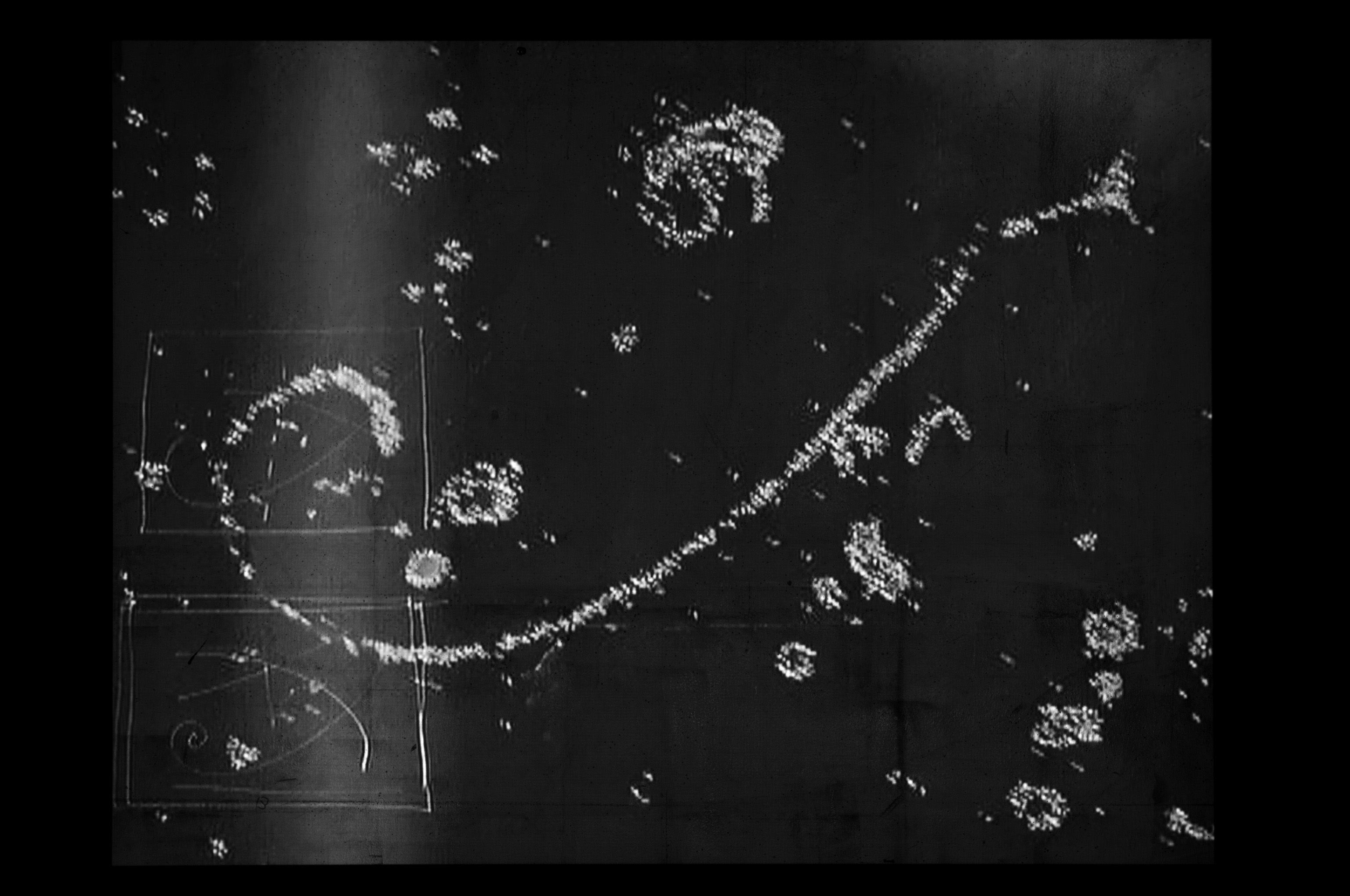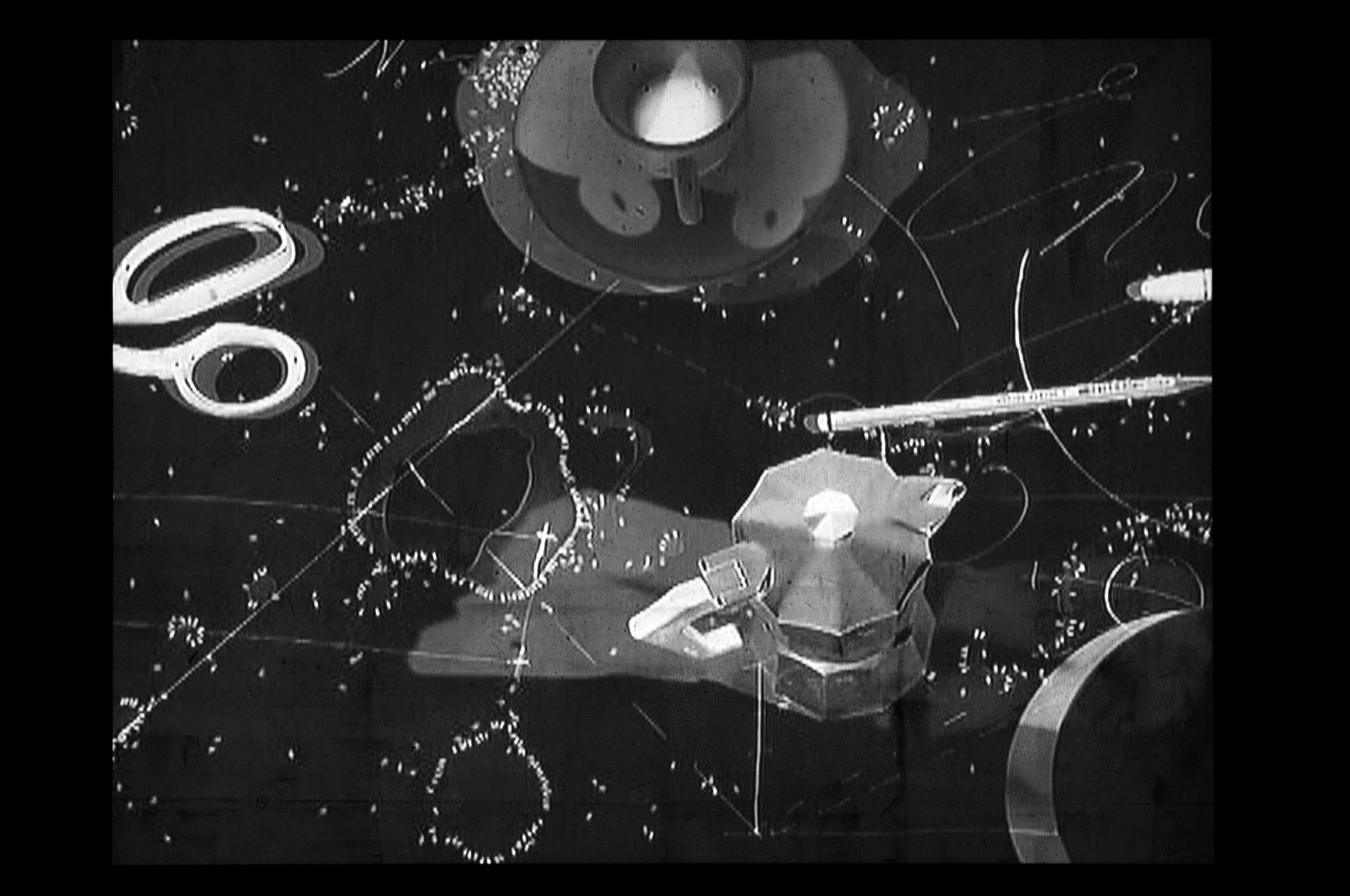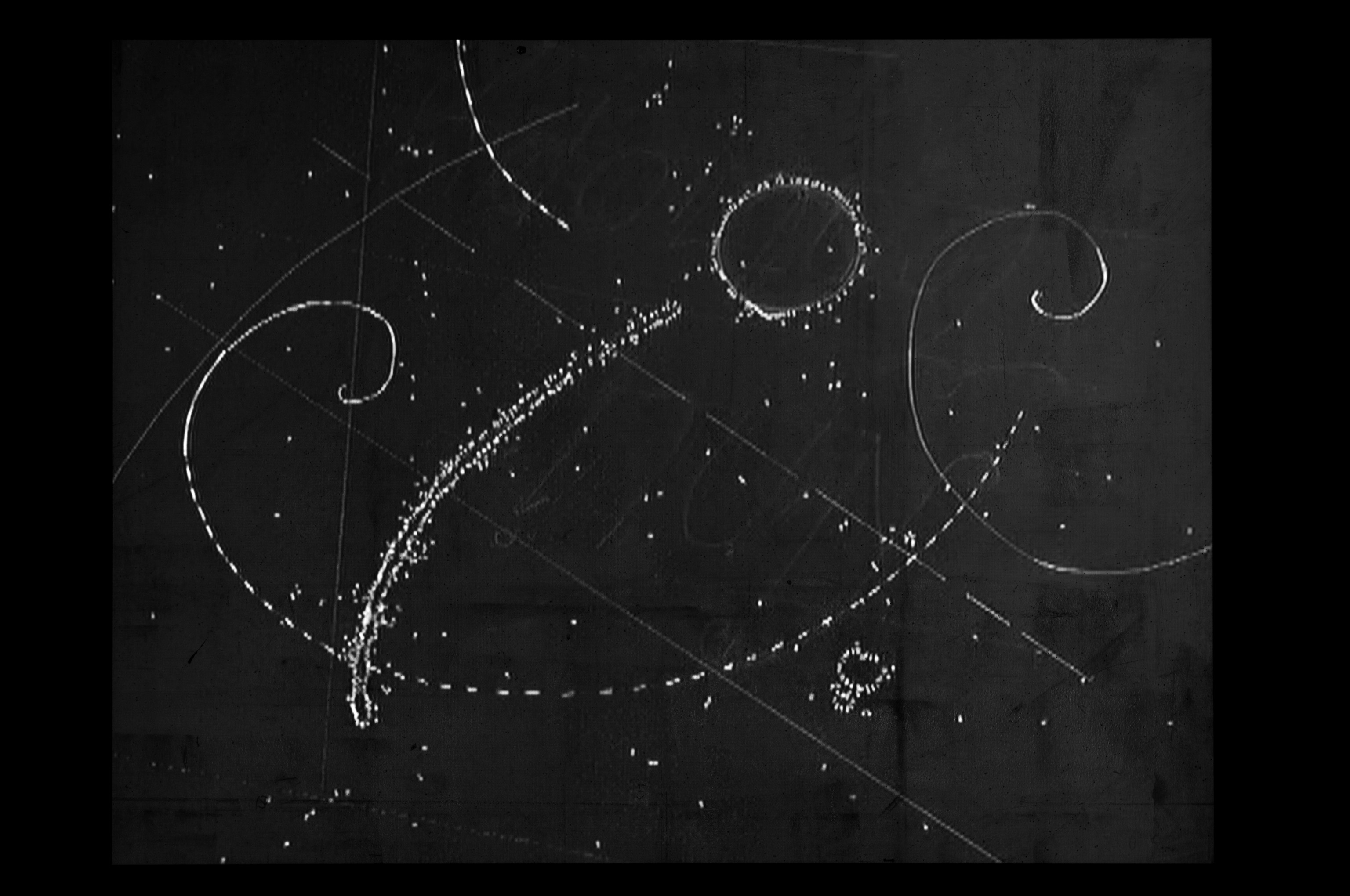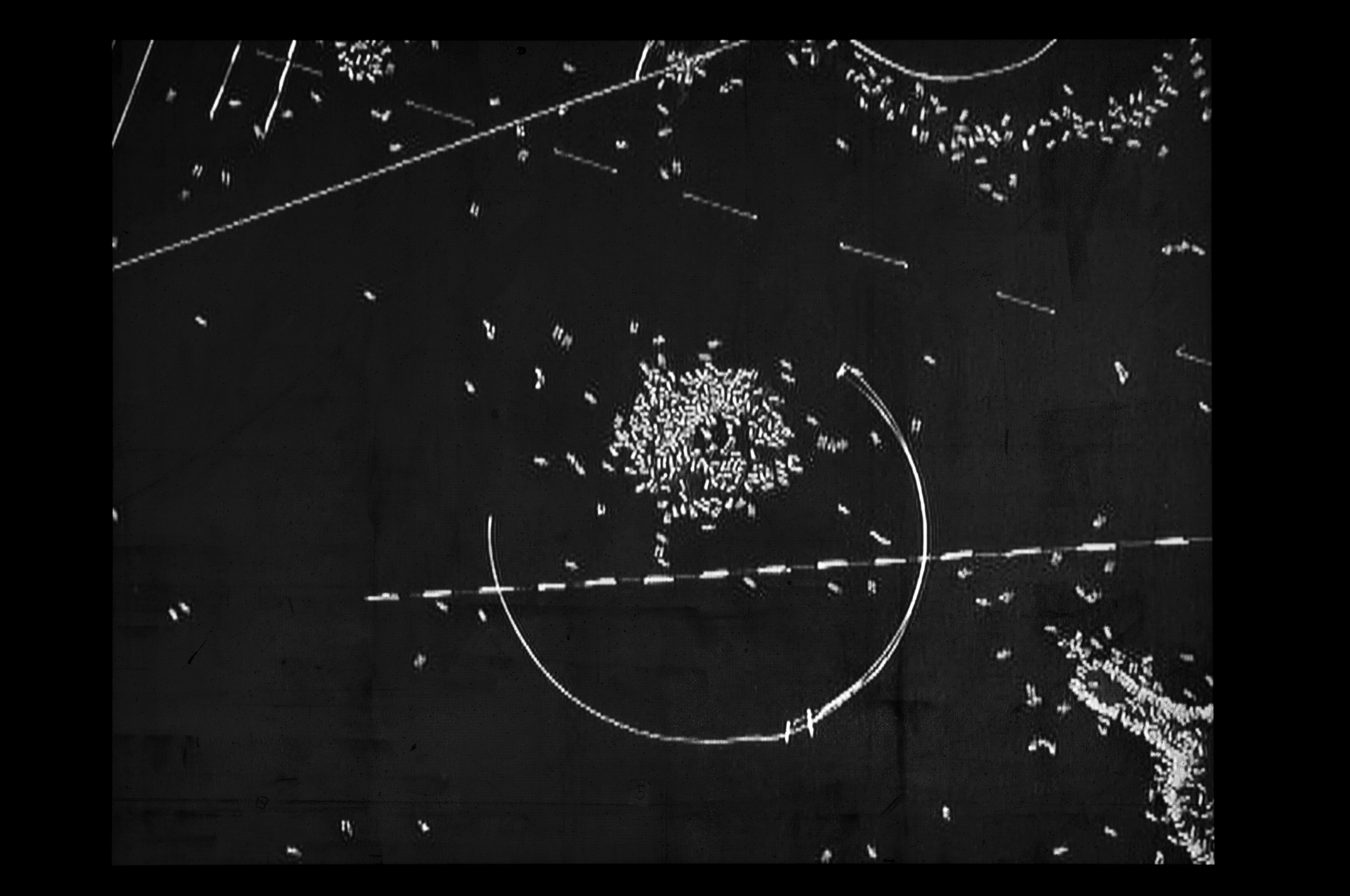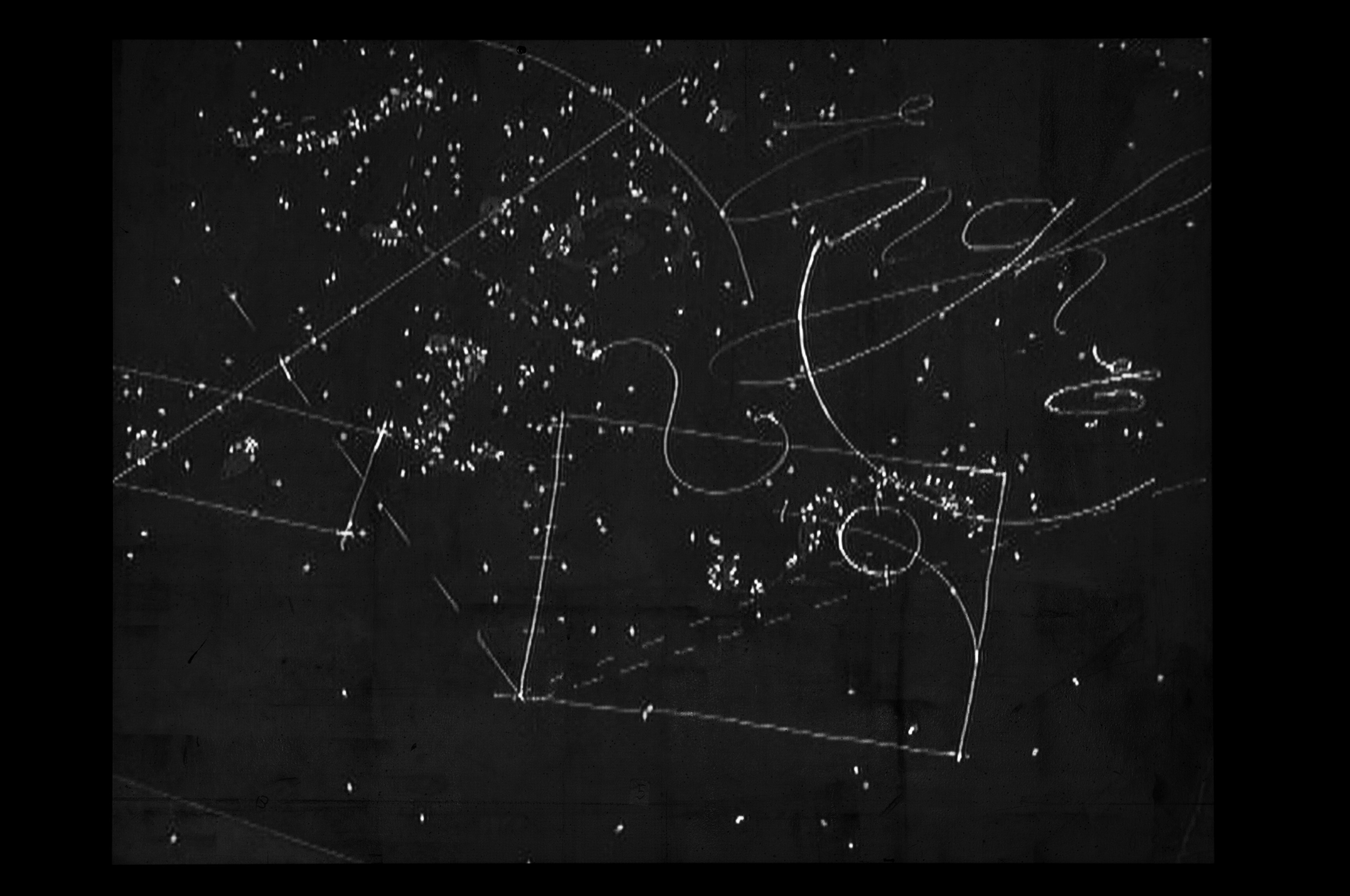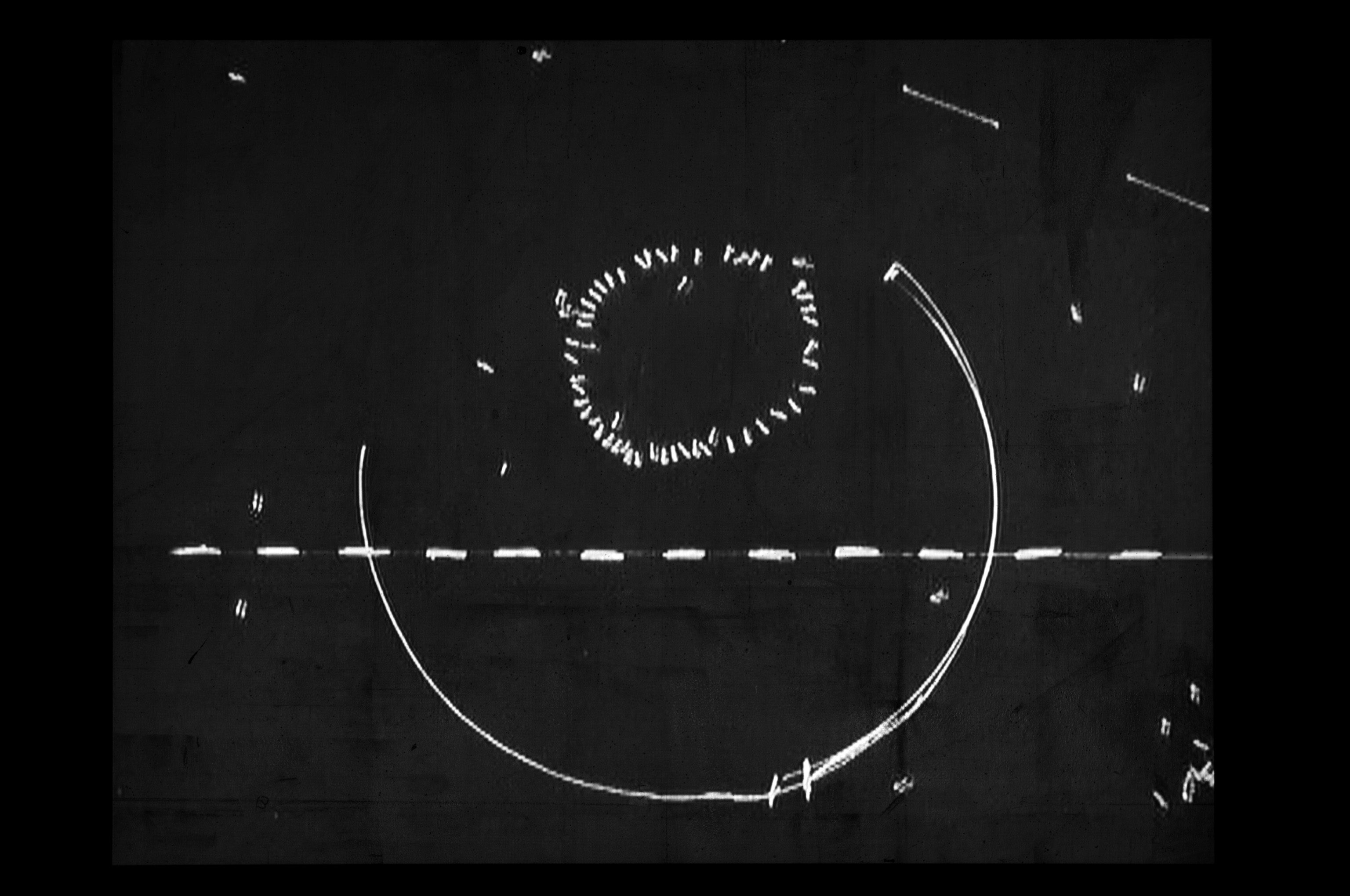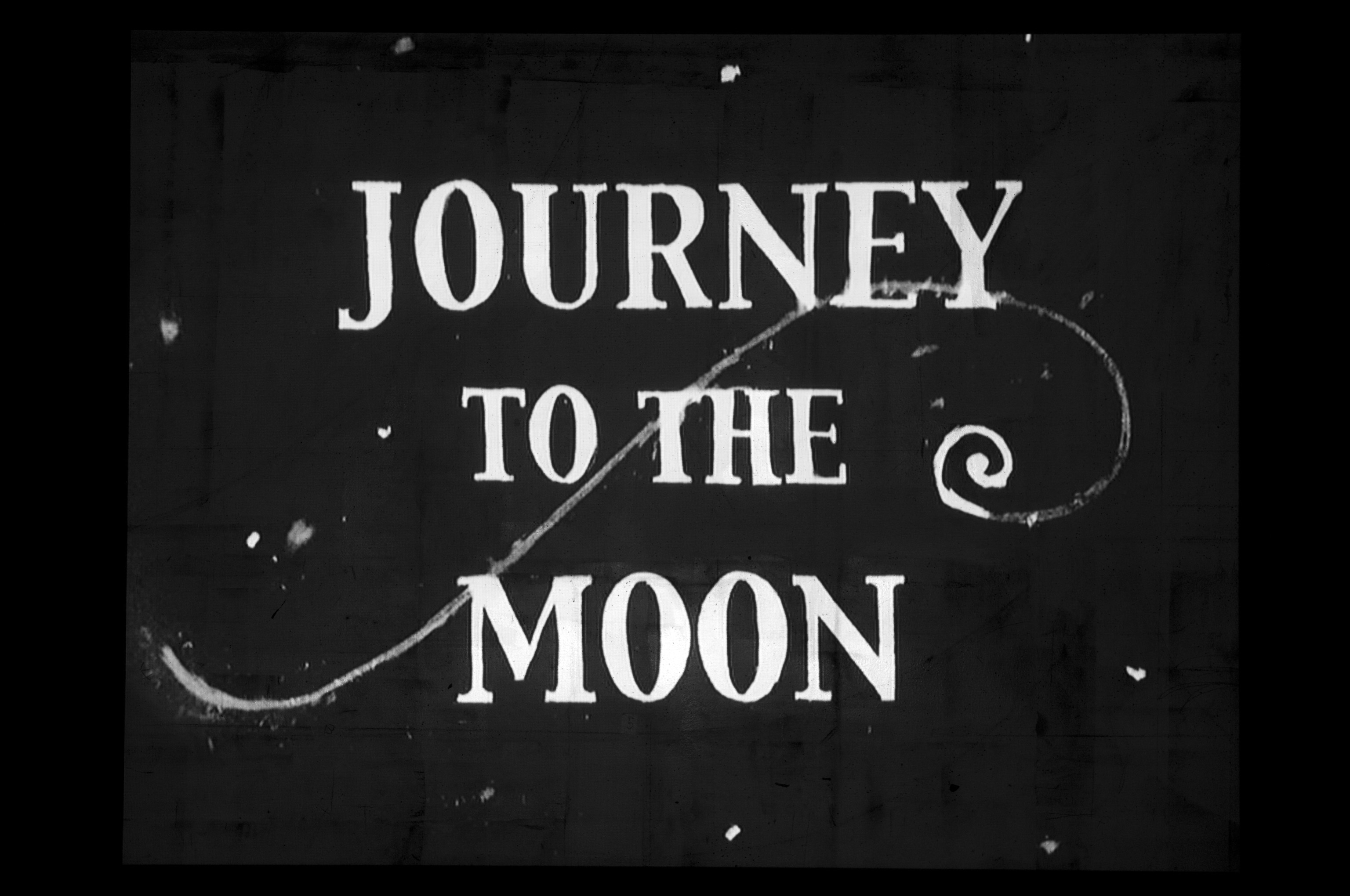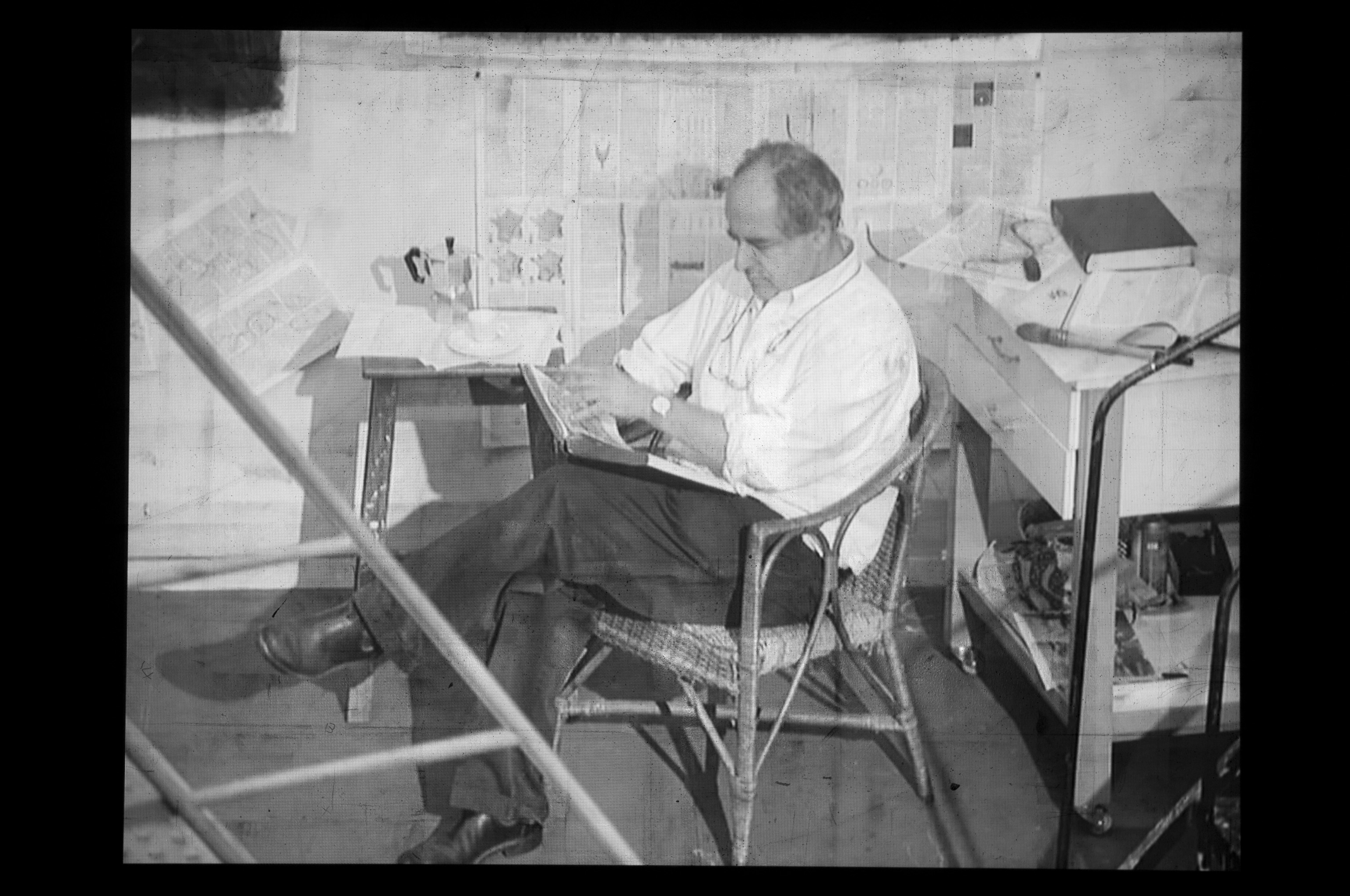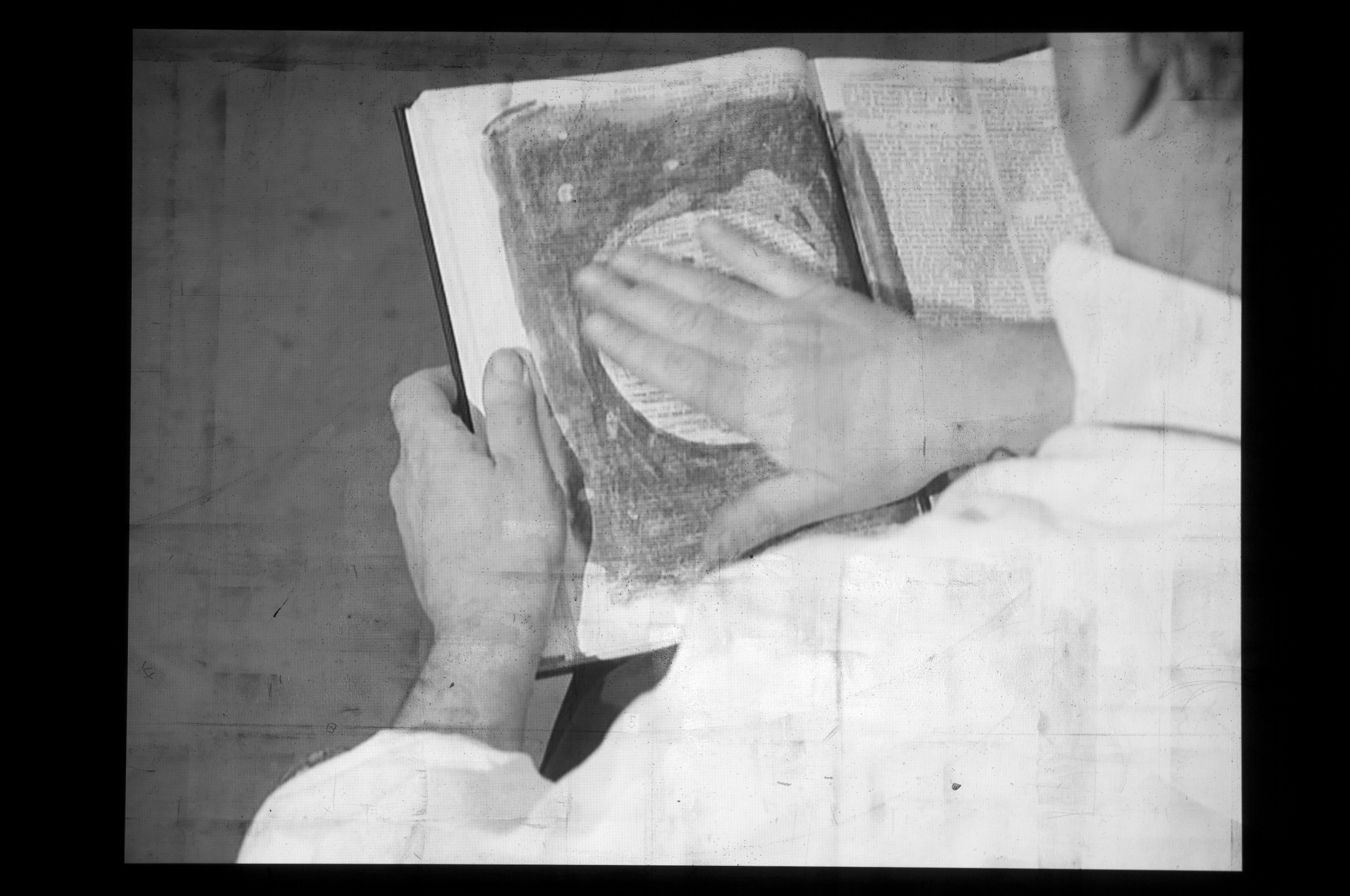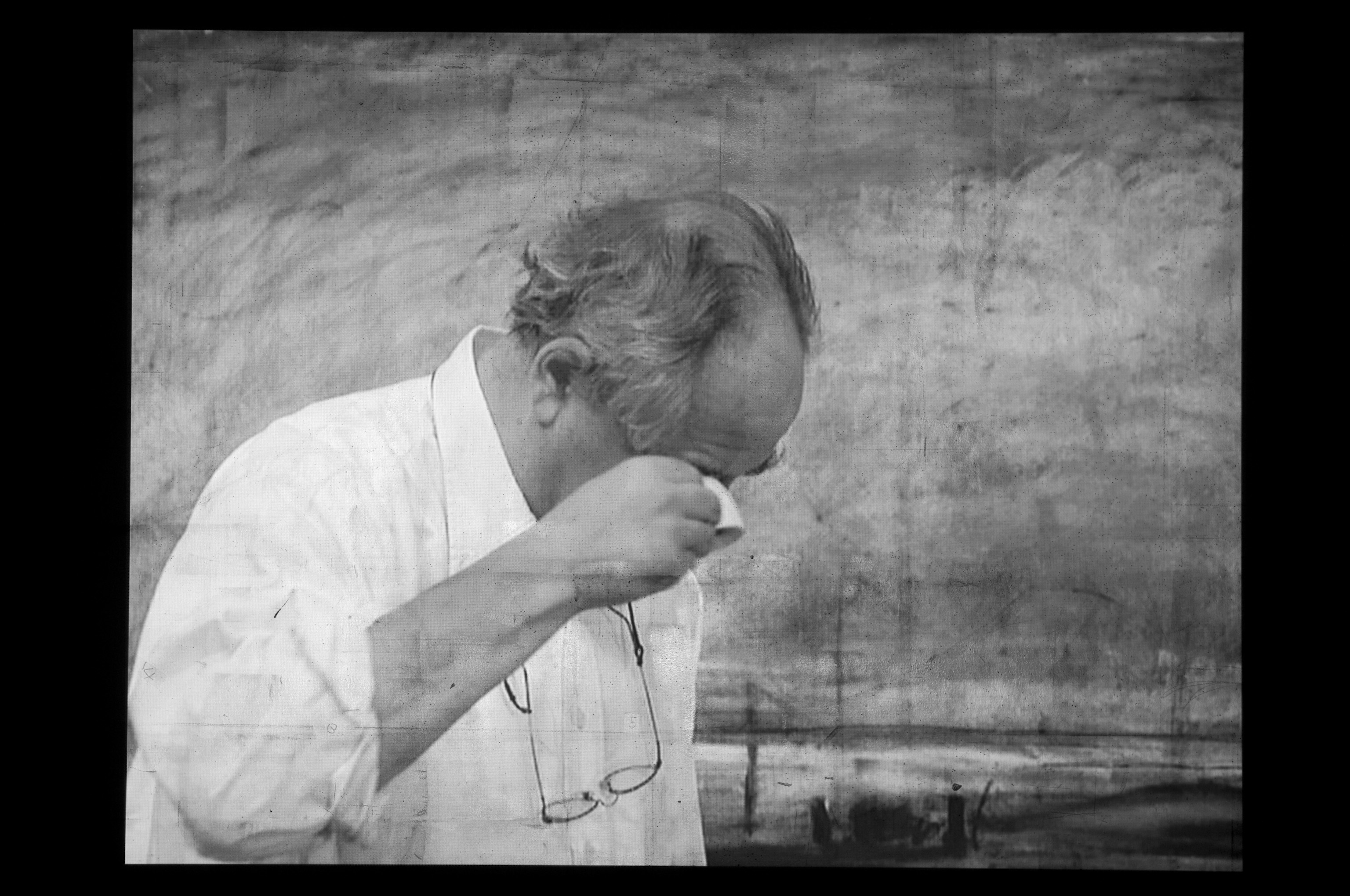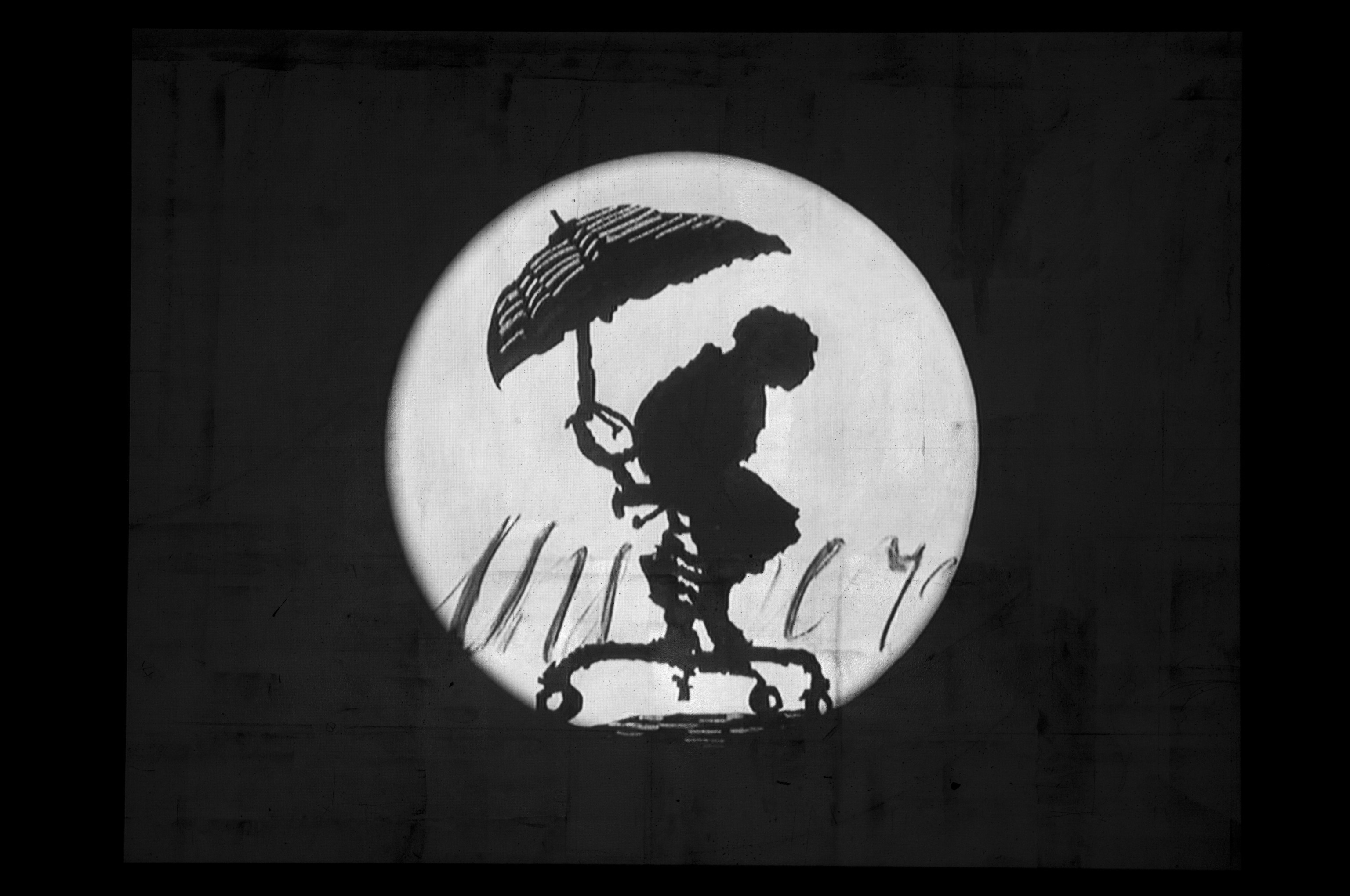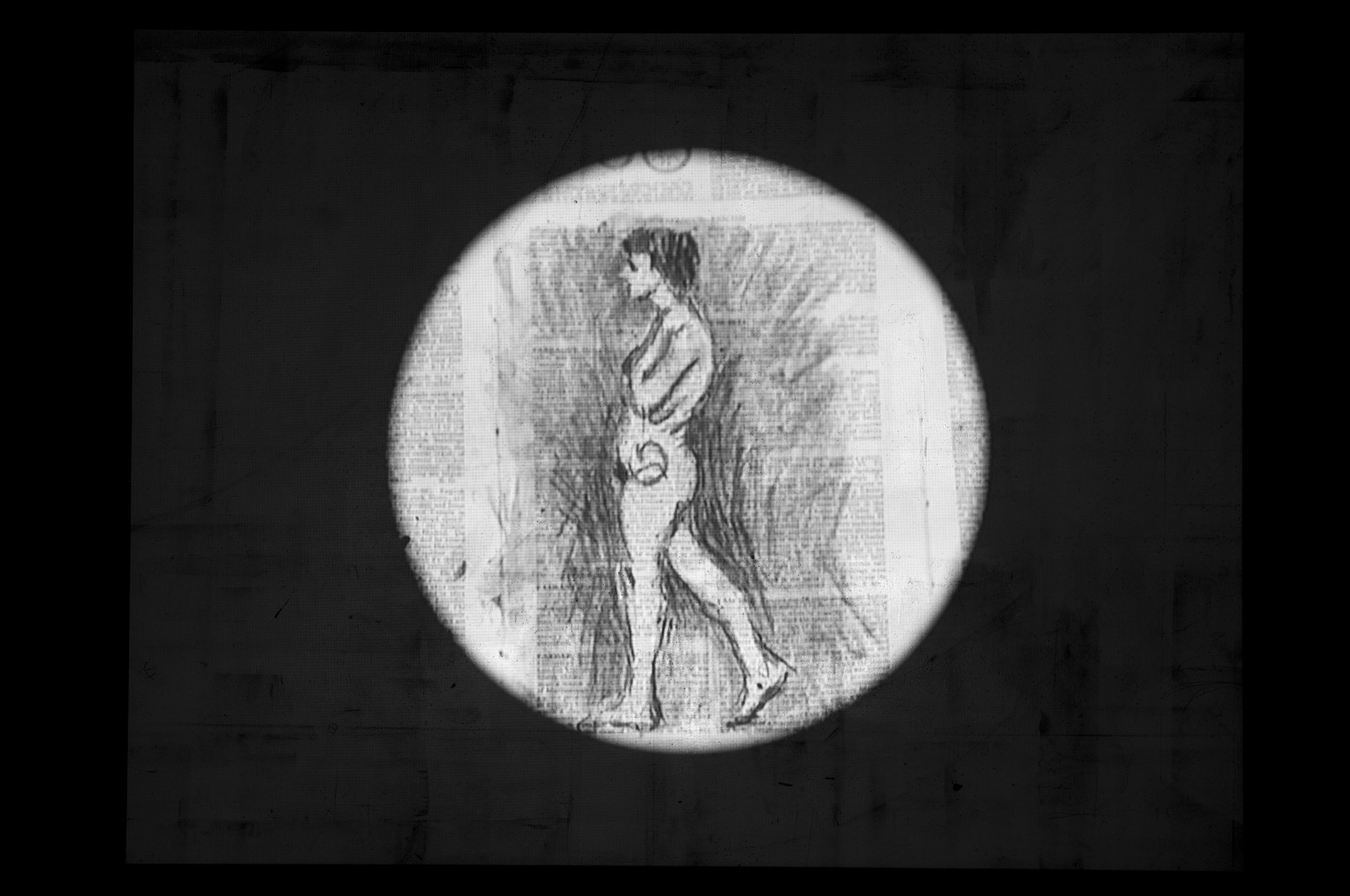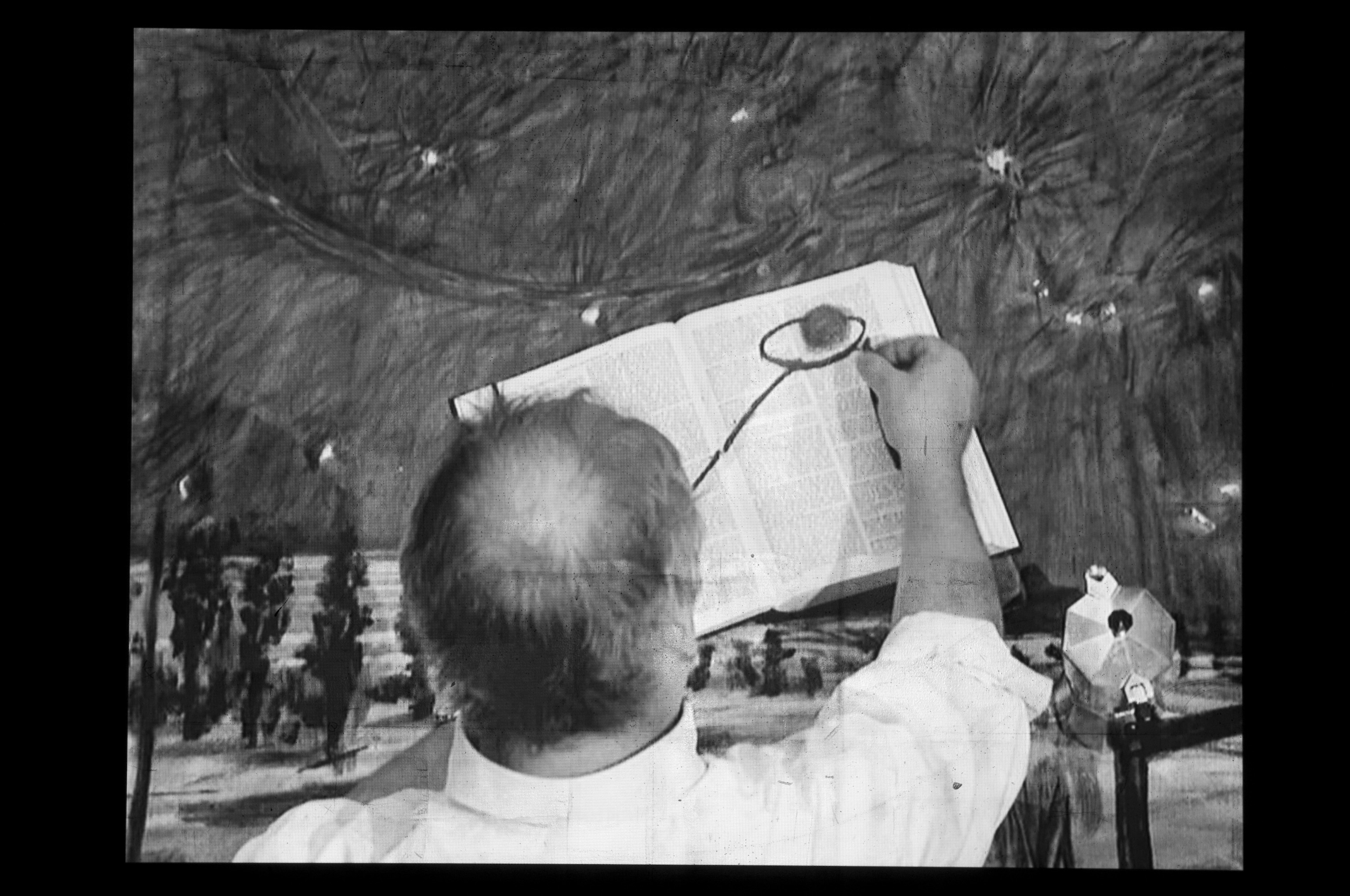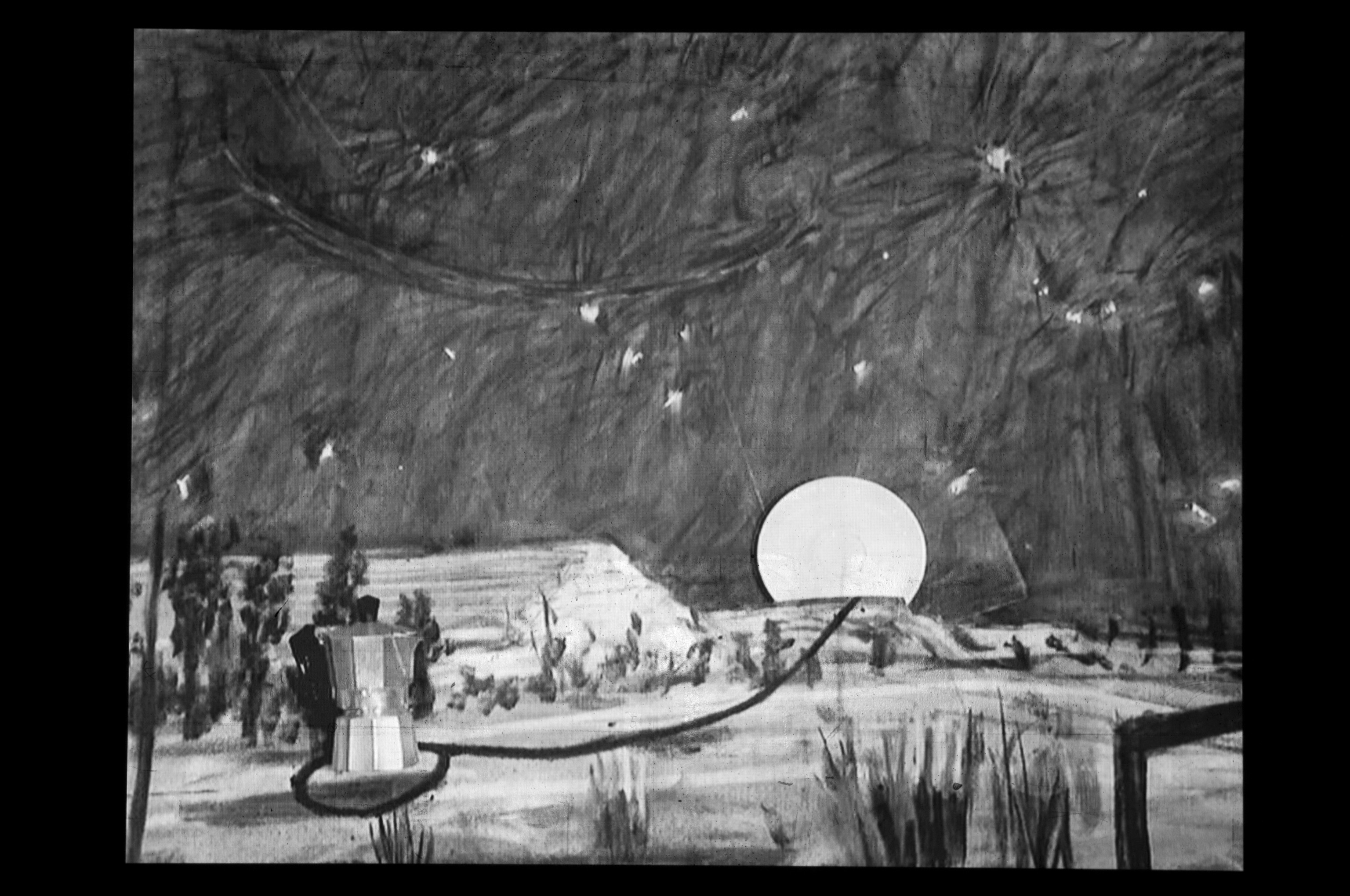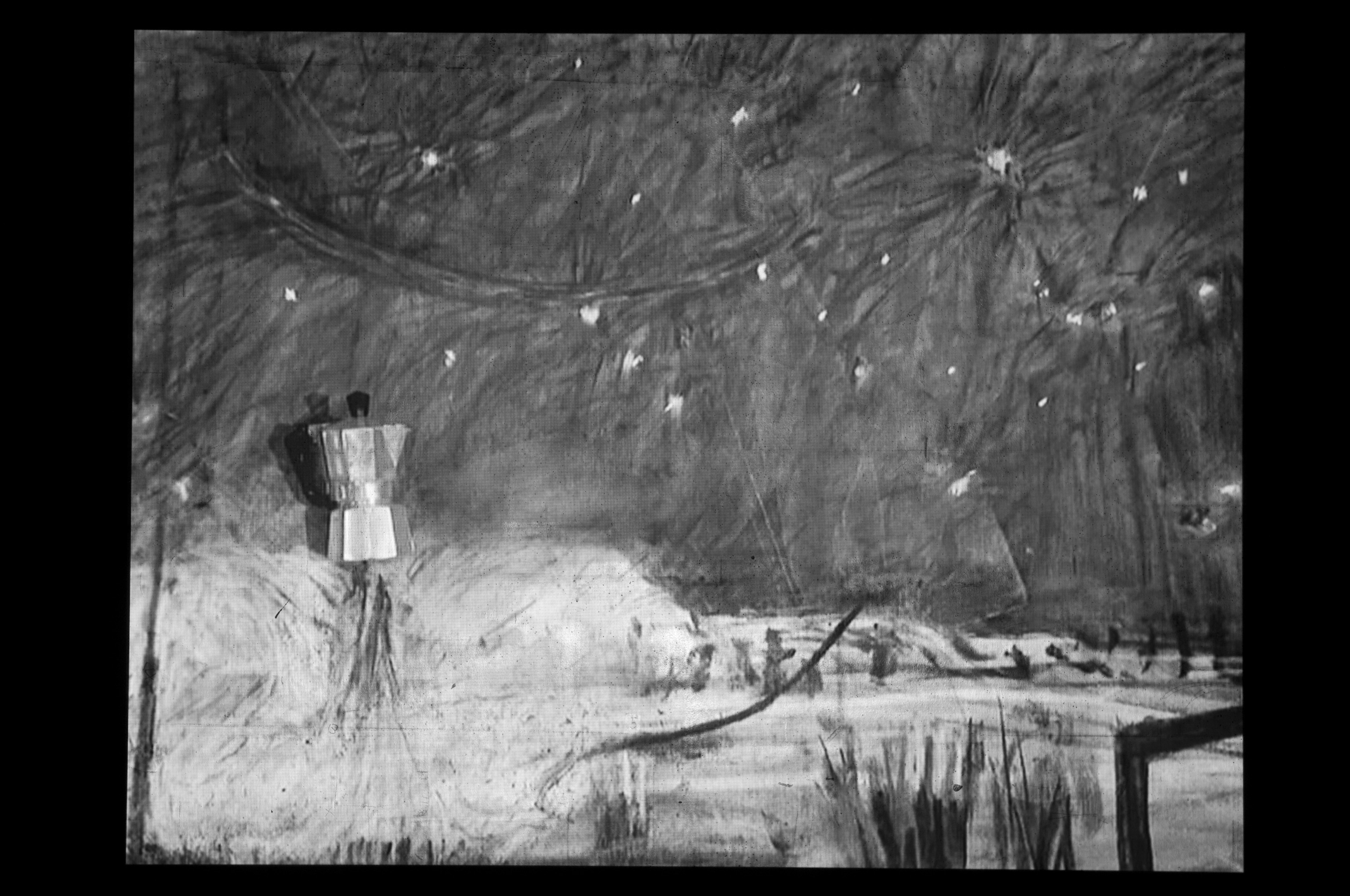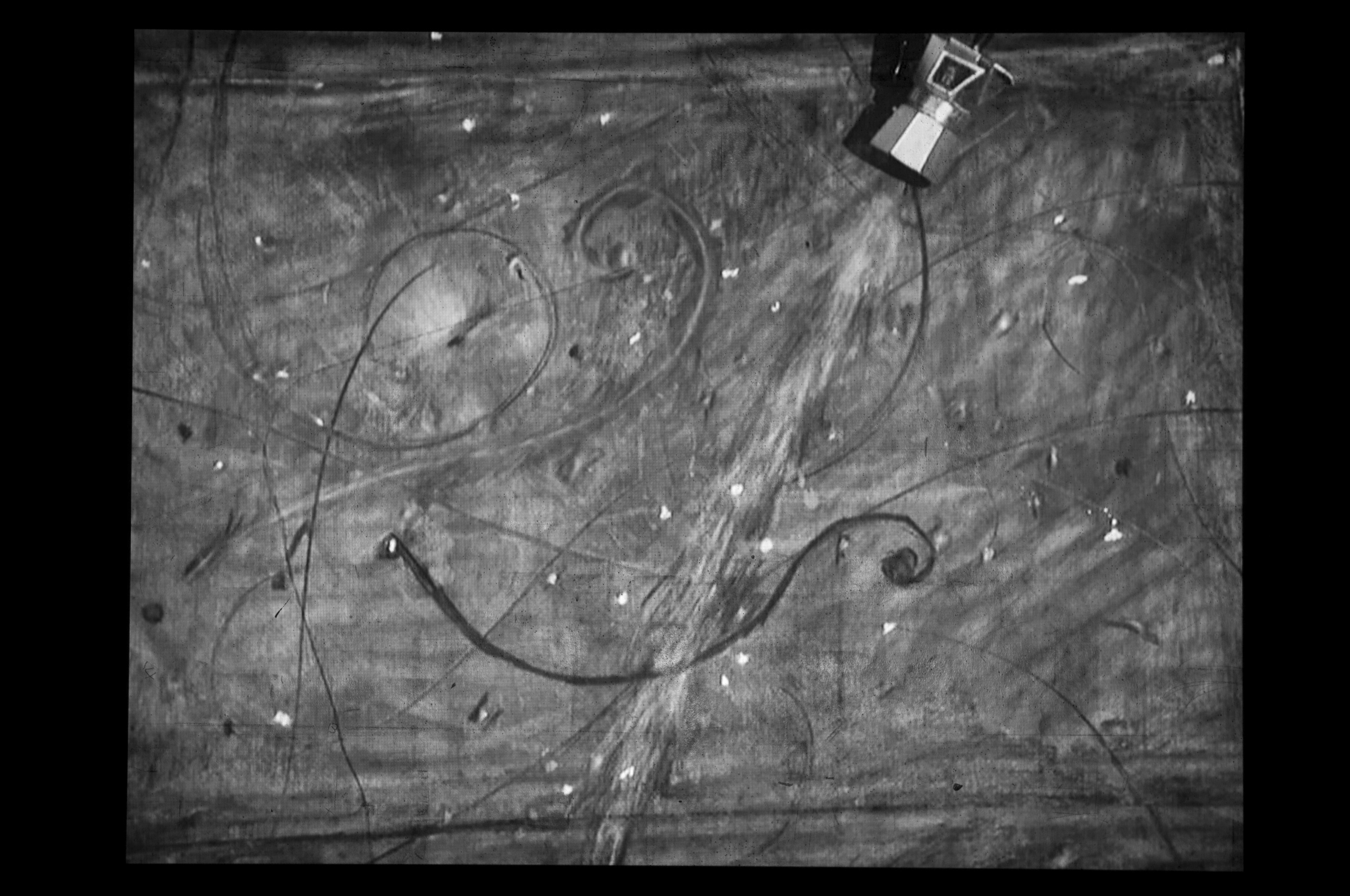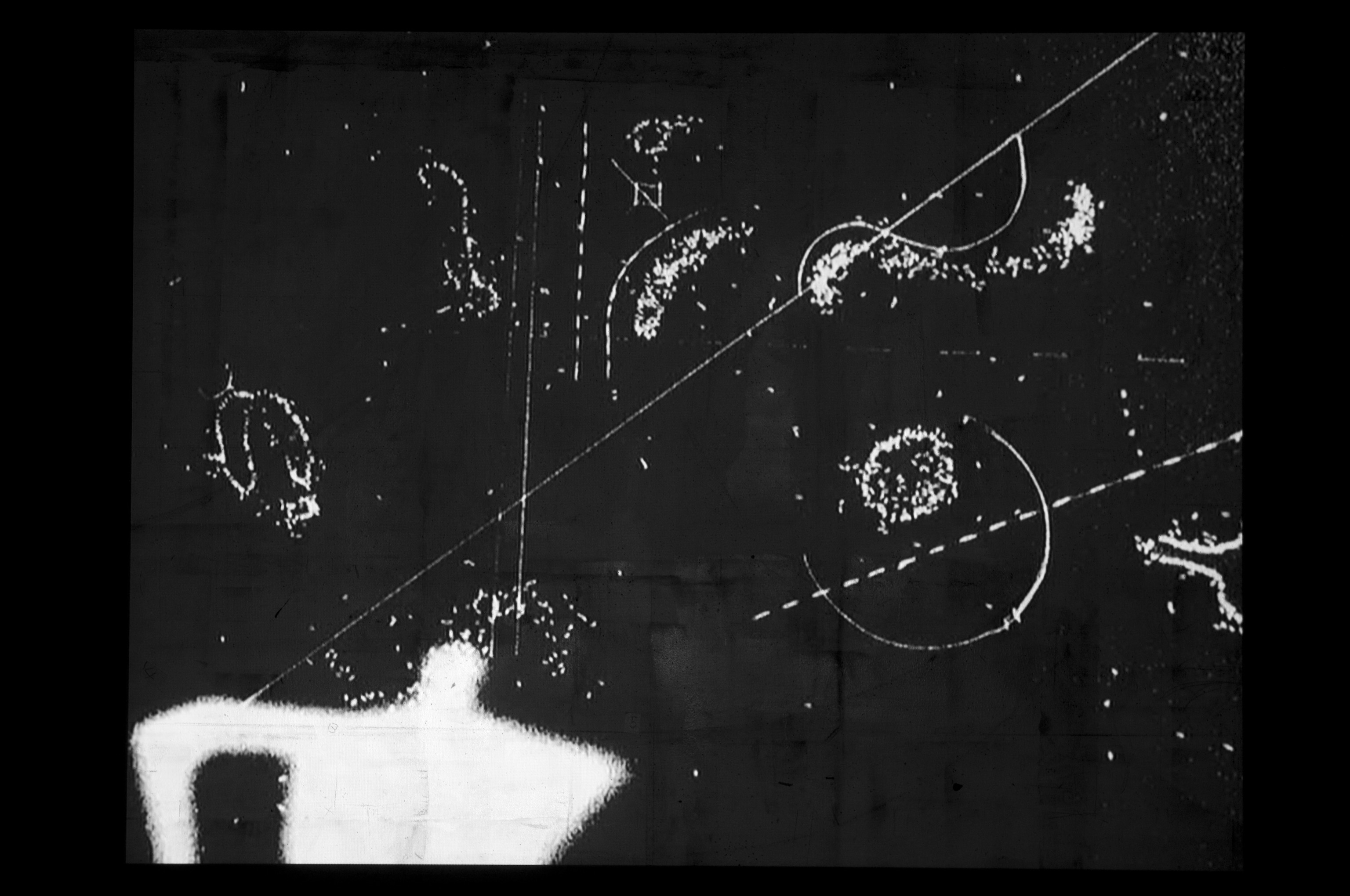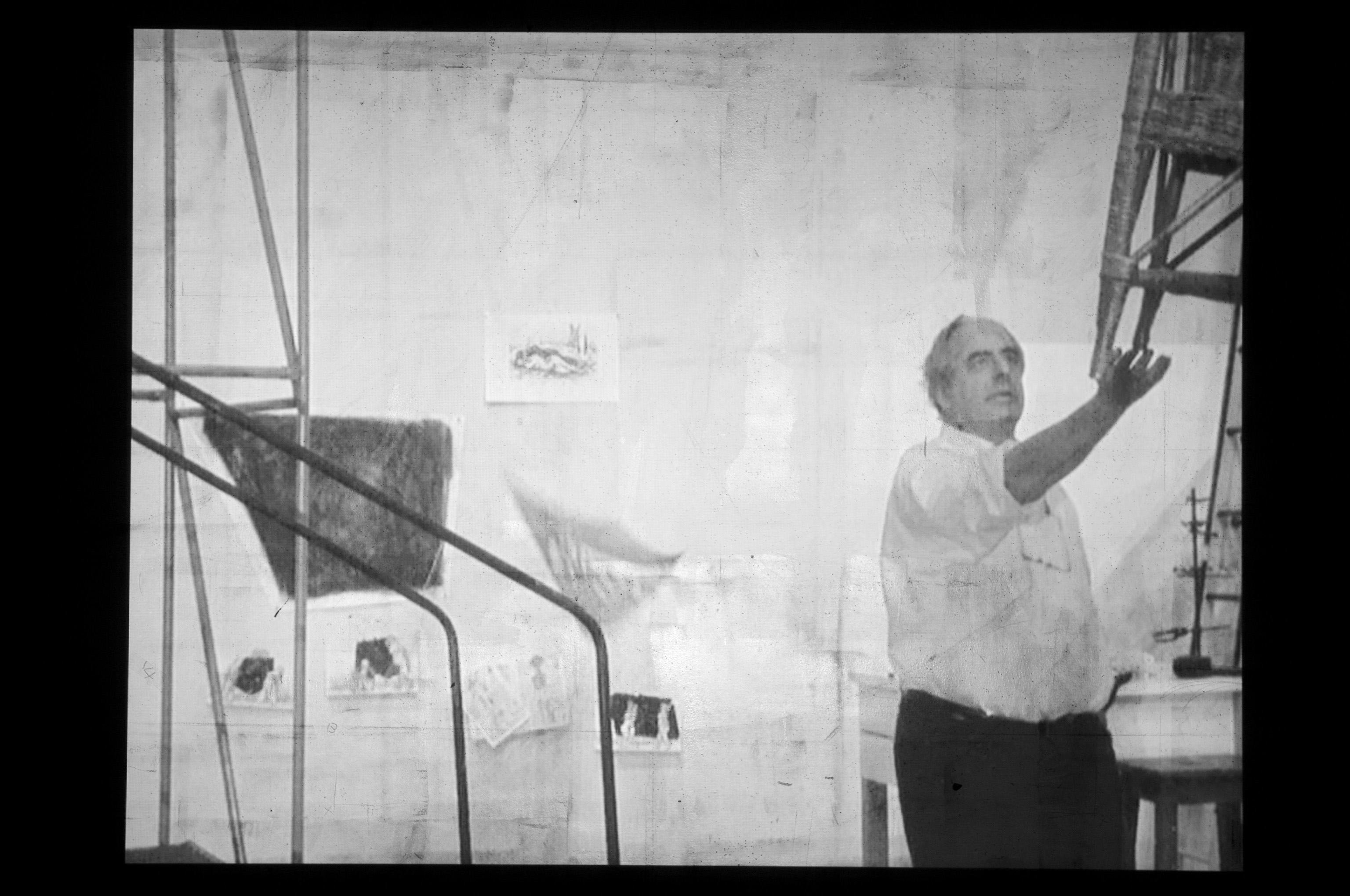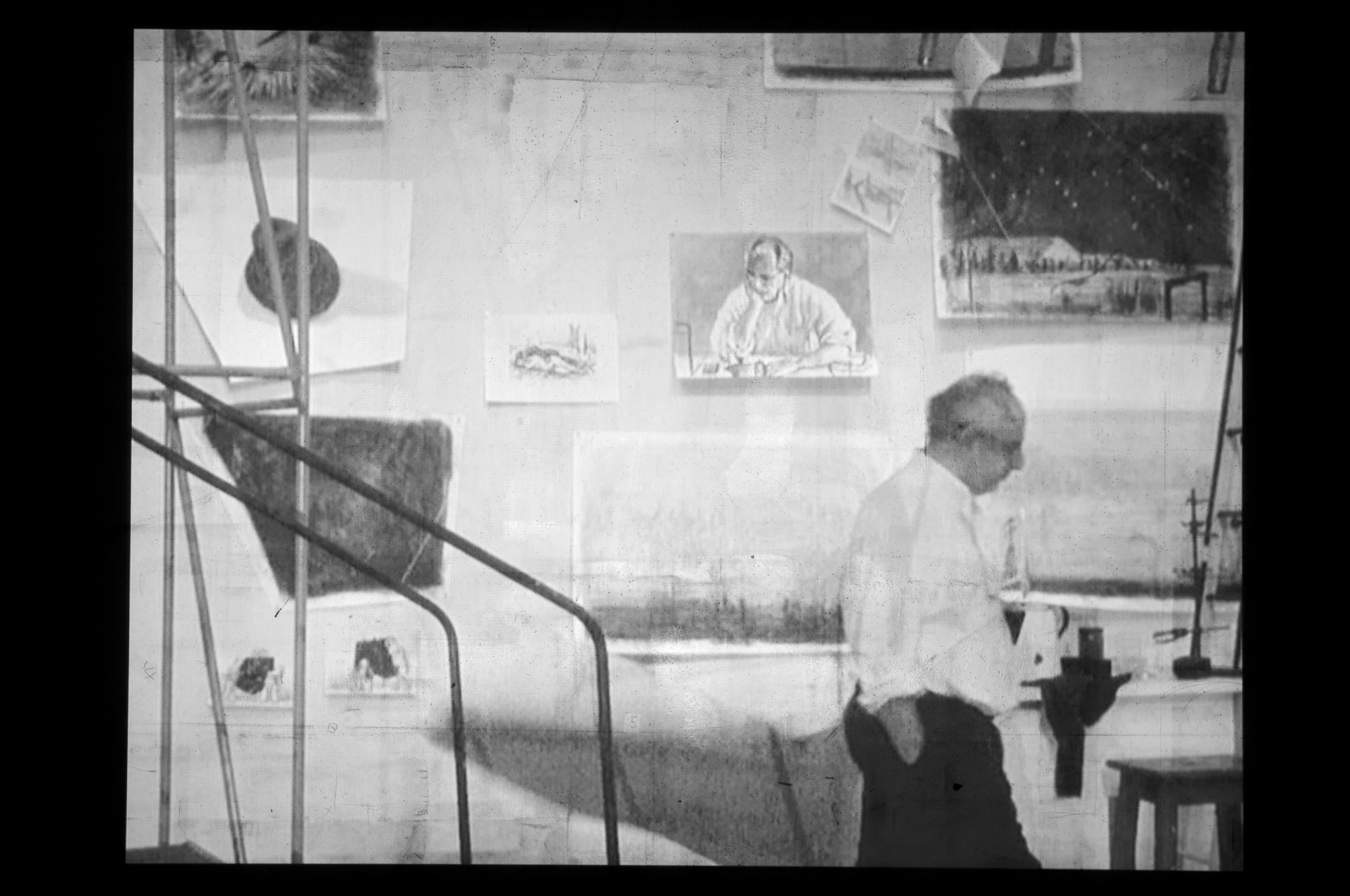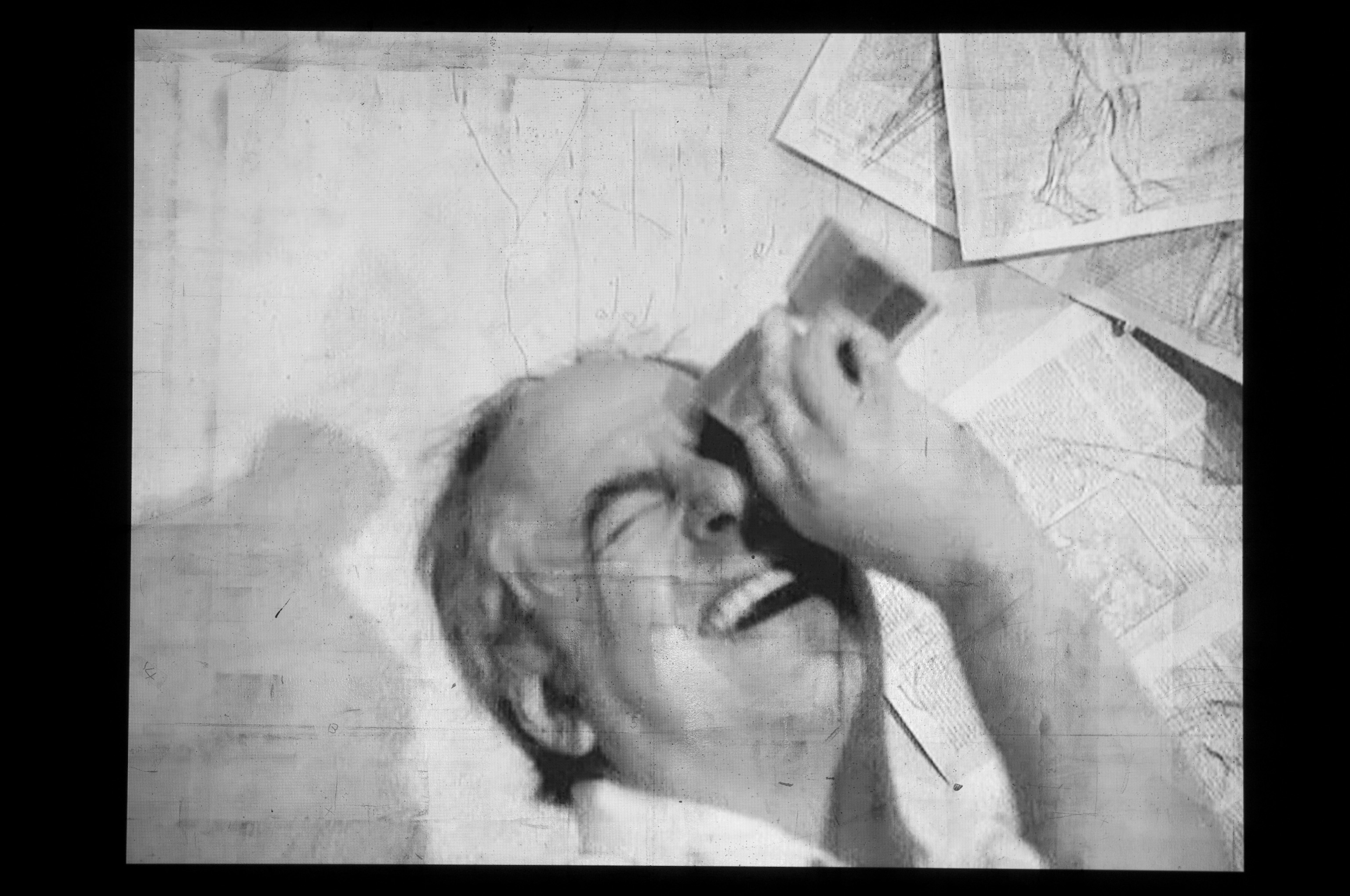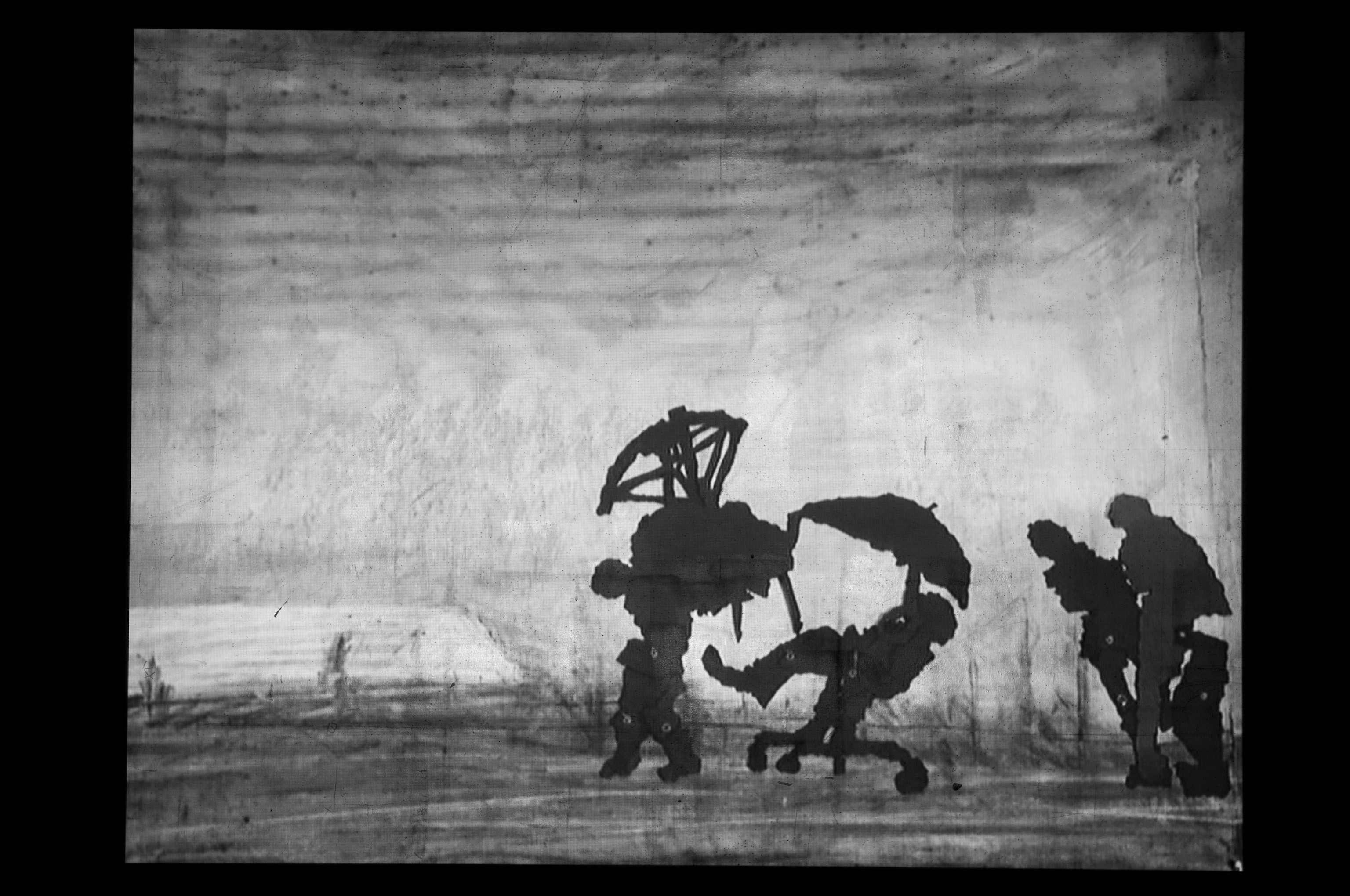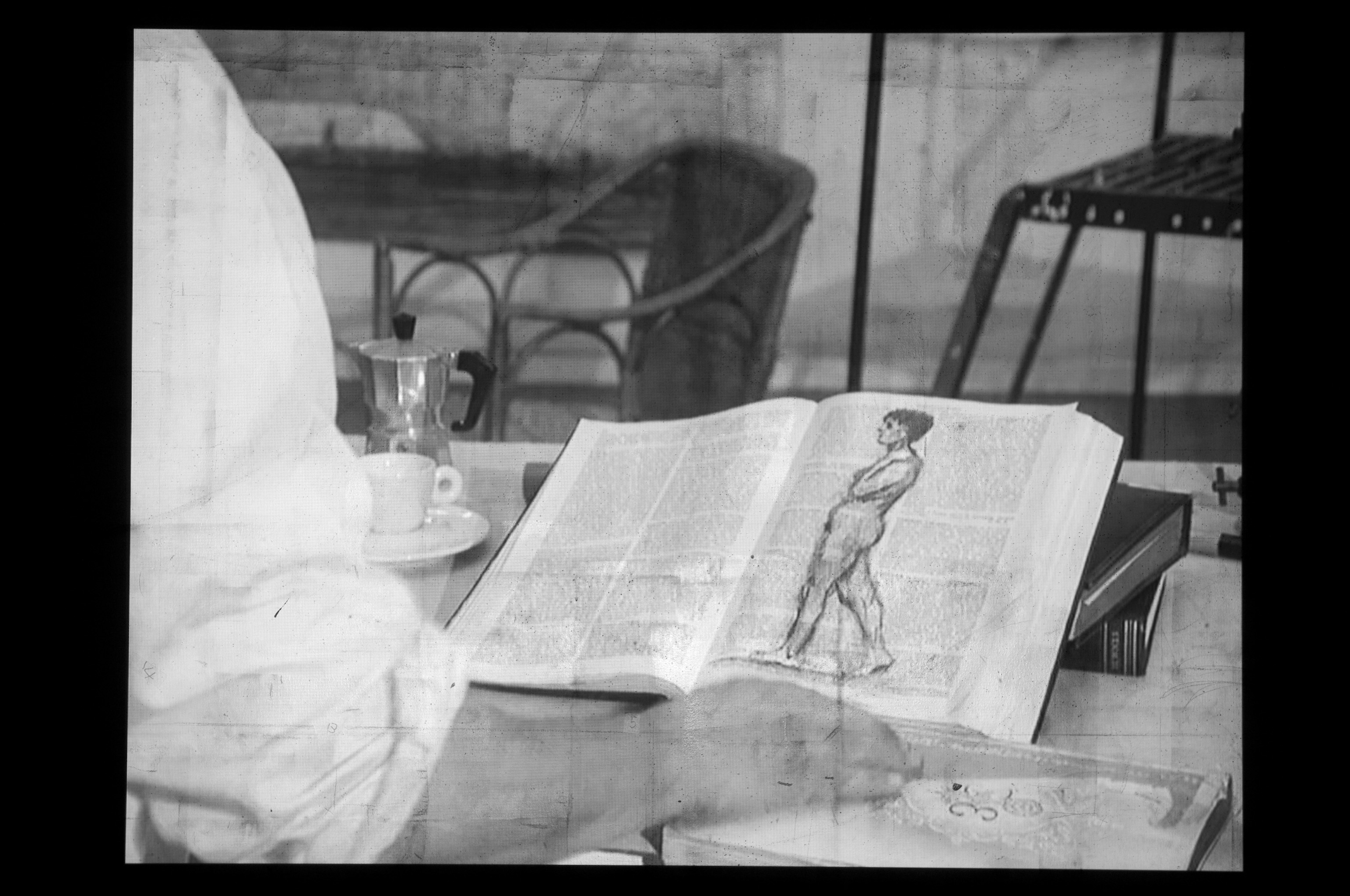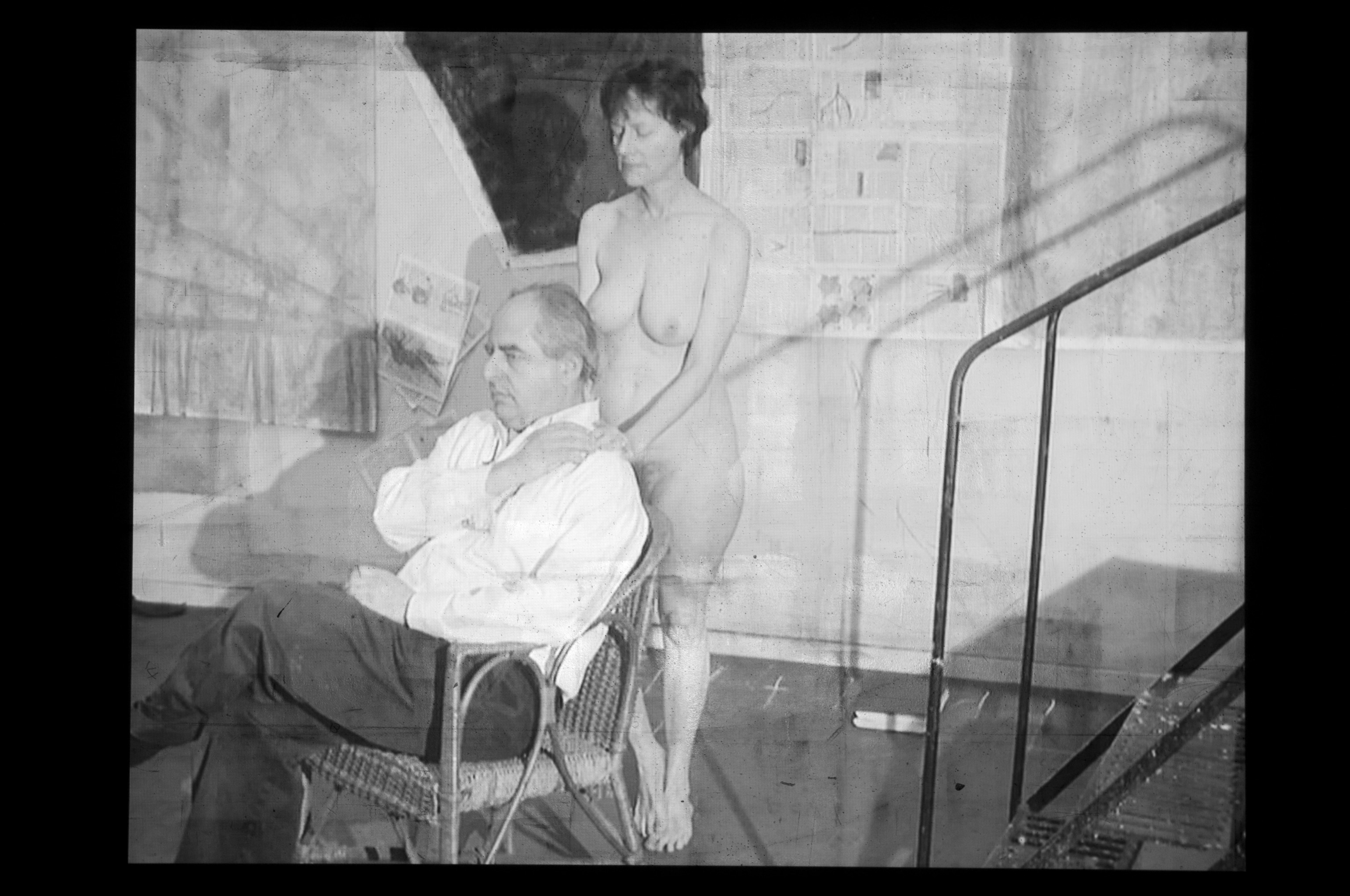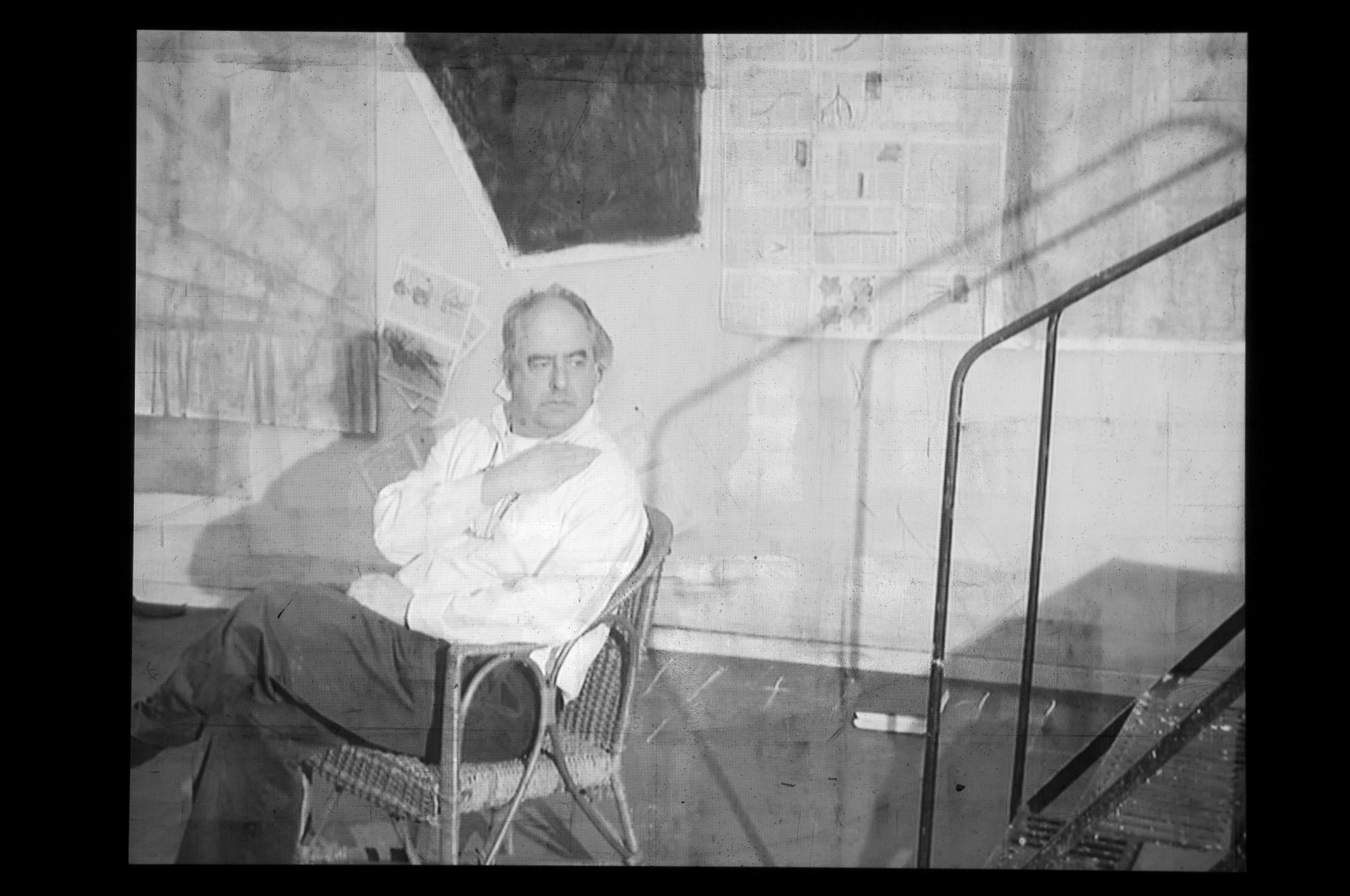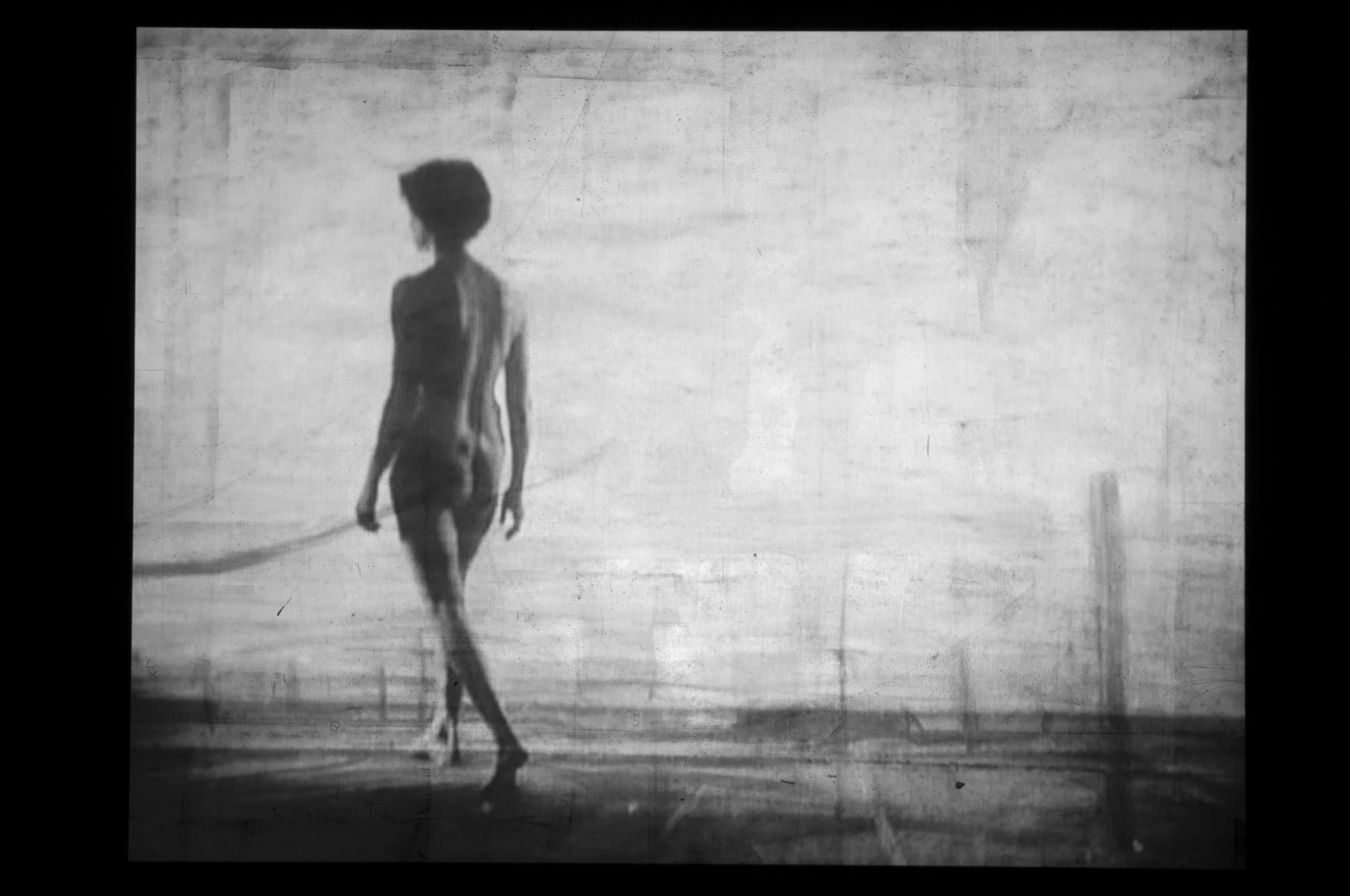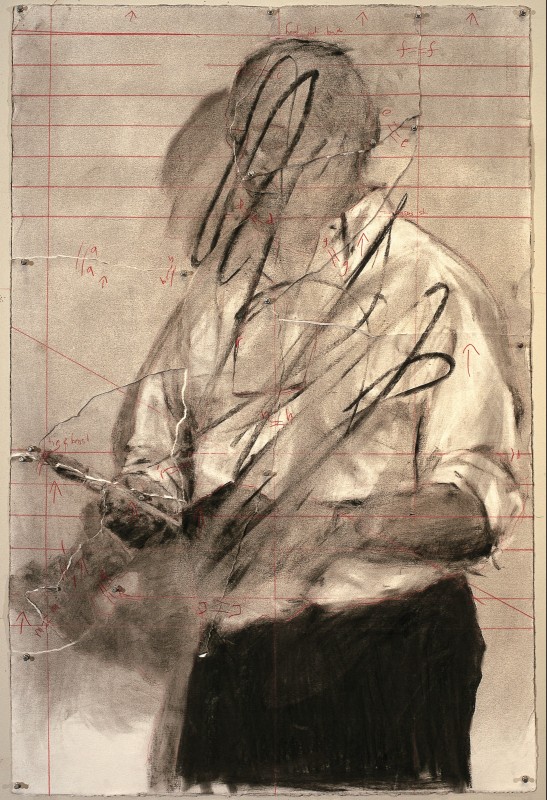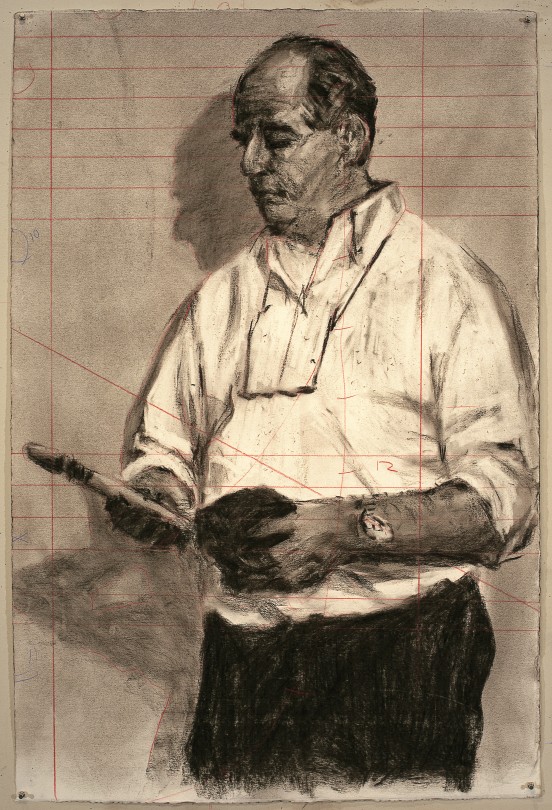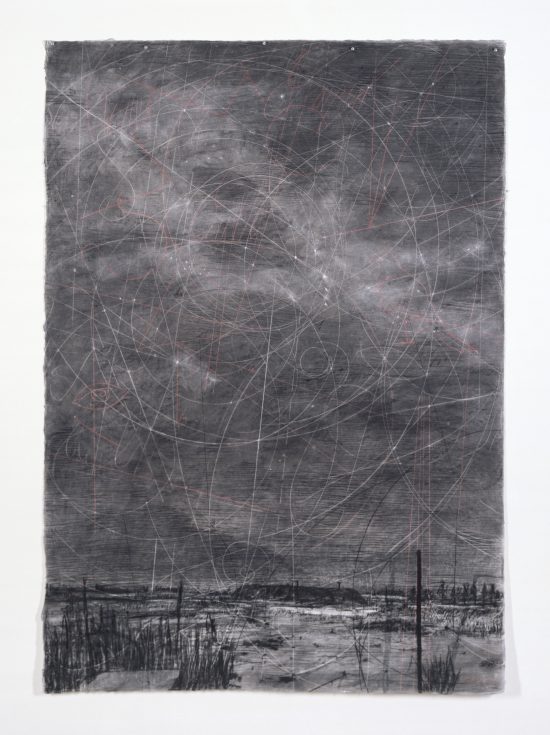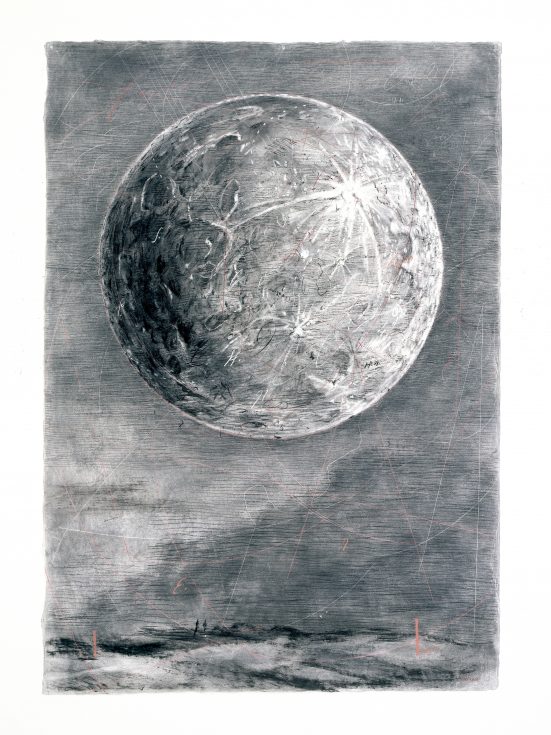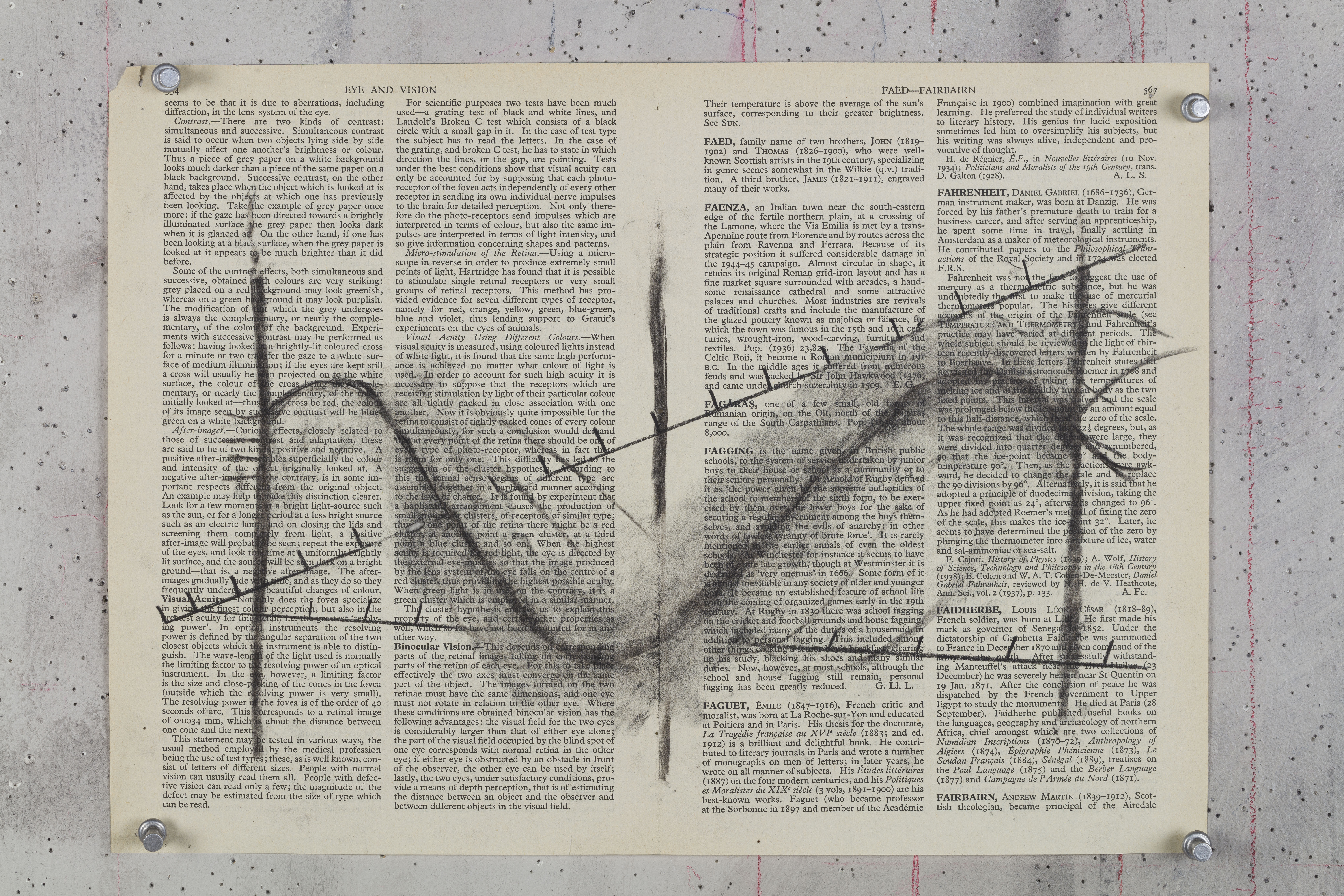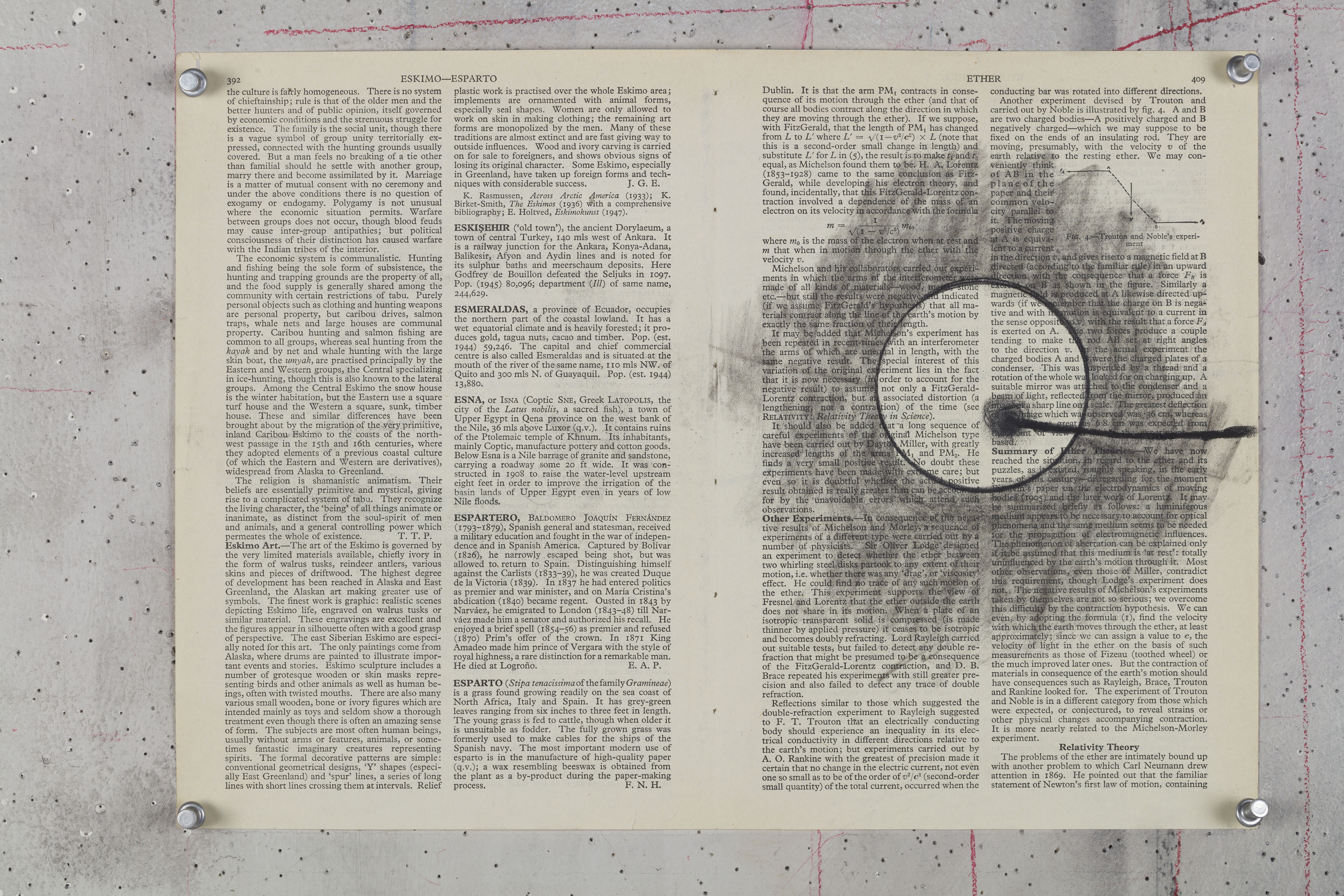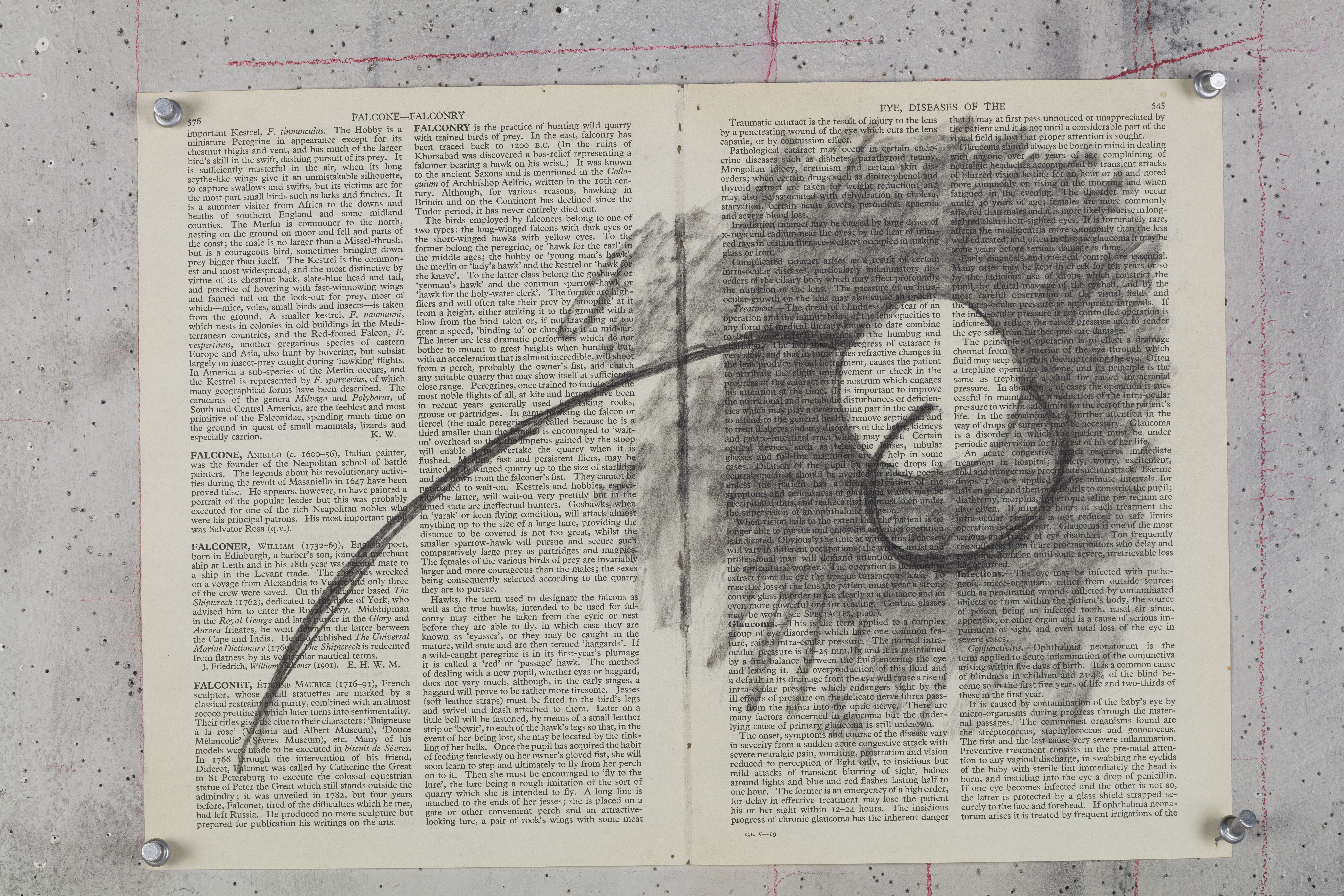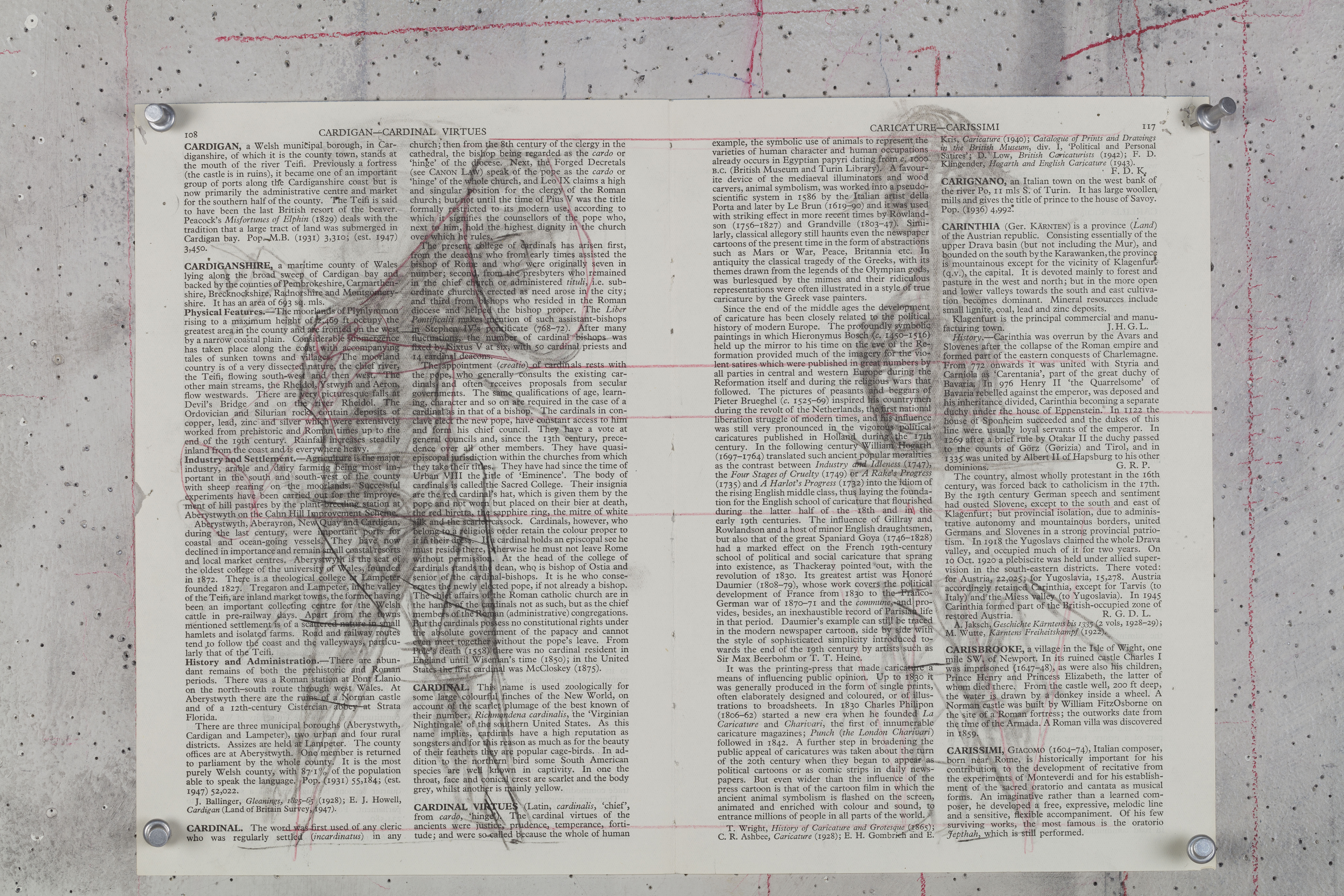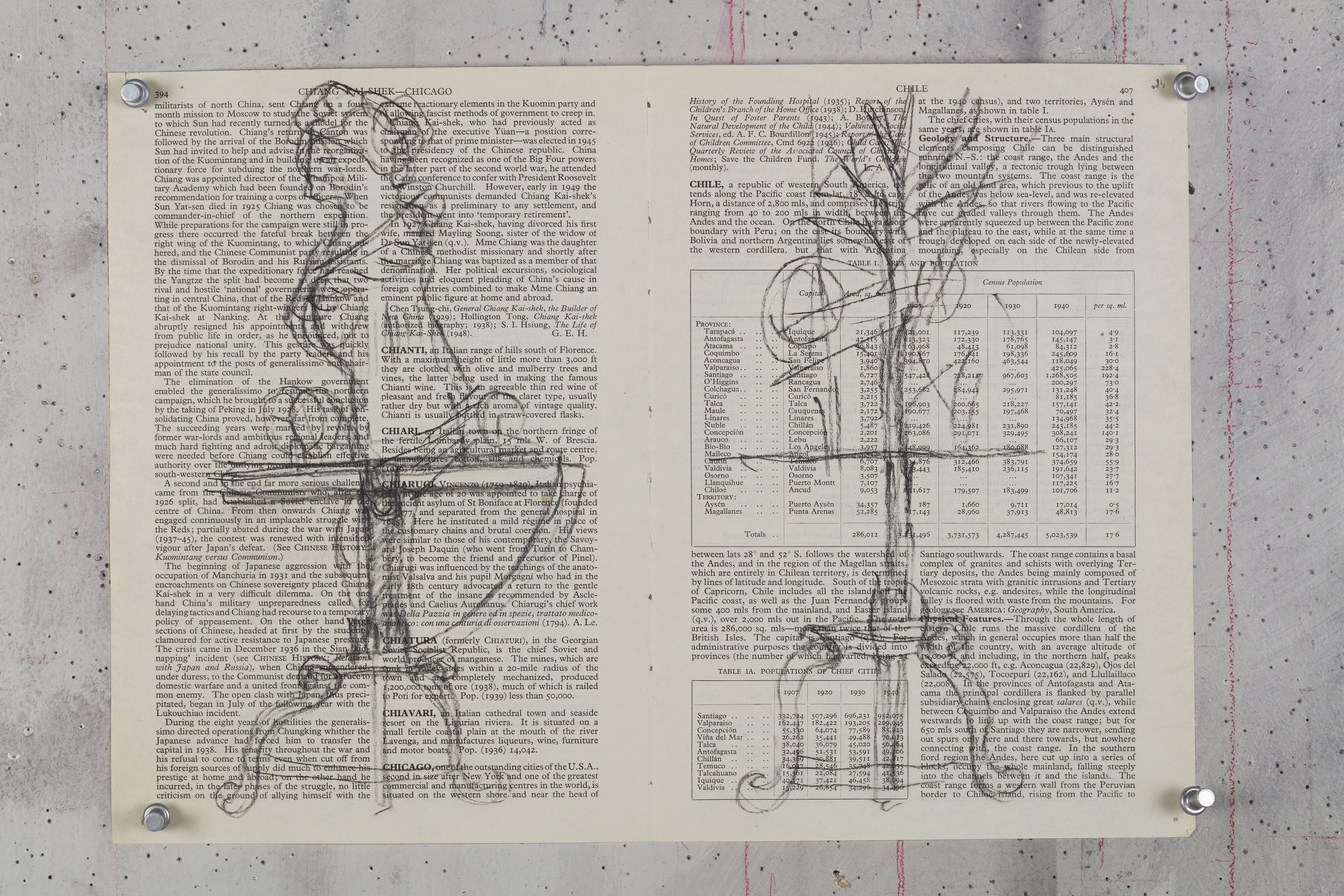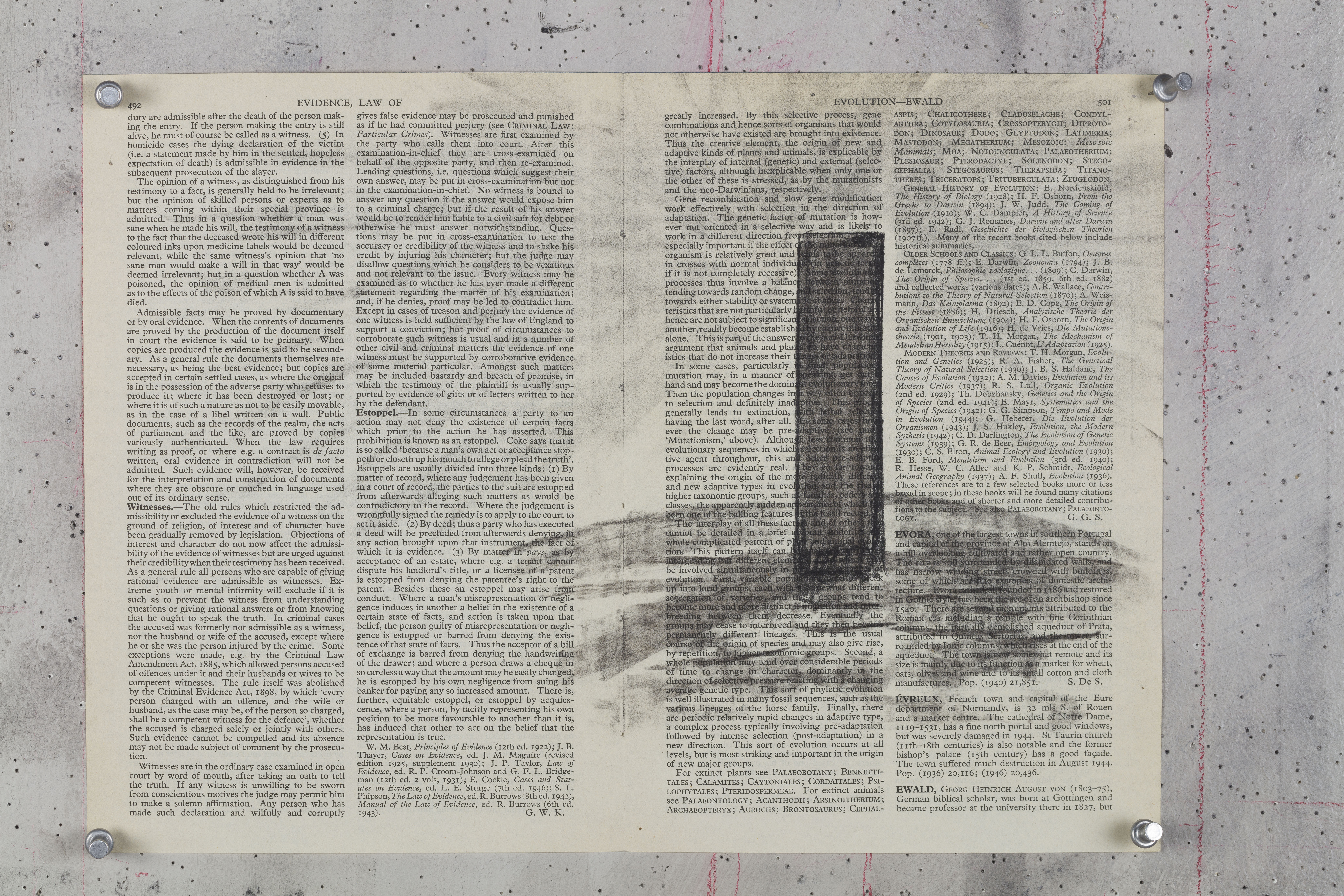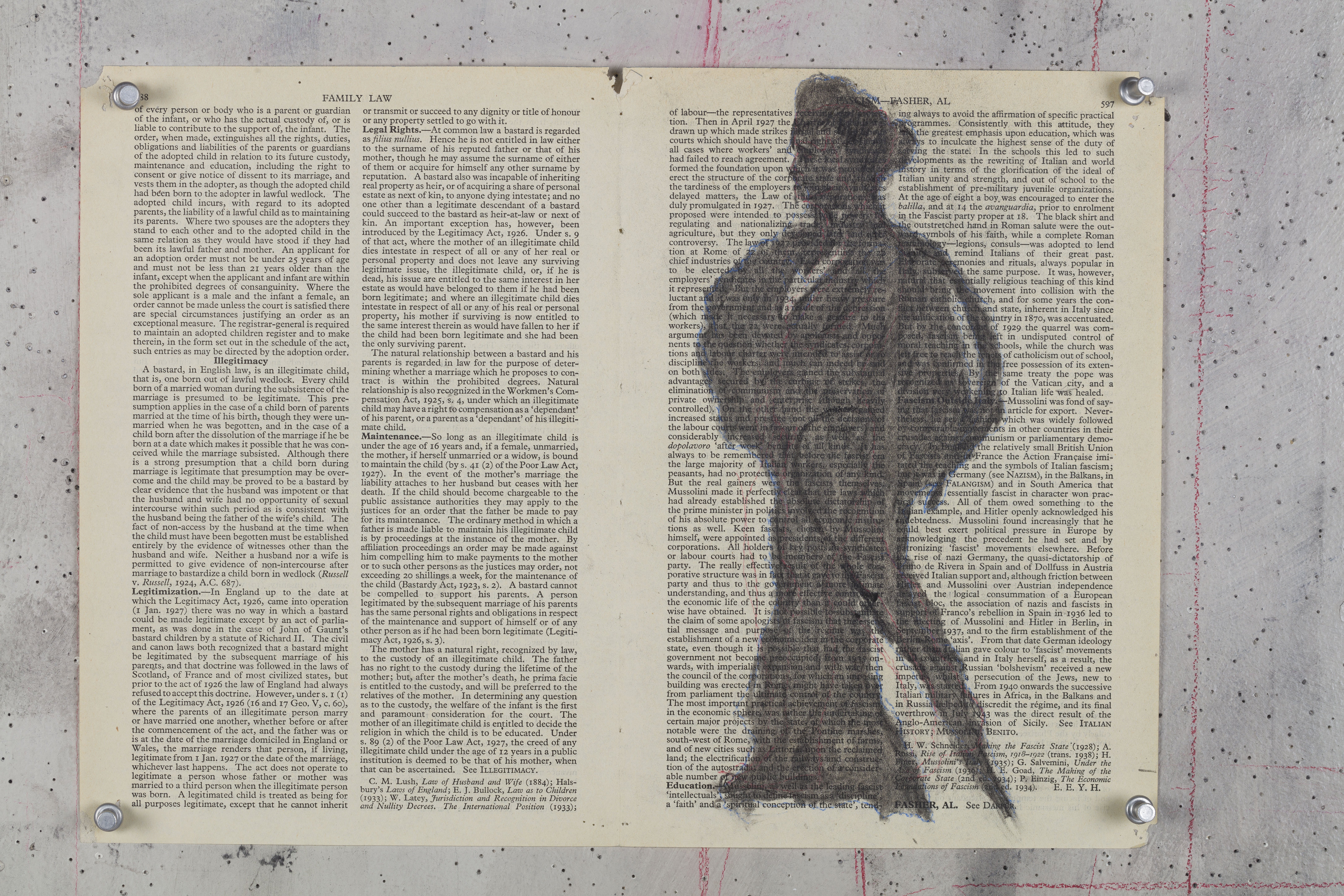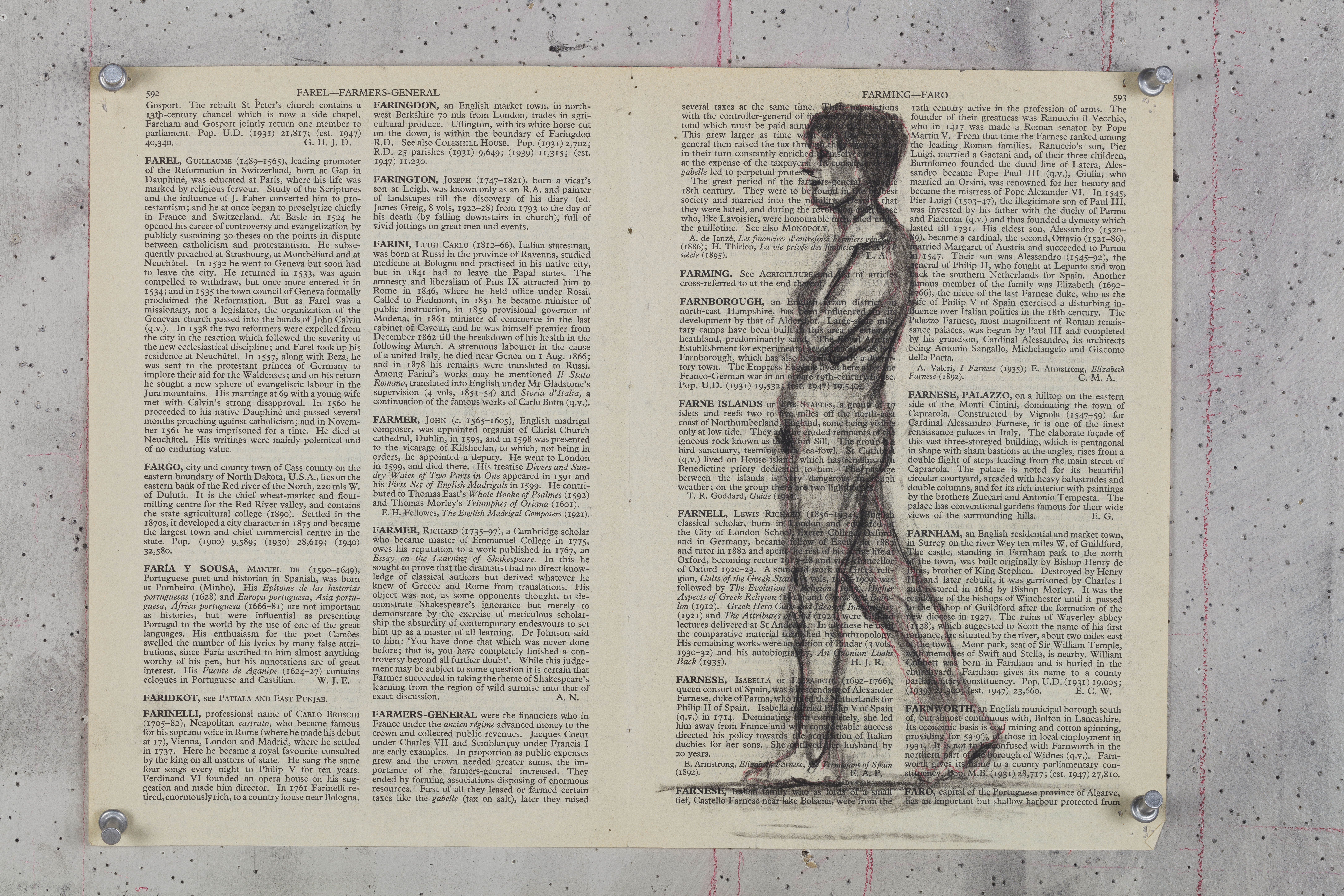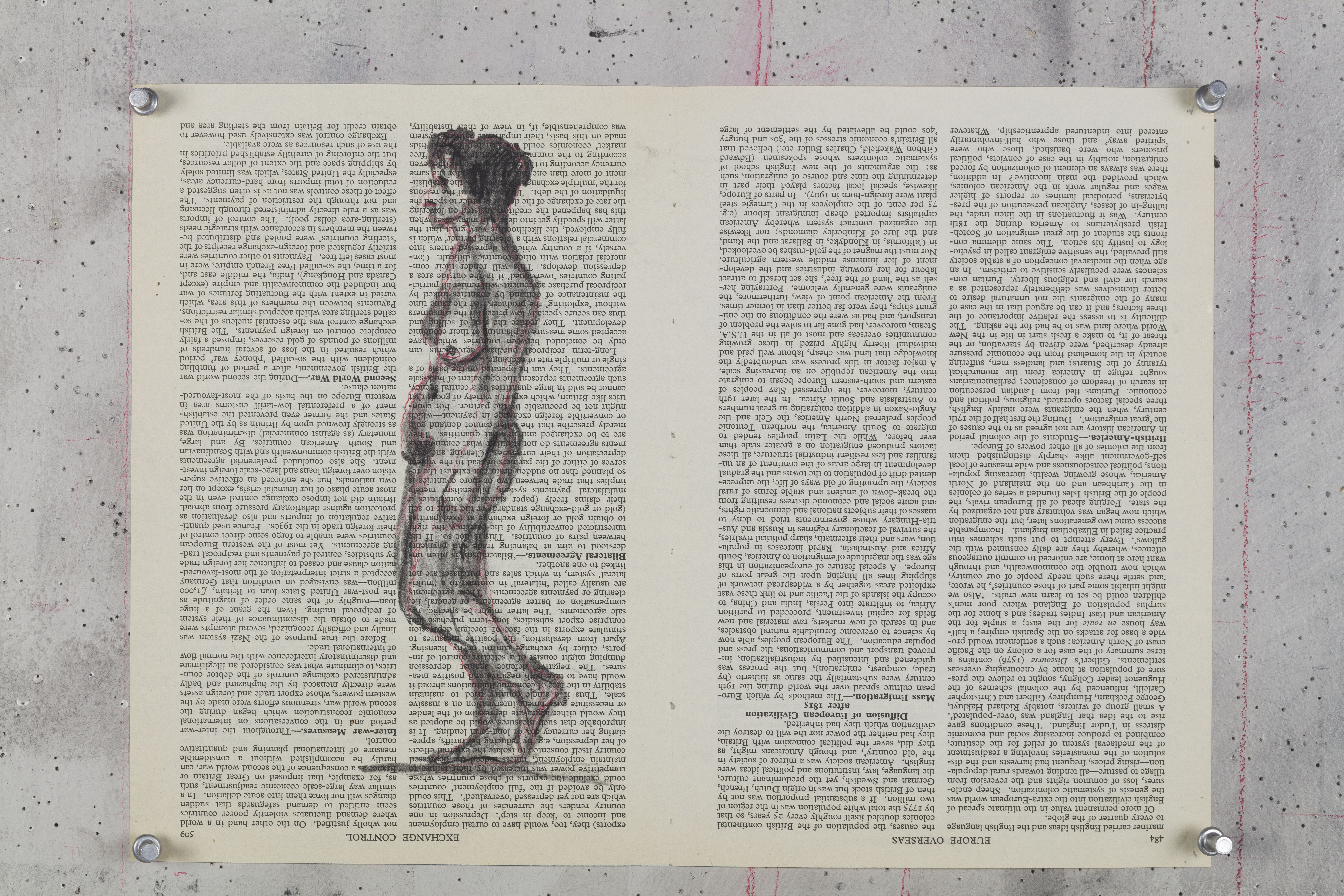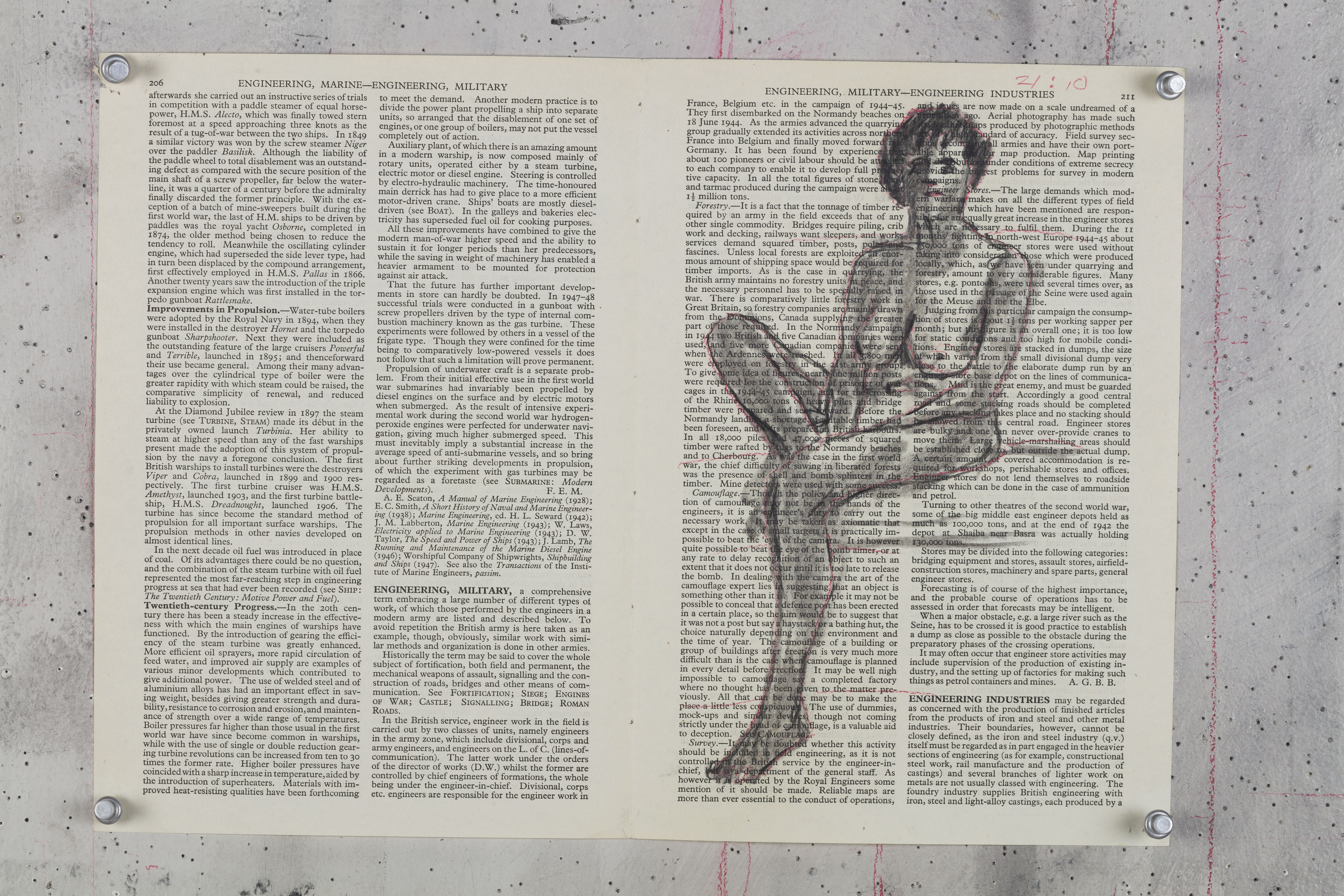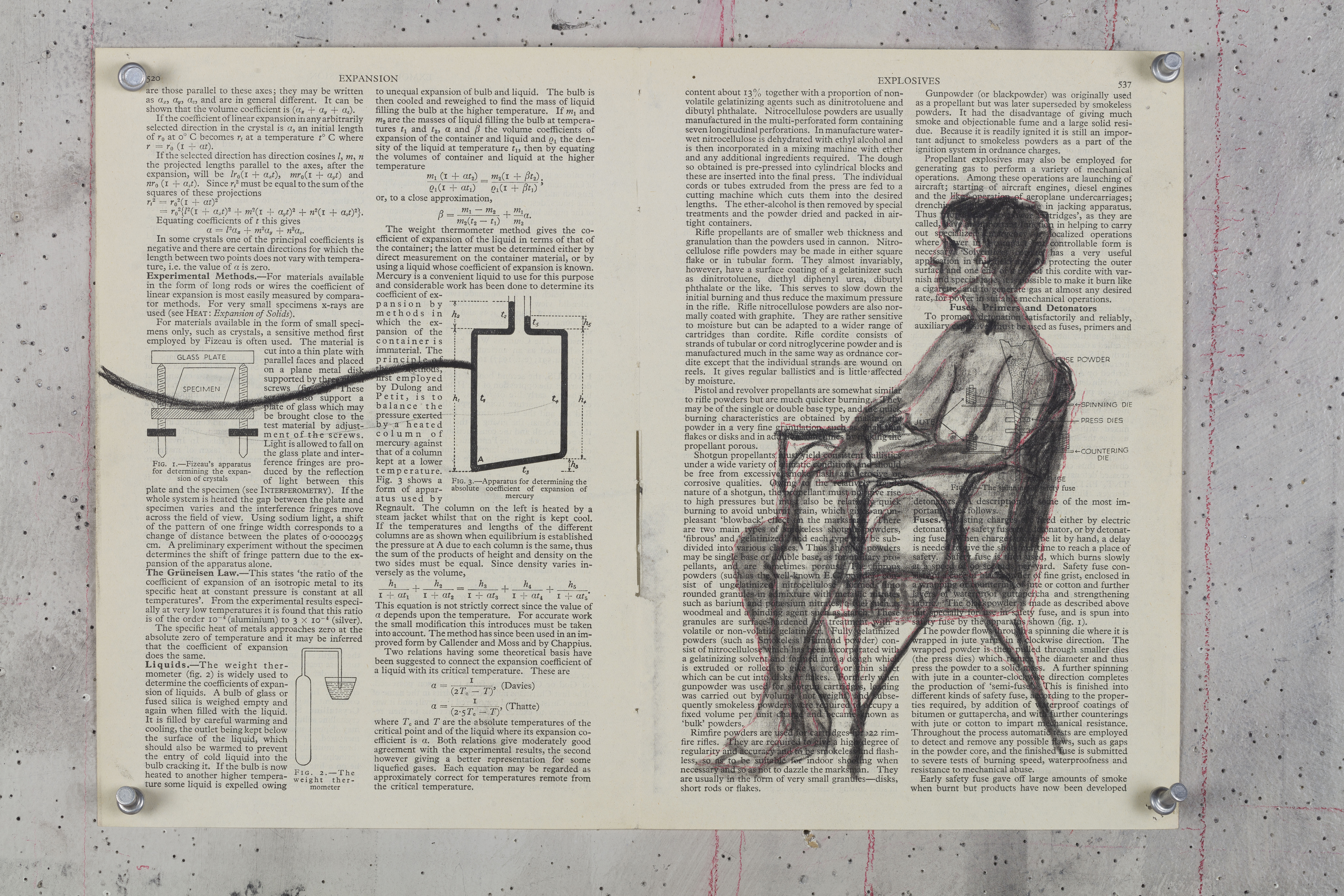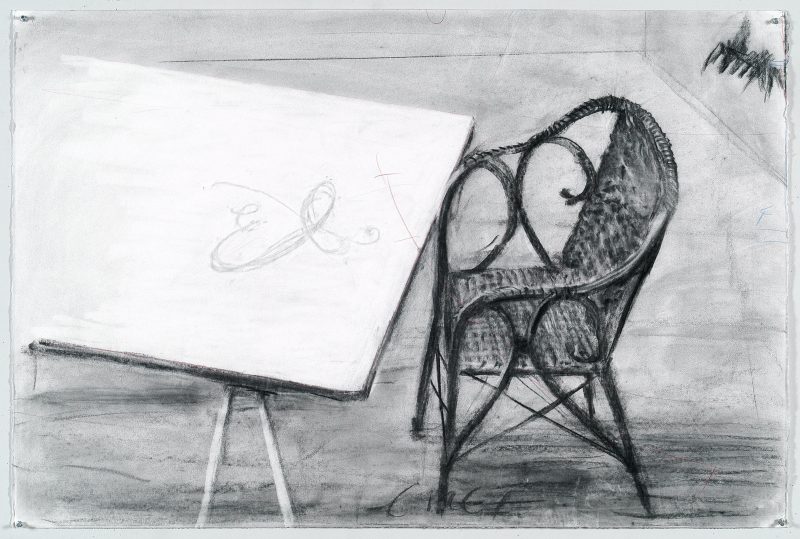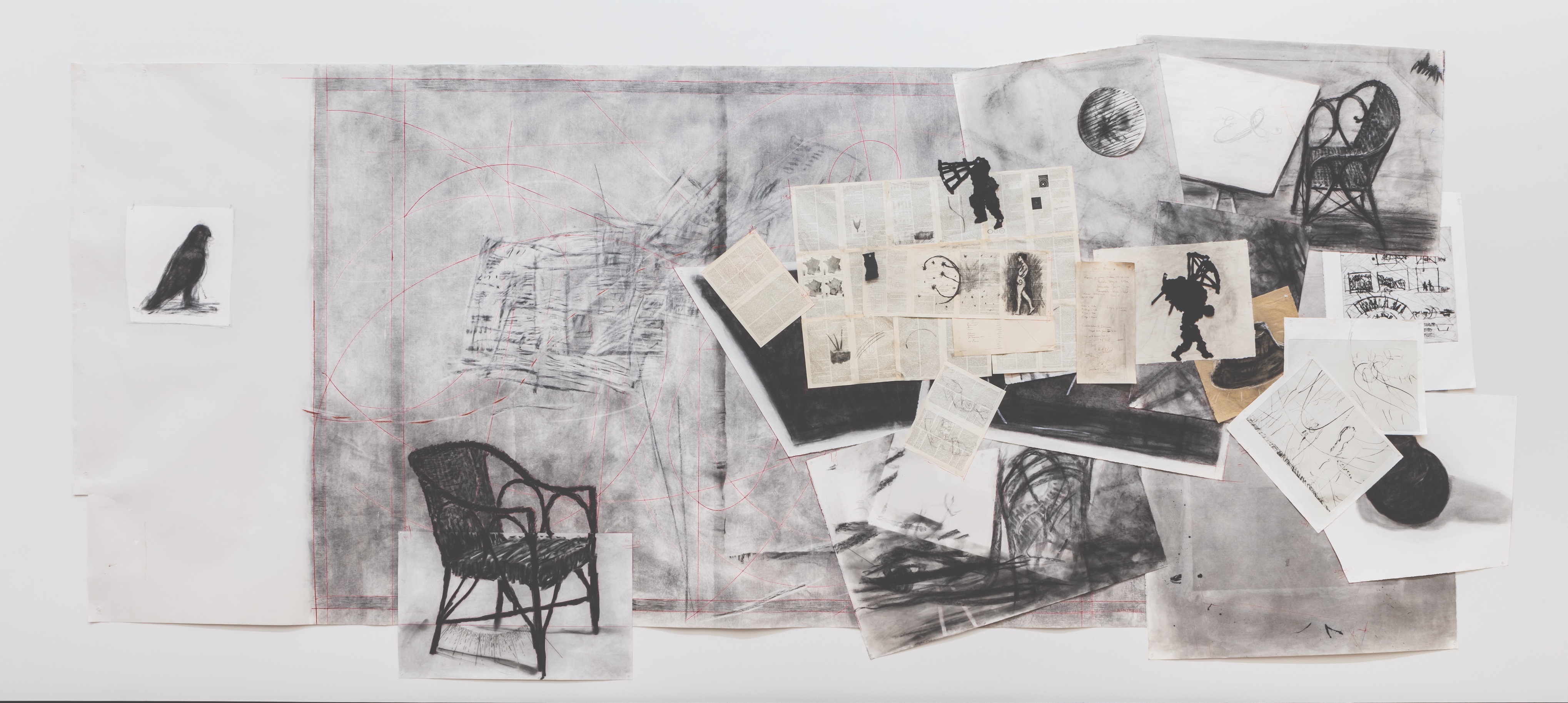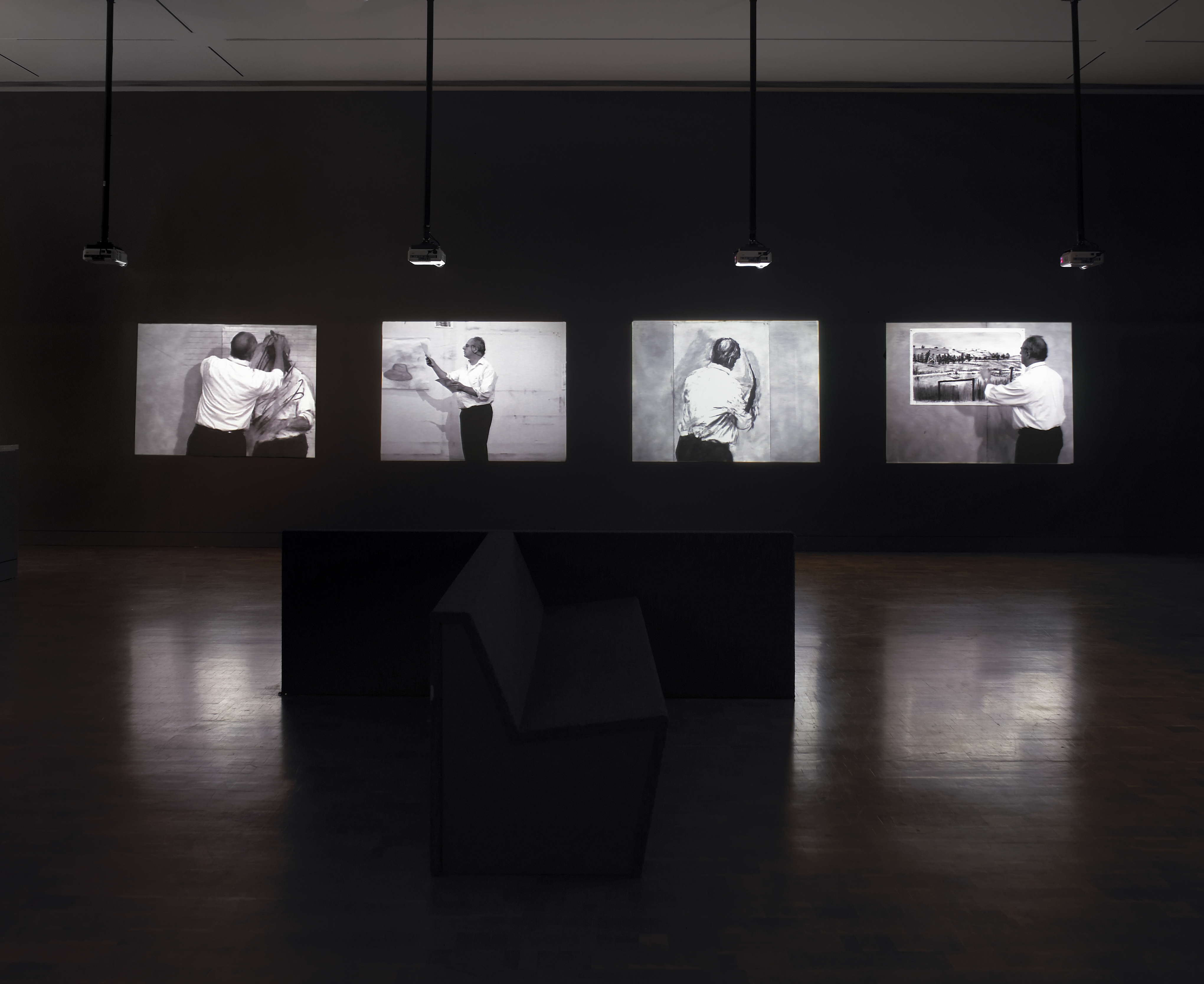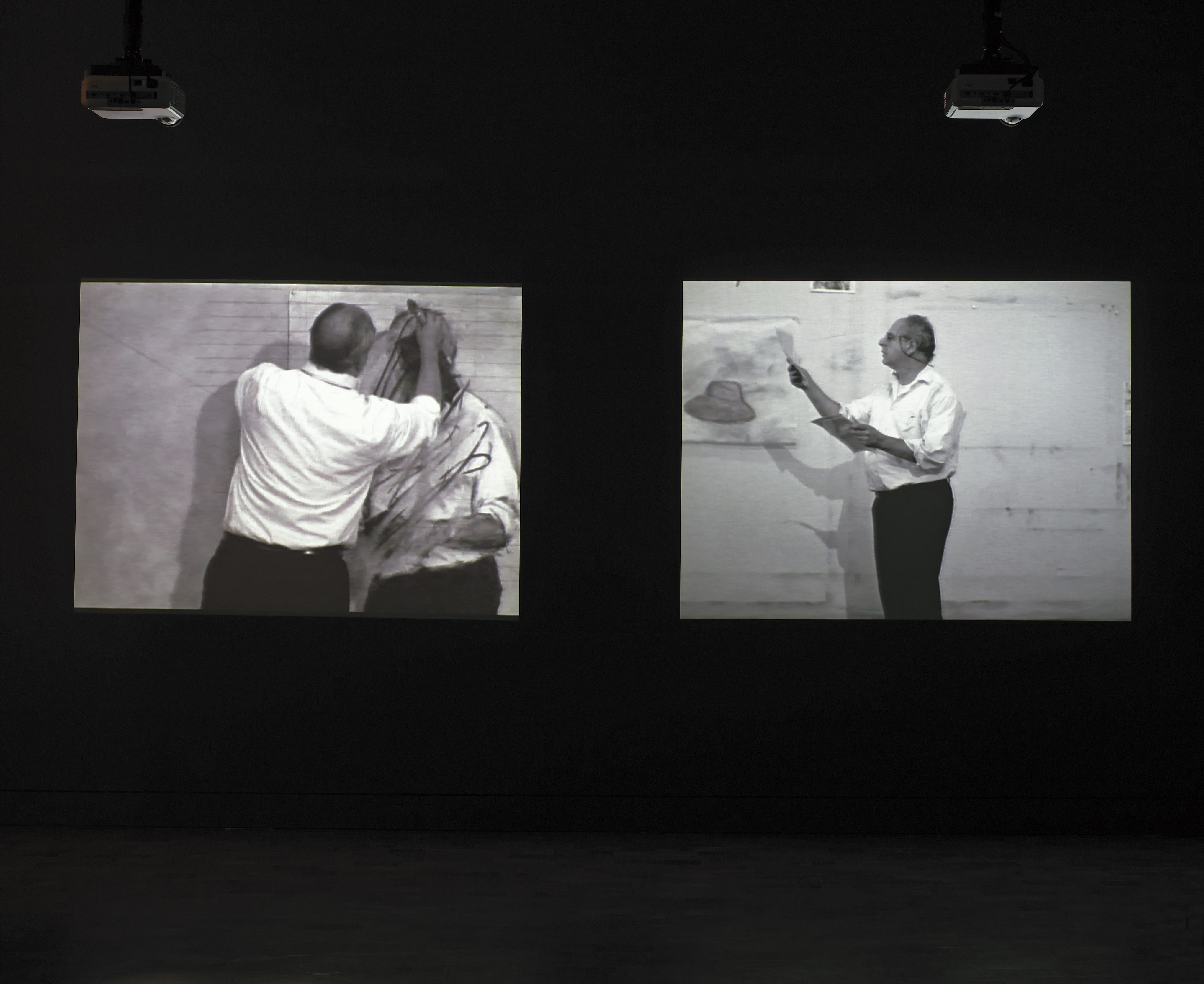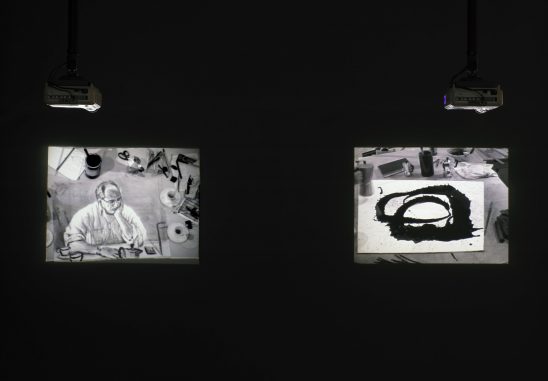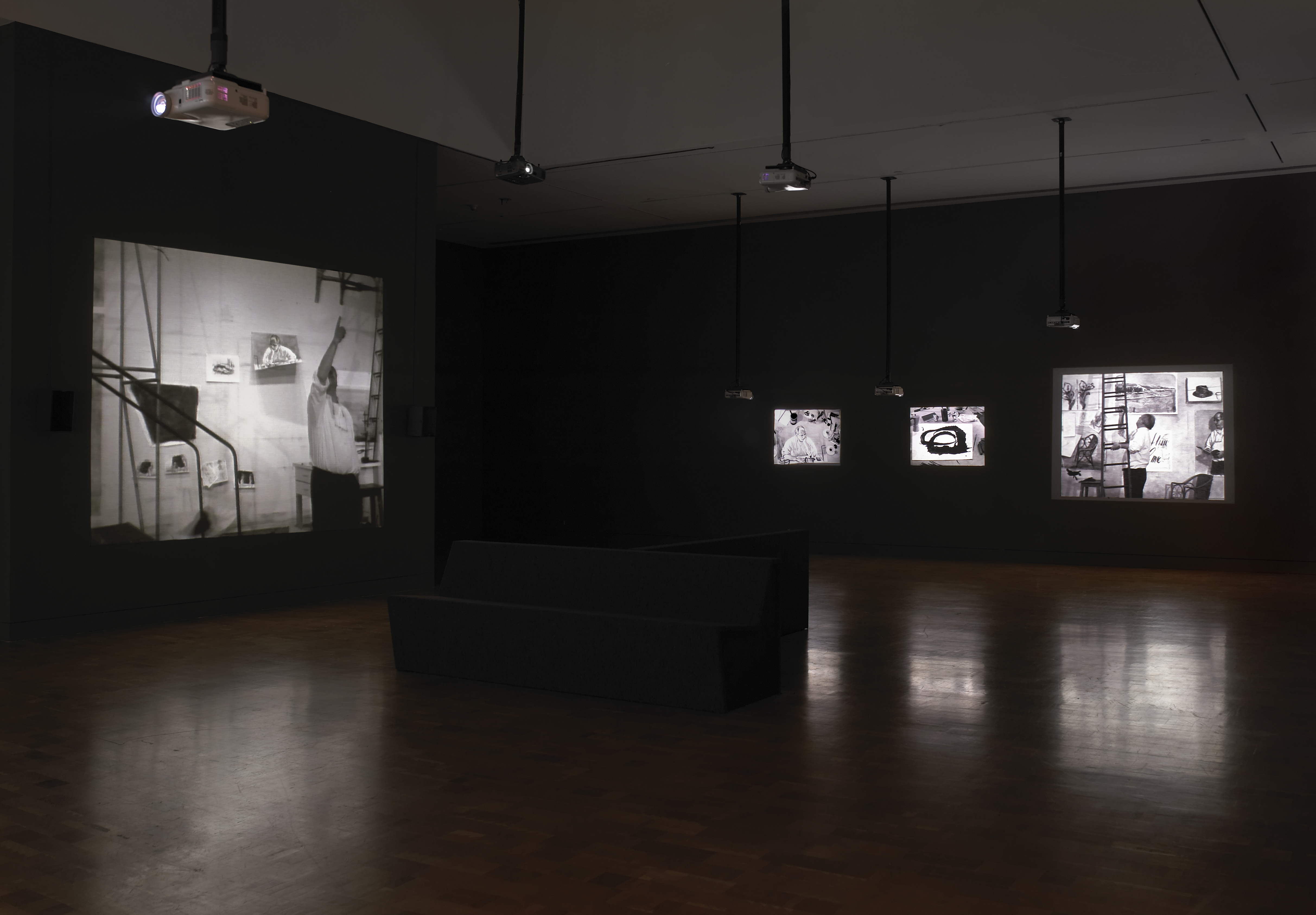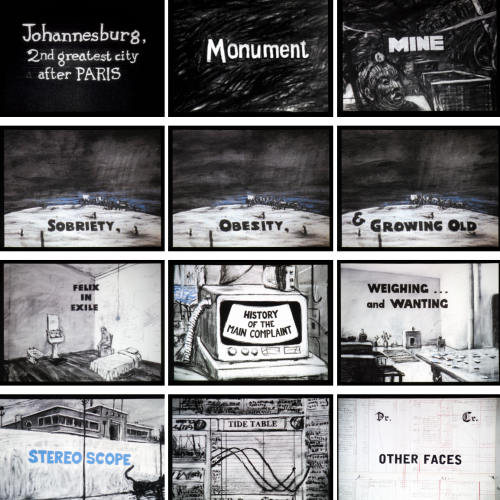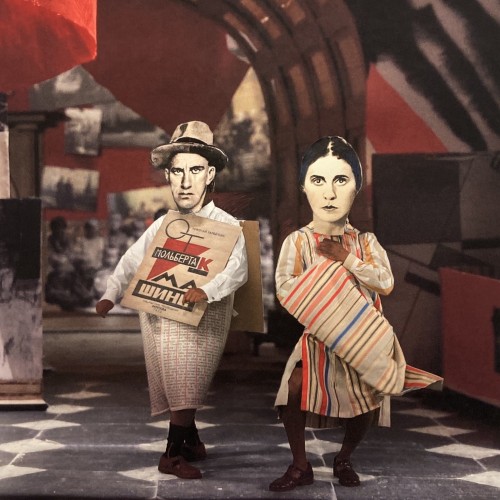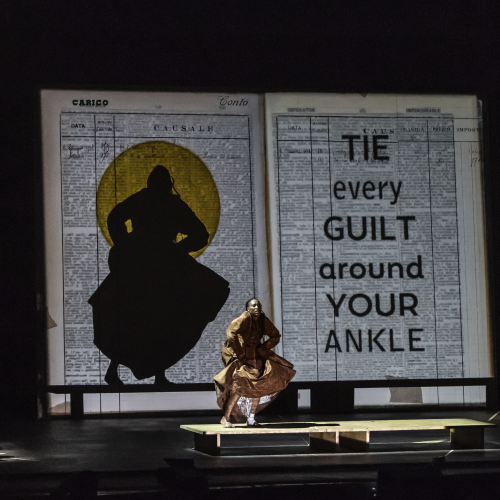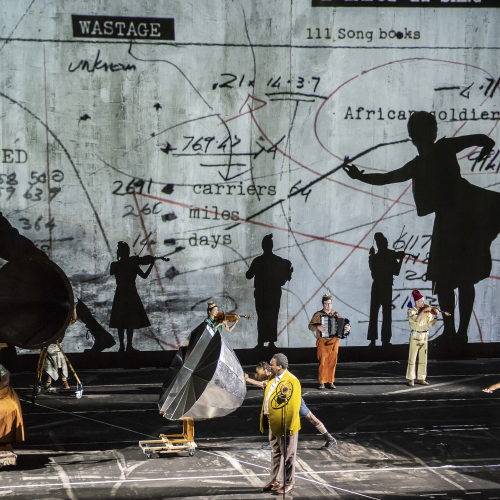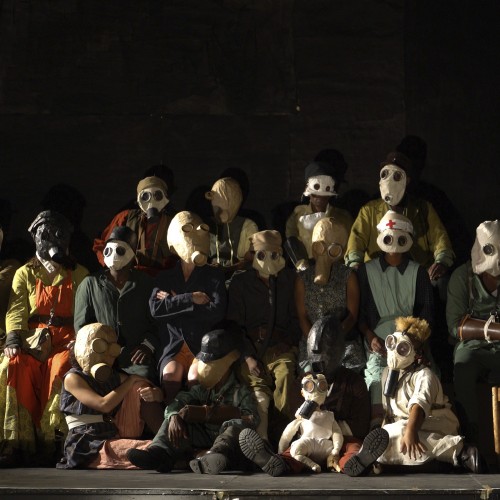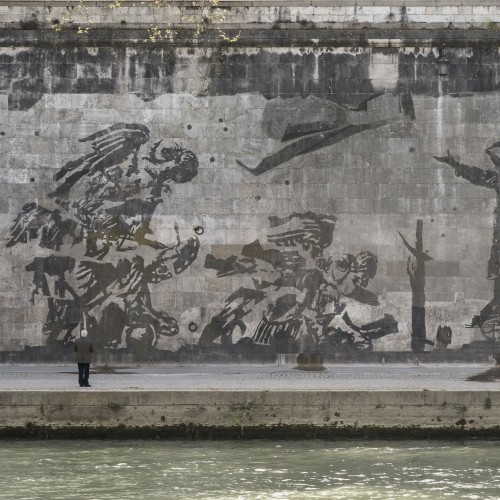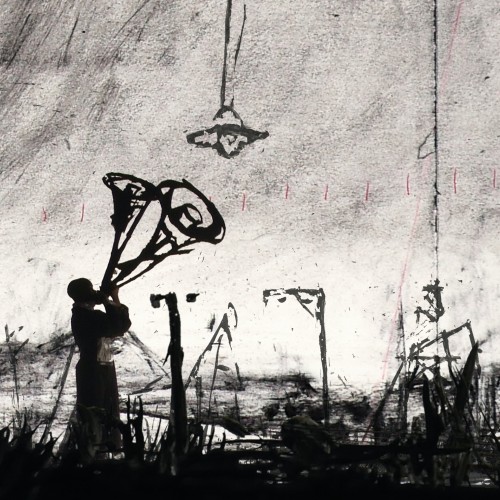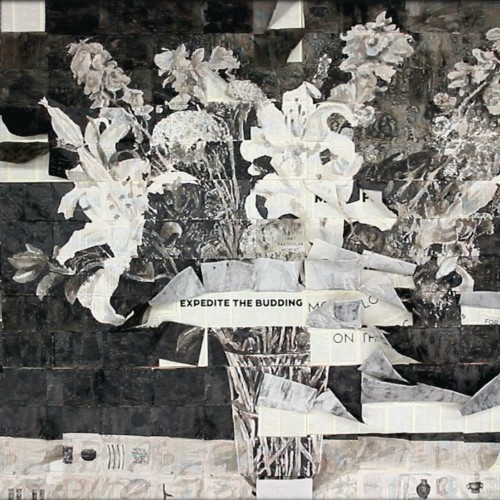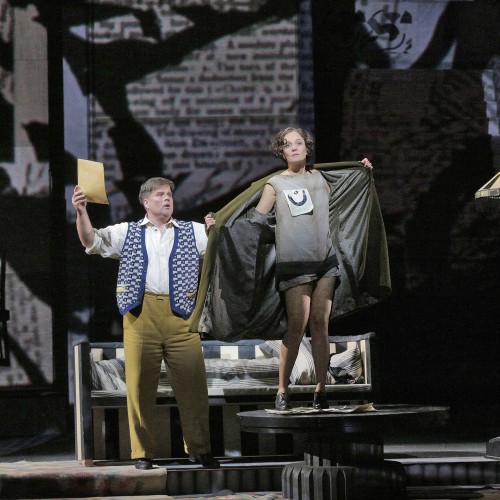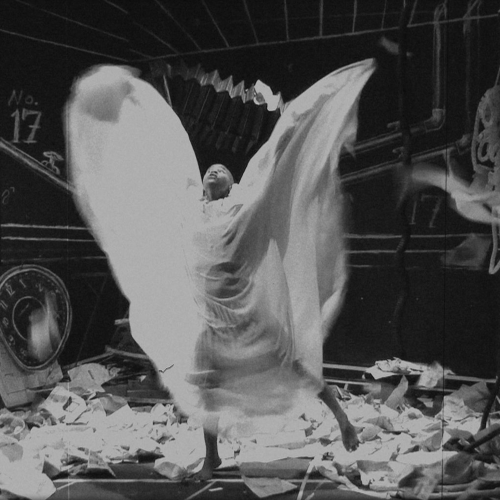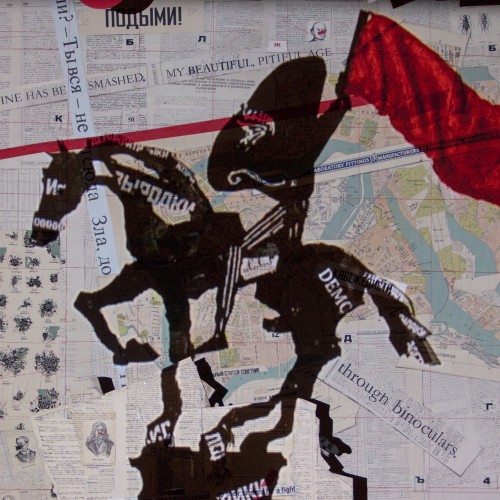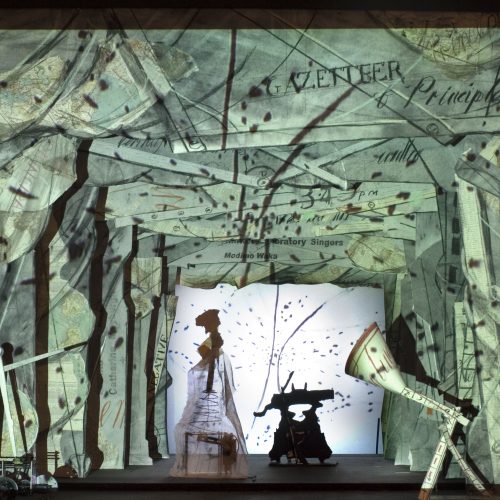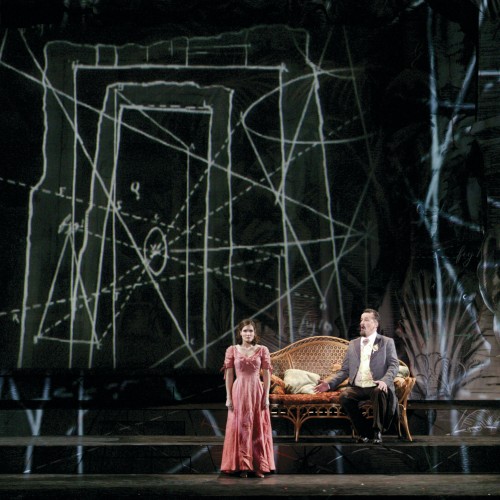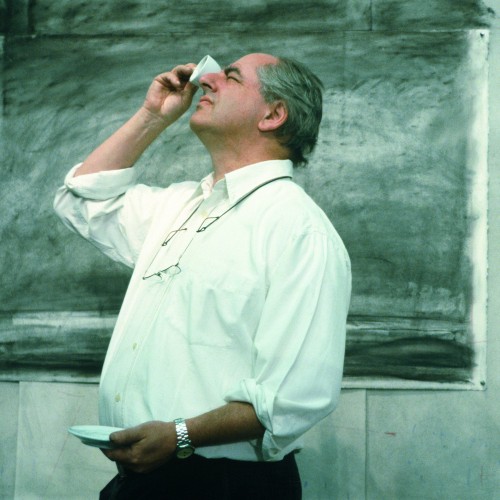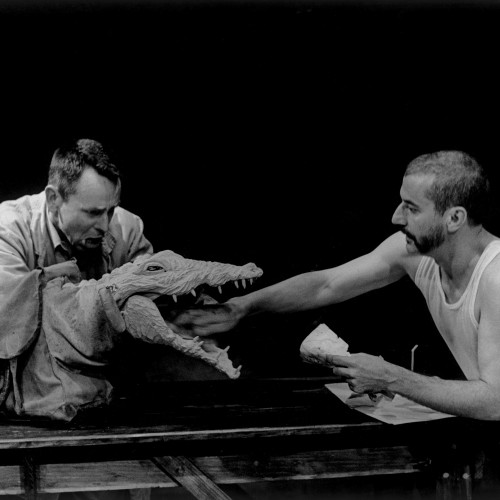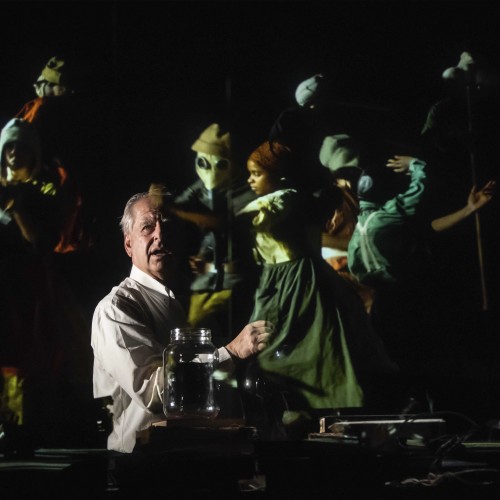Méliès, Pollock, Naumann
Last year I spent some time looking at the early films of Bruce Nauman, films of him walking backwards and forwards in his studio, of him bouncing a ball, walking in slow motion, walking with contra-posto, doing a ‘Beckett’ walk. Perhaps it was the athletic body in jeans and T-shirt that reminded me of the films of Jackson Pollock painting in his studio. It was as if Pollock’s canvas had been taken away and Nauman’s left, with the studio as canvas and himself as brush and mark in one. When I saw the films of George Méliès I was struck by the continuity. Méliès’ films are studio films par excellence. The artist Méliès is in the studio performing in front of his paintings. Although Méliès’ films had many subjects – with a predilection for devils, romantic classics, conjuring tricks performed in front of the camera – the central subject is always Méliès and his painted sets, the artist using the images he has made to try and see himself. When I came to work on the fragments for Méliès, the given, the parameter, was the artist in the studio. I kept hoping the fragments would expand beyond this tight world, but somehow all of them, even Journey to the Moon, kept within this frame.
-
+ Credits
7 Fragments for Georges Méliès
2003
16 mm and 35 mm film transferred to video, colour, silent
Invisible Mending, 1:30 minutes
Balancing Act, 1:20 minutes
Tabula Rasa I, 2:50 minutes
Tabula Rasa II, 2:10 minutes
Moveable Assets, 2:40 minutes
Auto-didact, 5:10 minutes
Feats of Prestidigitation, 1:50 minutes
Video Editor
Catherine Meyburgh
Day for Night
2003
16 mm and 35 mm film transferred to video, colour, silent
6:32 minutes
Video Editor
Catherine Meyburgh
Journey to the Moon
2003
16 mm and 35 mm film transferred to video, black and white, silent
7:10 minutes
Video Editor
Catherine Meyburgh
Music
Philip Miller
Piano
Jill Richards
Making
At first I had thought to do a whole series of films running backwards; Reversals of Fortune or Anti-entropy it was to be called. The technique or possibility is used a lot in the Méliès fragments, but not in the exclusive way as I had first imagined. I suppose the possibility of reversing film or tape is so seductive because of its immediately revealing what the world is like if time is reversed, what it would be like if we could remember the future. Film reversed shows an utopian perfection of one’s skills. Throw a pot of paint and when you catch it in reverse, not a single drop is spilt. Tear a sheet of paper in half and it restores itself without the smallest crease. There is an extreme politeness of objects; pull a book out of a shelf and when you replace it, the books at each side at the last instance shift just the right amount to make space. From chaos there is return to order. The page of text returns letter by letter, word by word into the pen, leaving the load of ink pregnant with infinite possibilities.
7 Fragments for Georges Méliès
Georges Méliès. I was told by an encyclopedia of film that Méliès was the son of a wealthy footwear manufacturer born in Paris in 1861, studied at the Ecole des Beaux-Arts, saw a stage conjurer in London in 1884, left his father’s business and bought the theatre of Robert Houdin in 1888, performed acts of conjuring and illusion in his theatres, saw some of the early films of the Lumière brothers, started showing some films in his theatre as part of his act, in 1896 started making his own films, producing 78 in 1897 alone, started making films indoors with the aid of artificial lighting, developed a wide range of tricks and effects using stop-motion, dissolves and multiple exposures, achieved great popularity by 1903, was bankrupt by 1915, made a living in his later years by running a toy concession with his wife at the Montparnasse railway station. Among his films were Séance de Prestidigitation, Tribulations d’un Concierge, Exécution d’un Espion, La Cigale et la Fourni, Magie Diabolique, L’Homme-Orchestre, La Maison Tranquille, Le Voyage dans la Lune, La Femme Volante, L’Equilibre Impossible, Le Cake-Walk Infernal.
Invisible Mending
Tabula Rasa I
In making some of the material in Tabula Rasa I and in Journey to the Moon, in which there is a combination of seeing a hand drawing and lines drawing themselves, I was forced into a further reversal. To do the animation I needed my dominant right hand to be free to make the drawings frame by frame. I held a stick of charcoal in my left hand. It appears to be drawing, but in fact is mostly still or moved imperceptibly, without making a mark. To make it appear correct when projected, I swapped the watch to my right wrist, used – when I remembered – a mirror script, and when the film was finished, flipped it from left to right, so I appeared right-handed again; except that on screen my left hand does a very unconvincing performance as my right.
Tabula Rasa II
Balancing Act
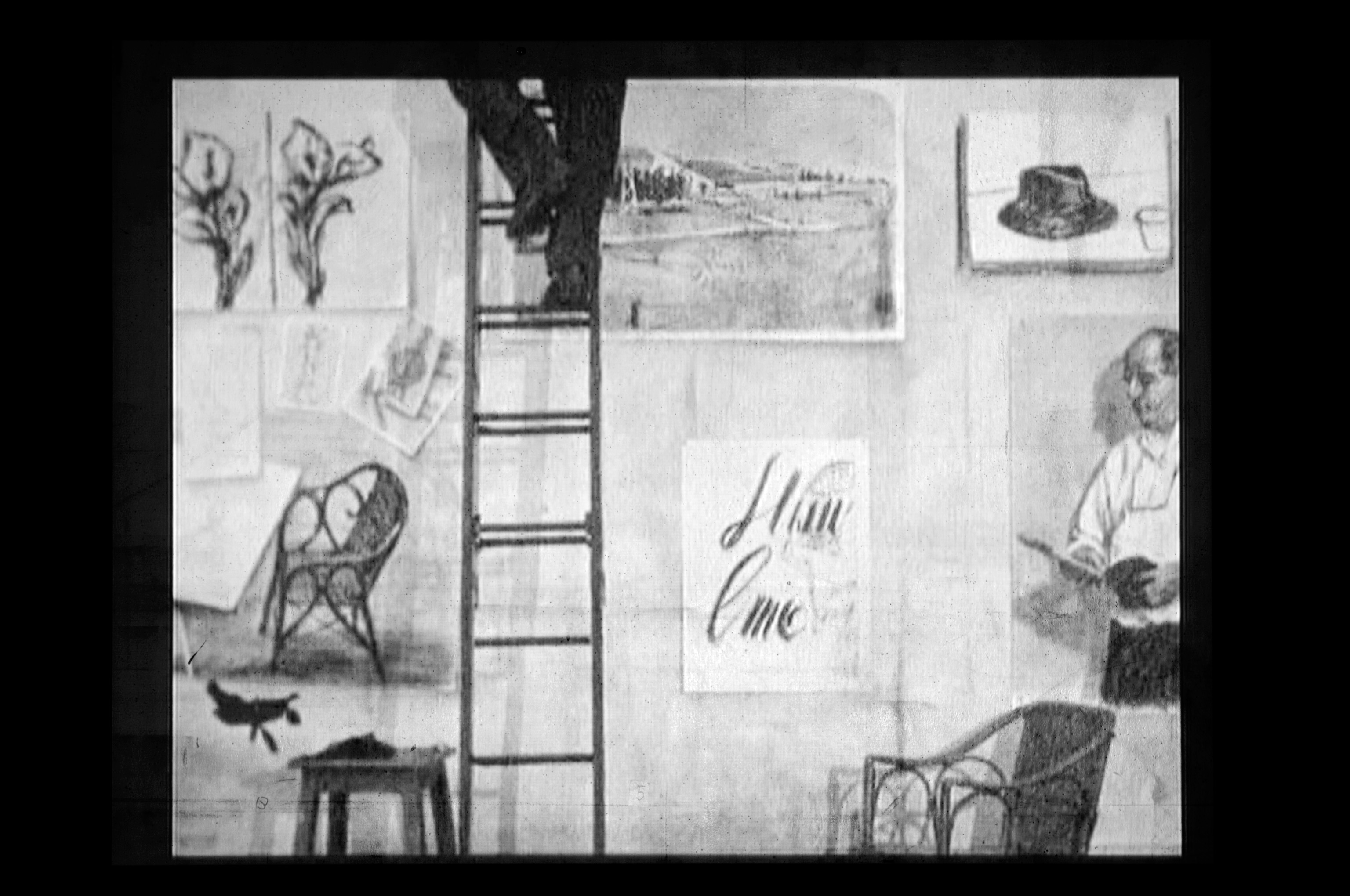
The fragments were made using a 16mm camera that ran at normal speed i.e. 24 frames per second and a 35mm animation camera that would only shoot one frame at a time, approximately one frame each second. So some of the movements are performed at a normal speed but many – the pacings to-and-fro across the studio – were performed at an extreme slowness. Ideally they should have been a 1/24th of normal speed so that when the film was projected the appearance would match that of the film shot in real time. It demanded a kind of controlled movement, slow and even more exact than Nauman at his most minimal. A physical control I by no means had. In the end I had to compensate by slowing my movement down even further, by transferring the film to its final form on video at half or quarter of the normal speed. The record of these performances at an 8th or a 12th of normal speed – a catatonic death march – is, I suspect, material for another project.
Moveable Assets
Feats of Prestidigitation
Auto-Didact
Compilation of excerpts from 7 Fragments for Georges Méliès
Day for Night
We have had a summer plague of ants in Johannesburg, thin trails of them exploring different shelves of the kitchen every night, a syrup stain on a breadboard, a moving black patch in the morning. Examining one such patch I was struck by how the ants themselves made a kind of proto-living drawing, and I videoed this. I was in the middle of work on the fragments for Méliès.
I was behind schedule and should not have been doing anything except work on these films, but the ants were intriguing. The fact that they were looked at and filmed from above made the surface they were on a flat plane. the first thing I filmed was a breadboard, but it could have been a piece of paper. The second association was that of surveillance, of a satellite scrutinising the world below. Zooming in on the ants, the black shape or line seen from afar (about one metre) changed. Close-up the ants at the edge of the sugar resembled an aerial photo of cars lined up at a shopping mall. I started filming the ants in parallel to working on the Méliès films.
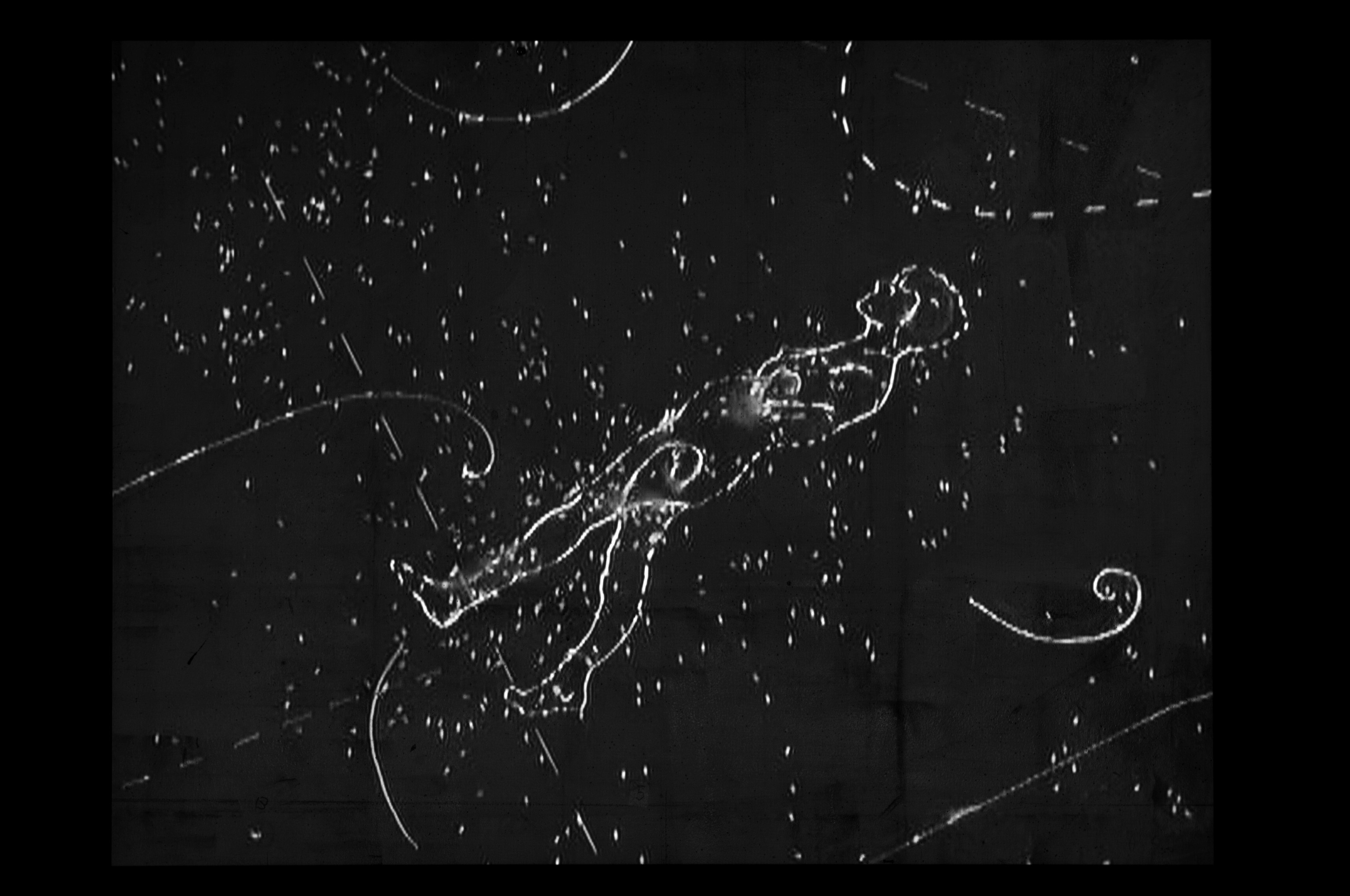
Excerpt from complete film
Journey to the Moon
A bullet-shaped rocket crashes into the surface of the moon, a fat cigar plunged into a round face. When I watched the Méliès film for the first time at the start of this project, I realised that I knew this image from years before I had heard of Méliès. I was far advanced in the making of the fragments for Méliès. I had resisted any narrative pressure, making the premise of the series, what arrives when the artist wanders around his studio. What arrived was the need to do at least one film which surrendered to narrative push. [….]
Méliès’ moon is of course a late 19th century colonial moon, an image of difficult terrain and savages. My lunar landscape is Germiston, just outside Johannesburg; in effect the same landscape from which the rocket takes off. In my head while making the film, there was inescapably Jules Verne’s book (which I don’t think I have ever read but for which I have seen illustrations), 2001 A Space Odyssey – there is a momentary reference to this; the Wallace & Grommit film, A Grand Day Out; and of course Méliès. It strikes me now that he also uses live performers as planets and stars; although my ants were smaller and more numerous than his showgirls. If the seven earlier fragments are about wandering around the studio waiting for something to happen, Journey to the Moon was an attempt to escape. Méliès’ hero returns to a civic celebration; mine is still stuck in his rocket. […]
When starting Journey to Moon, I had thought that the people on the moon – that is the people around Johannesburg – would be shown using torn black paper cut-outs, as they are. But when I tried to bring some of the shadow figures inside the rocket, they appeared ill at ease, forced. Instead, I wanted a close-up of my feet in their shapeless boots walking across the studio; at which point it became clear whose feet needed to accompany them.
Excerpt from complete film
Drawings
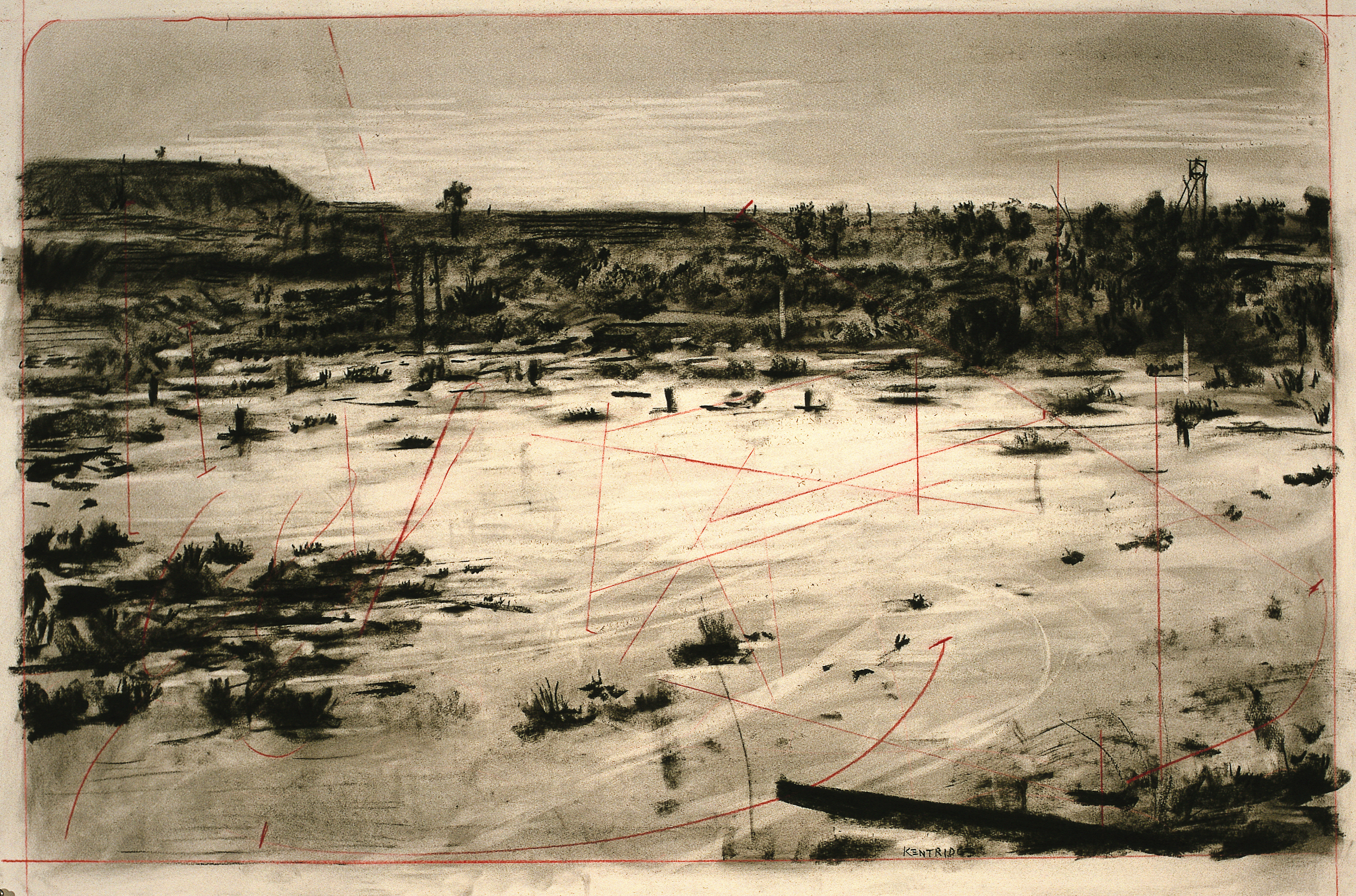
Installation
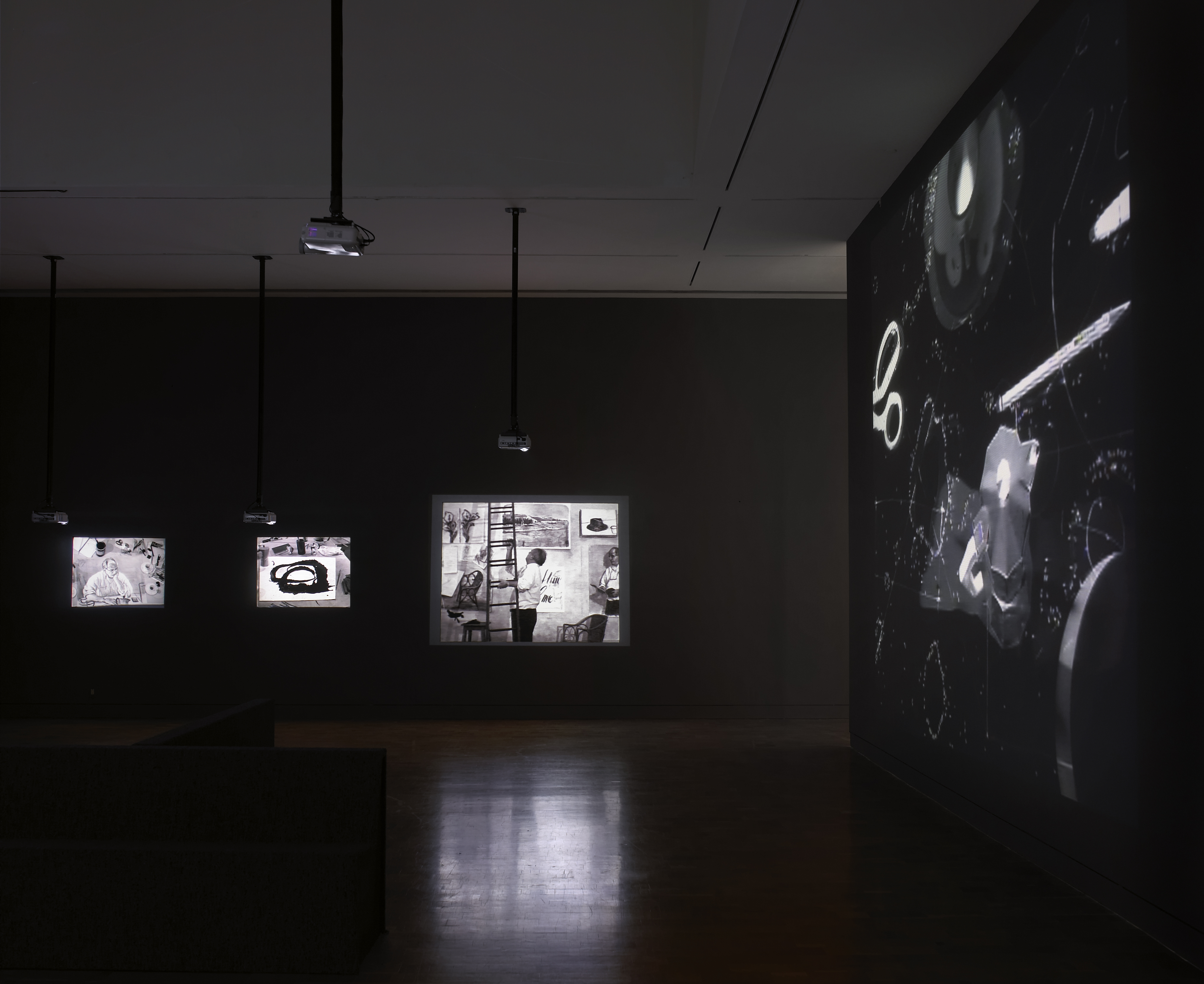
More projects
Credits
7 Fragments for Georges Méliès
2003
16 mm and 35 mm film transferred to video, colour, silent
Invisible Mending, 1:30 minutes
Balancing Act, 1:20 minutes
Tabula Rasa I, 2:50 minutes
Tabula Rasa II, 2:10 minutes
Moveable Assets, 2:40 minutes
Auto-didact, 5:10 minutes
Feats of Prestidigitation, 1:50 minutes
Video Editor
Catherine Meyburgh
Day for Night
2003
16 mm and 35 mm film transferred to video, colour, silent
6:32 minutes
Video Editor
Catherine Meyburgh
Journey to the Moon
2003
16 mm and 35 mm film transferred to video, black and white, silent
7:10 minutes
Video Editor
Catherine Meyburgh
Music
Philip Miller
Piano
Jill Richards
